DEERFIELD



Summer Arts Camp (DASAC, to those in the know) kicks off the first of two lively sessions, and the Experimentory welcomes more than 50 sixth, seventh, and eighth graders who move into Johnson-Doubleday Dormitory: ready to “maximize creativity and character” for three weeks. Throw in an athletics camp or two, and campus is anything but quiet. This issue of Deerfield Magazine focuses on the recent Spring Term, which was also anything but quiet. Throughout the term, we witnessed remarkable achievements, academic excellence, and outstanding performances in athletics and the arts. Our students never fail to amaze us with their talents and dedication, and from the classrooms to the fields, they embraced challenges and grew as individuals, showcasing the true spirit of Deerfield Academy. That spirit is reflected in the following pages.
Head of School John Austin’s Spring Family Weekend Remarks, which begin on page 3, are a wonderful first-person perspective of the term; he also provides a preview of exciting initiatives to come. “The Joy of JV,”
(page 32), features some of our spring athletes and speaks to the enduring value of a program that teaches collaboration, resilience, and the happiness that can come from stepping outside of one’s comfort zone.
During Reunion Weekend in June, I had the pleasure of joining the Great Class of 1958 for their Saturday afternoon Class Meeting, where “AI”—and specifically ChatGPT—was a hot topic, just as it was during the school year. Early in January, Deerfield’s Dean of Academic Affairs, Anne Bruder, wrote a thoughtful, forward-looking piece for Education Week, which can be found on page 38. A Deerfield Forum, titled “Artificial Intelligence and the Future of Being Human,” was held in April. It featured a panel of experts on the topic, and the QR code at the end of Dr. Bruder’s article leads to a recording of the event. As was mentioned to the Class of ’58, it is worth watching.
Finally, a word about our cover. This spring, the Academy’s Theater Department was pleased to present Louisa May Alcott’s Little Women, as adapted by actor and playwright Kate Hamill. Cast and crew embraced this classic story with modern nuances—breathing new life into the March family and their journey of love, resilience, and growth. And our community was reminded that we often find ourselves as the March family did: at the intersection of old and new. At Deerfield, it’s a place where tradition meets innovation, and the history of our school intertwines with progress, as it has for decades. I hope you enjoy everything this issue of our magazine has to offer, and I look forward to sharing the Academy’s continued progress with you.
Jessica Day Director of Communications/ Editor-in-Chief
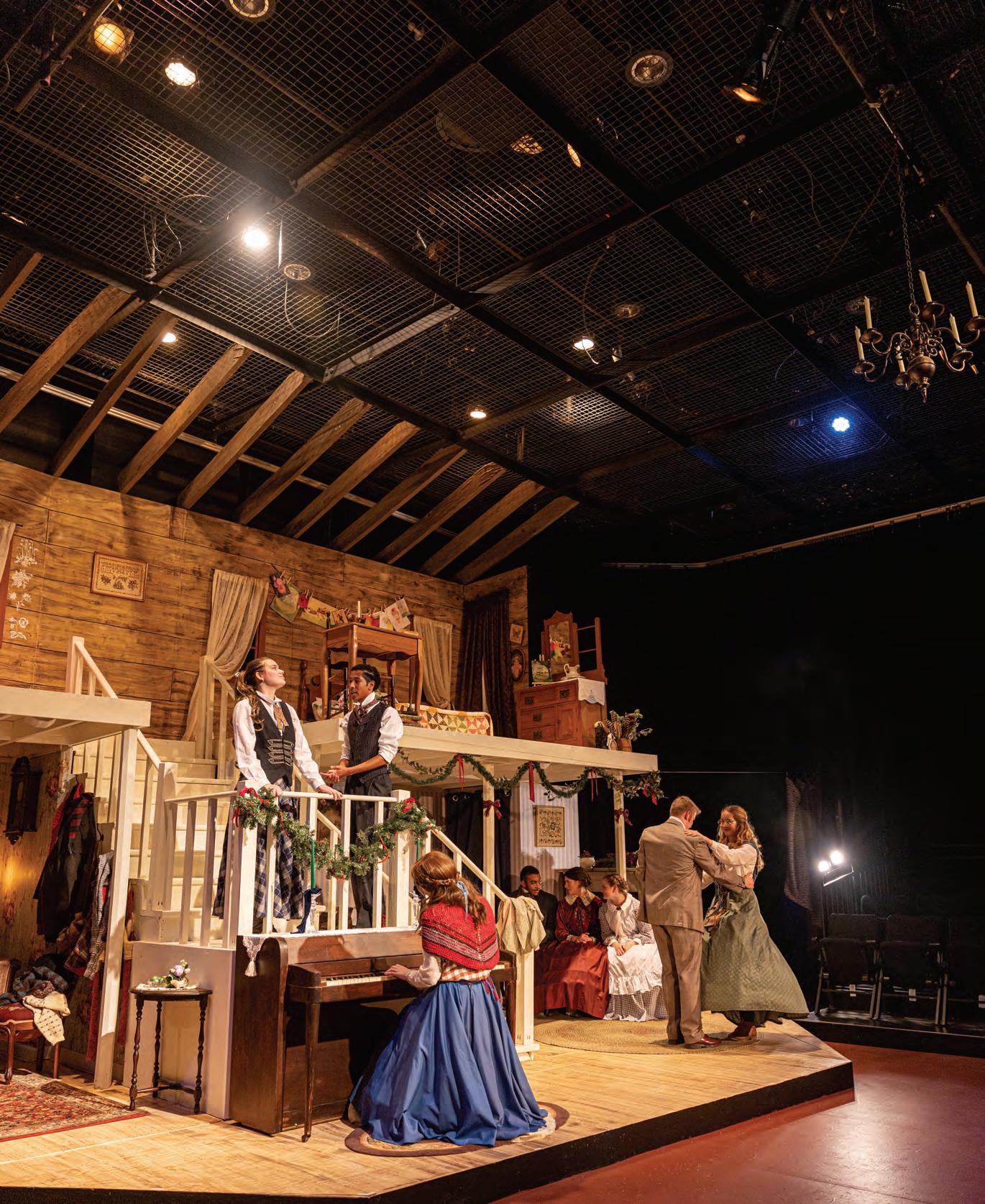
WGAJ was a big deal during my years at DA. It was the mid 90s, and the music of Gen X ruled the airwaves. I rolled onto campus as an incoming sophomore in the fall of ’94, a California transplant, a fan of alternative female artists and big into folk music from the 60s and 70s. We couldn’t live the upheaval of those times, so we lived the music. I heard through the grapevine that getting a show as a sophomore was tough. When I auditioned, I made sure I was available for the early am shows and ended up with a weekend morning show in the spring of ’95. As a day student, I had to do some fancy footwork to show up, but music was my love in those days, so I made it work.

‘GAJ,’ as we called it, was a place of refuge, offering a break from the often rigid expectations of campus culture. A space to express our feelings and experiences, to get an hour of reprieve from our studies, to chill in the booth with good music and friends. Crushes were pursued, and at least one first kiss occurred under the auspices of hanging out during my show— there were no parietals at the radio station.
By the fall of ’96, I was one of three senior music directors. Every night I tuned in on my drive home to Northampton, losing the signal just as I cleared the I-91 exit. I posted the college music hit list for CMJ (College Music Journal). Griffin James ’97, also a day student, (now deceased) ran the metal hit list. I played Tori Amos, Griff played Tool—it was the music of our generation. Our third co-director slipped through the cracks at some point during the busy-ness of senior fall. Ame Igharo ’98, a junior, ran t he beat box hit list. At the helm of ’GAJ was Brooke Gonzalez ’97 (also passed), our first female GM and one of many first female heads of DA clubs that the Class of ’97 generated. Her show always began with Toto’s ‘Africa,’ and to this day, when I hear that song, I think of her. For Griff, it’s Tool’s ‘Stinkfist.’ As day students, Griff and I ran our programs through the summer after graduation, turning them into two-hour evening shows while we worked summer jobs on campus.
It saddens me that neither Brooke nor Griffin is here to share their ’GAJ stories, so it’s left to me to share memories of radio days during the early years of coeducation.
Warmly,
Alenka Bartoli ’97I am writing regarding the article about DRB in the Winter ’23 issue. The article filled in some history of DRB before my time, so I am offering a few recollections about Deerfield radio during 1974-1977.
The station’s studio was still in Memorial Hall when several of us (Class of ’77) took an interest in DRB. A few of us with an interest to revive the station gained access to the studios. There was little studio equipment, as I recall, beside a turntable and a Hammarlund shortwave receiver connected to an antenna running to the classroom building. Several of us put up wallboard and finished additional space next to the original studio, as part of a plan to reactivate the station on the FM band.
There was no station license at the time. A few of us worked on an application to the FCC to license WDRB as an FM station. My special role was to obtain an operator’s license, so I studied radio electronics in my spare time and one day made my way to Customs House in Boston to sit for the exam. It was a bit odd to be about 10-20 years younger than the rest of the test takers. The study paid off, and the FCC granted me a license to operate an FM station. At some point, I recall we tried to work on old commercial FM transmitter that someone had donated. It was large and too complex for our skill level.
My operator’s license proved welcome when I showed up at Wesleyan in the fall. The WESU chief engineer was a senior, and the station was delighted to have a new student who was properly licensed. I spent four years working with WESU (1000 watts FM) in large part because of our efforts on FM radio at Deerfield. Perhaps some of my classmates and others can add their recollections to this period.
Thanks,
Chuck Zabriskie ’77Produced by the Deerfield Academy Communications Office: Deerfield Academy, Deerfield, MA 01342. Telephone: 413-774-1860 communications@deerfield.edu
Publication Office: Cummings Printing, Hooksett, NH. Third class postage paid at Deerfield, Massachusetts, and additional mailing office. Deerfield Magazine is published three times a year.
Deerfield Academy does not discriminate against any individual on the basis of race, color, religion, sex, sexual orientation, transgender status, marital status, national origin, ancestry, genetic information, age, disability, status as a veteran or being a member of the Reserves or National Guard, or any other classification protected under state or federal law. Copyright ©2023 The Trustees of Deerfield Academy (all rights reserved)
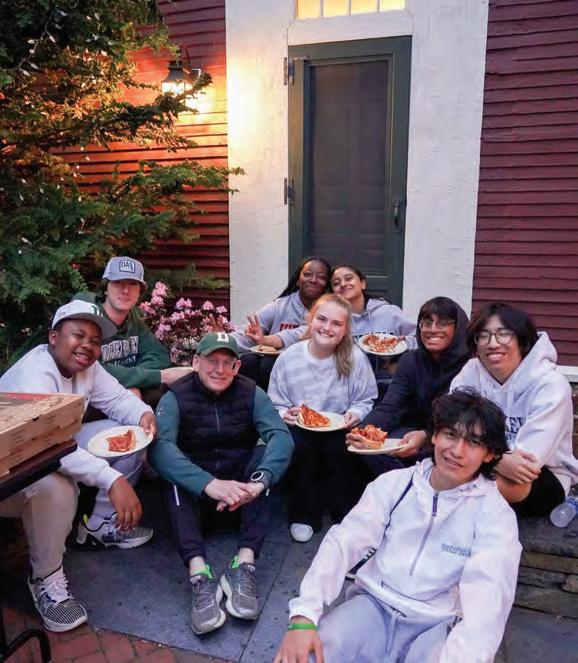
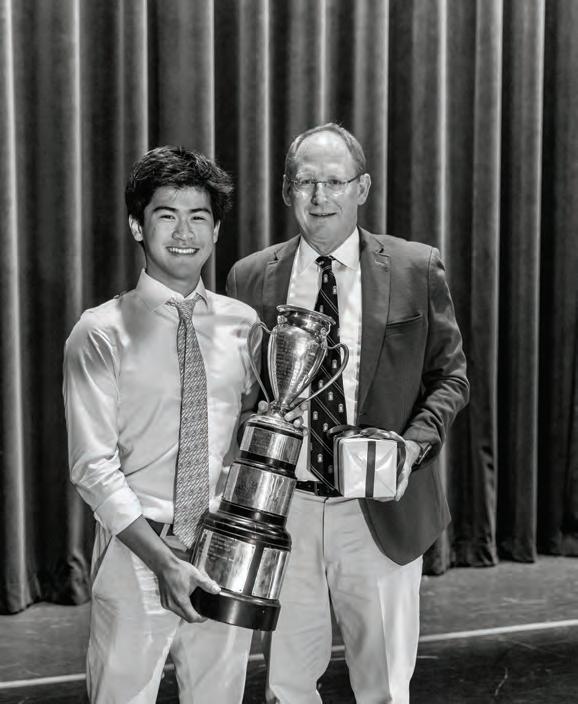
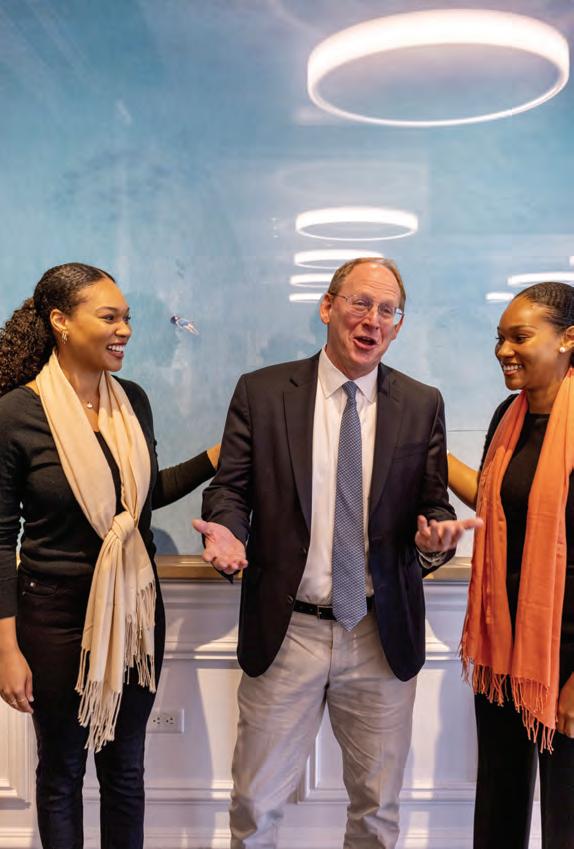
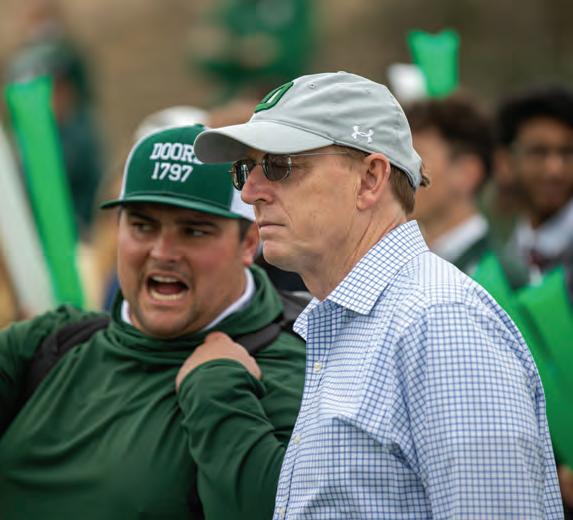
Current Deerfield families enjoyed sunny skies, visits to classrooms, and Dr. Austin’s remarks during Spring Family Weekend in late April. Below is an abbreviated version of those remarks, which provide an excellent summary of the Spring Term, and a preview of future endeavors.
The feeling on campus turns with the change of every season. With spring, a new energy is released as the days lengthen, the weather warms, and the greenness of our campus and the surrounding hills come alive again. You can see students sunbathing on the Lower Level, walking and hiking to the Rock, and “shriving” in the River. And, of course, our seniors bring a mixture of feelings to these final weeks as they reflect on their experiences here, savor time with friends, and look with excitement and a sense of opportunity to the years ahead.
I always say that the success of any school year depends on the leadership and engagement of its senior class; they set the tone, they lead the way, and they create the goodness of this school. And this year’s class has been exceptional. By chance, my youngest daughter, Maia, graduates from her school on the same day at the same time of Deerfield’s Commencement, so I will be recording a video message for our Commencement this year. And I have to say: This was not an easy choice for me. This class entered with Monica and me. We have journeyed through the last four extraordinary years together, shoulder to shoulder, and they will always have a special place in my heart.
Deerfield hosted the annual spring meeting of trustees and heads of the Eight Schools Association —our peer boarding schools in New England and the Mid-Atlantic. Many of those in attendance mentioned to me how friendly and welcoming our students are, and how impressed they were by the positive energy on campus. They could see and feel our strong and powerful sense of community. That is always gratifying to hear, and even more so when it comes from respected colleagues such as fellow heads of schools.
I think I have been able to see every team play this spring. A highlight for me, thus far, was a testy, competitive mid-week Ultimate Frisbee match against one of our peer schools. One of the reasons I love watching Ultimate is that players serve as their own referees. This makes for some entertaining on-field discussion, especially when our opponents seem to be playing a sport more akin to ice hockey or football than Ultimate, as our opponent was on this particular afternoon. Occasionally, the game just stops, as players debate a called foul and resolve disagreements of interpretation. I’m still working out the rules, which is ok; I have been working out the rules for girls field hockey for 42 years, but it did seem to me that we lost more than one discussion that should have properly gone our way. I attribute this to our magnificent sportsmanship, our flexibility of mind, and willingness to compromise. It may have also had something to do with the size of our lead; we won this game by a considerable margin, so the stakes were much lower with each contested call.
Our spring arts performances build slowly over the course of the term, and we have had some wonderful performances and concerts; at least one performance is a staple of our School Meetings. I’m always in awe of our student artists’ talent and commitment to craft.
Over the previous few years, we have welcomed to campus some extraordinary speakers: presidents of colleges and universities, a Nobel Prize winner, military and civic leaders, authors, scientists, and artists, and this year is no exception. In January, we heard from Pulitzer Prize-winning poet and former US Poet Laureate Tracy K. Smith and National Book Award winner and poet Terrance Hayes. You don’t often get a Pulitzer Prize and National Book winner in the span of four days: but we did. Last week we heard from Maya and Denley Delaney, sisters and Deerfield graduates from the Class of 2013, who received the Ashley Award for outstanding service to their communities. As one student said to a member of the faculty, it was like hearing two Commencement addresses in row—and in less than 20 minutes. They spoke on their work in the fields of oceanography and environmental sustainability in the Caribbean, and offered students incredibly wise advice. Earlier this week, Hussain Aga Khan, Class of 1992, spoke to students about his conservation efforts and his extraordinary ocean photography, which you can see on display in the Hess Lobby and above the Starfield in the Koch Center.
We also hosted our second annual Deerfield Forum on the topic of “Artificial Intelligence and the Future of Learning.” The purpose of the Forum is to model constructive and scholarly debate and stage respective and searching civic dialogue for students. This year’s Forum featured Dr. Stuart Russell, a professor of computers, science, and engineering at UC Berkeley—he recently delivered the prestigious BBC Reith lectures—and researcher, professor, and writer Melanie Mitchell. Both are leading experts on generative artificial intelligence and machine learning. The panel was moderated by the author Steven Johnson.
It was a wide-ranging discussion that touched on the nature of intelligence and cognition; possible impacts of AI on how we think and learn; the risks artificial intelligence poses to the integrity of our political and economic systems; and debates about how it should be regulated. Dr. Russell, just prior to his appearance at Deerfield, spearheaded an effort to place a moratorium on the development of AI systems more powerful than ChatGPT4. That debate will likely continue, but two things seem certain: first, that the development of generative artificial intelligence is moving at an extraordinary pace, and second, that it will have a dramatic impact on teaching, learning, and human creativity—indeed, on all work. I was incredibly impressed by the engagement of our students in this discussion.
We continue to think creatively about our academic program, and our faculty continues to update our course offerings. Even as we limit access to cell phones—a trend I think you will see at more and more schools over the next few years—we also seek to build into our curriculum emerging topics in science and technology and leverage new technologies for learning. Next year, we’ve expanded our course catalog to include advanced courses in the fields of data science and engineering, as well as new offerings in a range of other disciplines.
During an early April faculty meeting, each of our academic departments shared with colleagues the defining learning outcomes of their disciplines as well as the instructional practices that support those outcomes. This important work was a charge given to us by the New England Association of Schools and Colleges as part of our upcoming accreditation process, which will happen next fall. It was the best faculty meeting I’ve been to in my four years. These outcomes reflect and reinforce the mindsets and capacities we have outlined in our portrait of a Deerfield Student, and their explicit articulation will enable us to become more intentional in how we teach and construct curriculum; it will provide a framework for collaboration and future interdisciplinary efforts; and will support mentoring, appraisal, and professional learning at Deerfield.
We were also informed at the end of March that the E. E. Ford Foundation, the leading educational foundation serving American independent schools, has awarded Deerfield Academy an Educational Leadership Grant.
Grants are awarded to schools offering proposals that promise a significant impact on the practice and thinking of independent schools; that are innovative and replicable; that address challenges faced by independent schools; and that encourage bold new ideas, catalyzing change. The grant will support the development and writing of a practical, school-based framework of principles that will:
• foster an intellectual culture for students that actively promote expressive freedom, inquiry, and curiosity without fear;
• develop guidelines to help schools determine when—and if—to assert neutrality on matters of politics and social action;
• promote impartial, nonpartisan teaching in support of student agency and the development of their personal views on matters of public interest;
• and integrate diverse arguments and perspectives in the design of teaching and courses, and in all school activities.
The goals of the framework, which will be written by a nationally representative working group of secondary school heads, are to deepen the national conversation about the critical importance of expressive freedom and open inquiry; provide schools with a meaningful tool for institutional reflection and assessment; and create a vehicle for shared understanding and consensus building among boards, school leaders, teachers, students, and parents.
I believe that it is more important now than ever for schools to develop—and institutionalize —principles of teaching and instruction that support viewpoint diversity, protect the autonomy and independence of students, and equip them to engage with others across difference. Many colleges and professional schools are now moving forcefully in this direction. Over the past two weeks we have seen important statements and initiatives come out of Stanford Law School, Vanderbilt, Harvard, and Cornell. Independent schools such as Deerfield have an obligation to prepare students for a life of pluralistic contention by embracing practices that support inquiry and expressive freedom and discarding those that do not.
We have also been hard at work defining future priorities for the Academy and a comprehensive campaign in support of them.
Great schools—those, like Deerfield, that sustain excellence in learning and leadership over many generations—are confident in their ethos and values, building outward from their defining strengths and distinctive histories. They are also agile, open to change, and attentive to future opportunity. Deerfield’s next campaign will seek to build on our legacy strengths even as we look to the future. In many ways, it will be a campaign about people, about culture, and about community, firmly centered on our students and their experience.
We will seek to increase access and opportunity by fully endowing our existing financial aid commitments and additional resources for families across income levels. Over the last decades increases in tuition have dramatically outpaced income; according to the National Center for Education Statistics, tuition, fees, and room and board for college have increased 59 percent since the year 2000. In contrast, inflation-adjusted median income for people with a BA has risen by five percent over the same time period.
It is critically important that Deerfield ensure access to future generations of students irrespective of their financial resources. That kind of diversity is central to the kinds of learning and interactions that happen at Deerfield, and it’s the best possible preparations for every student’s future. And that commitment to affordability and access has always been part of Deerfield’s DNA—a commitment beautifully articulated by Mr. Boyden’s idea that families should simply “pay what you can.” Deerfield was one of the first American independent schools to extend its reach in this way, and it’s one way that we will seek to be worthy of our heritage.
We will invest in spaces at the school that unite, connect, and create community. We will invest in the renewal of existing residential spaces and additional faculty housing in, or in close proximity to, those spaces . This will enable us to ensure a strong, visible presence of adults on campus and a lower ratio of students to adults in the dorms. We will invest in the renewal of historic buildings including the Main School Building and Arms to create spaces for team teaching, interdisciplinary learning, and collaboration. A great faculty is a learning
Great schools—those, like Deerfield, that sustain excellence in learning and leadership over many generations—are confident in their ethos and values, building outward from their defining strengths and distinctive histories. They are also agile, open to change, and attentive to future opportunity. Deerfield’s next campaign will seek to build on our legacy strengths even as we look to the future. In many ways, it will be a campaign about people, about culture, and about community, firmly centered on our students and their experience.
faculty, and this kind of collaboration fuels creative teaching and instructional design.
And we will invest in a renovated, upgraded, and expanded Dining Hall that can comfortably seat and bring together our entire community. In many ways that space is the beating heart and soul of the school. Our sit-down meals connect students to students and students and faculty in ways that are the envy of our peers, and it is a powerful and enduring bridge between generations of alumni and between Deerfield’s past and present.
We will invest in programmatic renewal and innovation in the form of a ‘Center for the Study of the Liberal Arts.’ This center will seek to renew and invigorate the liberal arts as a lasting source of wisdom and inspiration even as it reimagines them for the 21st century so that our students can meet the challenges and complexities of a future we cannot predict or fully anticipate; it will seek to identify high-impact practices consistent with our philosophy of education; practices that will supercharge the classroom experience for students; it will sponsor the Deerfield Forum—our effort to promote inquiry and expressive freedom; and support summer institutes for professional learning that will bring faculty from other schools to campus (and that, we hope, will strengthen our recruitment efforts) and provide opportunities for growth and renewal.
And we will invest in the high-engagement model of teaching, coaching, and mentoring that has stood at the center of Deerfield for well over a century and that drives the good-
ness and the excellence of the Academy. If asked what is the greatest challenge facing boarding schools today, I would answer in the form of a question: How do we create opportunities for excellence, challenge, and achievement for students and at the same time forge a community characterized by joy, optimism, care and mutual obligation, and connection? After one of our three recent visit back days, a prospective parent wrote to Chip Davis and said that Deerfield was the happiest school they had seen in their many campus visits. Happiness—students thriving and flourishing—is not an accident. It’s the result of careful design, intention, and a deeply-engaged faculty.
Deerfield was founded on the idea that young people can fully flourish while embracing challenge, excellence, and achievement at the highest levels. These are mutually supportive goals, and the principal means by which we achieve this is through the faculty. So, we must invest in their renewal and their growth. We have a long tradition of school leaders and administrators who teach, and of teachers who coach, mentor, and share their lives generously and widely with students across multiple dimensions of school life. I want to sustain this model.
As I recently said to prospective parents, everything—absolutely everything—depends upon the deep, broad, and caring engagement of our faculty and staff. There are, it is true, considerable pressures bearing down on this model of engagement: changing attitudes toward work, increased pressure on faculty time,
increased demands for programmatic excellence everywhere and in every facet of school life, among others. For all of these reasons, it’s critically important that we continue to think creatively about how we support, compensate, renew, and invest in our faculty, and I believe that Deerfield has a unique opportunity to do this better than any school in the country. With your wisdom and support, I know that we can accomplish this, and more. Thank you. //
On May 28, 184 members of the Class of 2023 received their diplomas as the Academy celebrated its 224th Commencement in perfect spring weather. Leila Govi ’93 P’26, President of the Board of Trustees, said: “Class of 2023, as you prepare to take your next steps, remember what Deerfield has given you, the friends who have become your family, the teachers who have become your mentors, the challenges that have become your triumphs. Remember what you have given Deerfield. Your spirit, your camaraderie, your friendships, and your unique experiences. As you leave here today, remember you are forever a part of the Deerfield family. Carry that identity with pride as you carve your own paths, but always carry with you the lessons and memories of Deerfield. Your Deerfield days may be ending, but the bonds you have formed here will remain forever.”
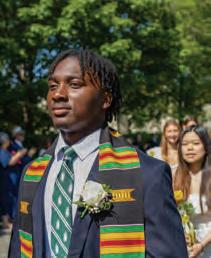

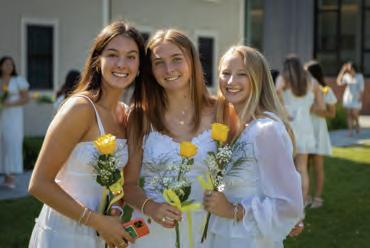

Keynote speaker Rob Hale ’84 P’15,’17,’18 shared reflections of his time on campus as a struggling student and athlete who ultimately persevered. Mr. Hale is currently the co-founder and president of Granite Telecommunications; his exemplary leadership has fostered a business that has not only achieved remarkable success, but also stands as a beacon of corporate responsibility. Granite has been recognized as the most philanthropic company in Massachusetts, and serves as a testament to Mr. Hale’s and his family’s unwavering dedication to giving back to society. Mr. Hale concluded his address with the announcement that he was giving $1000 to each member of the graduating class, and that they should select a nonprofit organization of their choice to receive the funds. His generous announcement was met with a standing ovation from the crowd.
Hale closed with, “ DA Class of 2023, it has been an honor. Congrats on persevering and becoming leaders. Remember, as you go forth, give a little more than you get. Your life will be better for it. Take chances. Your life will be better for it. You’ll enjoy your life more if you do those two things. Congrats, and Godspeed.”
After the class was presented with their diplomas and each graduate signed the alumni book, the Class of ’23 linked arms and together sang the Evensong for the first time as members of the Deerfield Academy Alumni Association. //



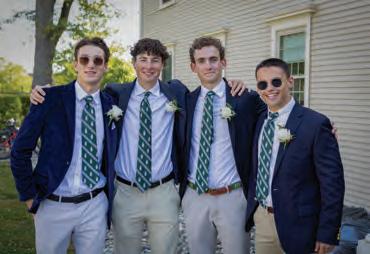
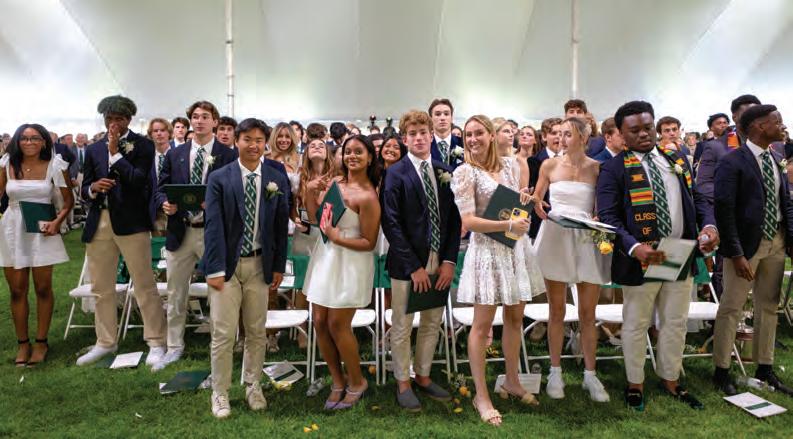
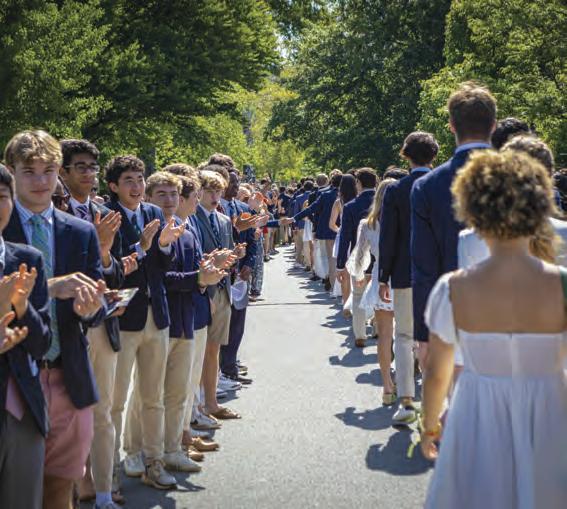

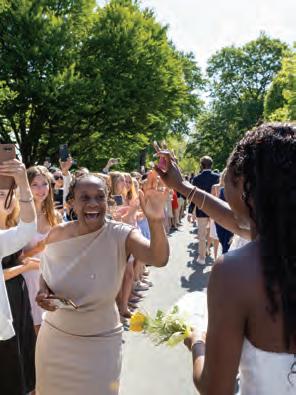
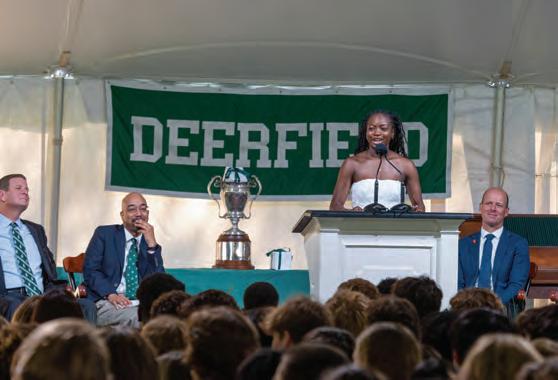
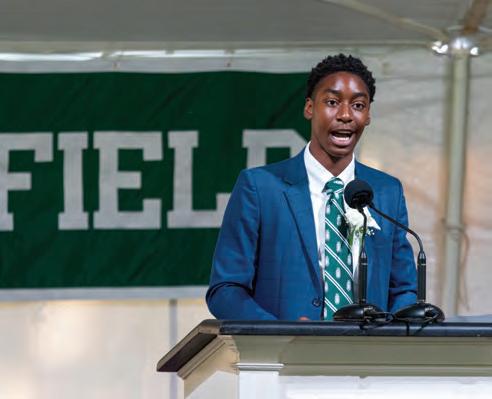



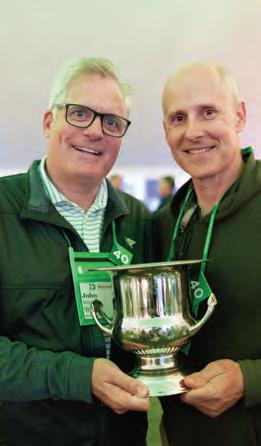
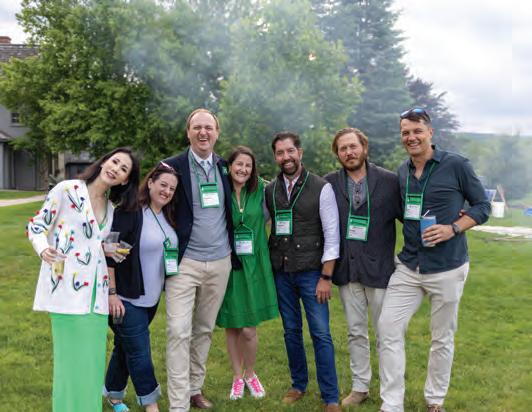
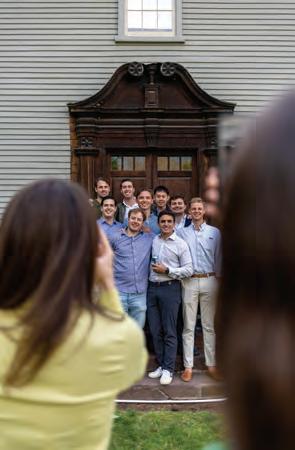
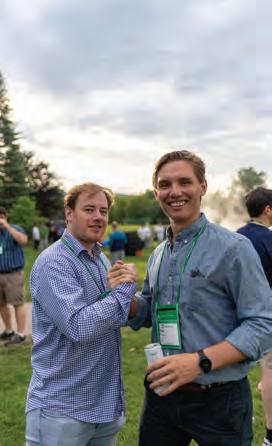


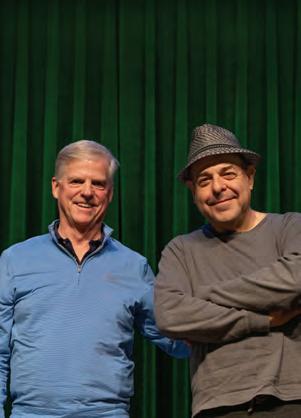
Nearly 800 alumni and friends returned to campus for Reunions 2023. Classes celebrating their post-50th Reunions were also back in impressive numbers! Notably, the Class of 1953 had 16 alumni return to celebrate their 70th Reunion, while 21 members Class of 1958 were on campus for their 65th. The Class of 1983 won this year’s Agry Cup for attendance, and the Mimi Morsman Award for outstanding dedication to the Academy was presented to Aaron Daniels, Craig Fanning, and Hugh Smith, all from the Class of 1953. “4s” and “9s”—save the dates: June 7-9, 2024!
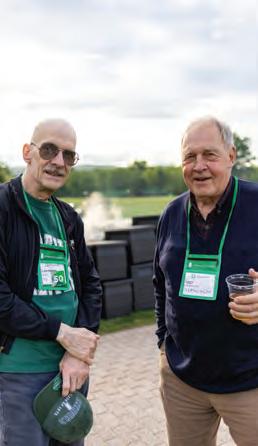
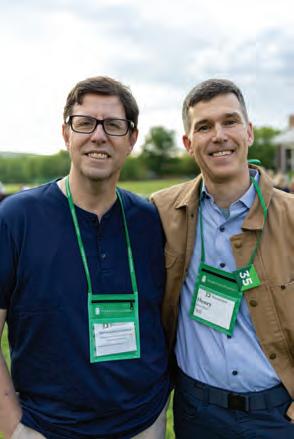
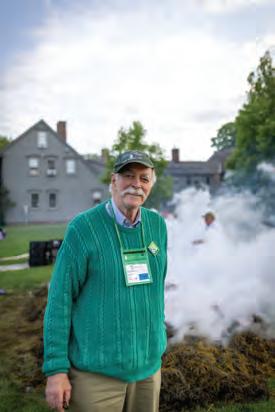



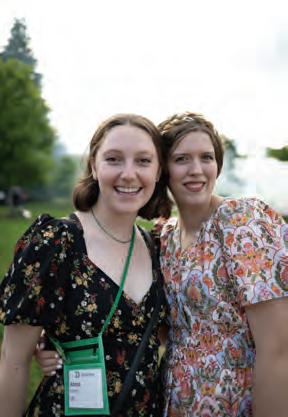
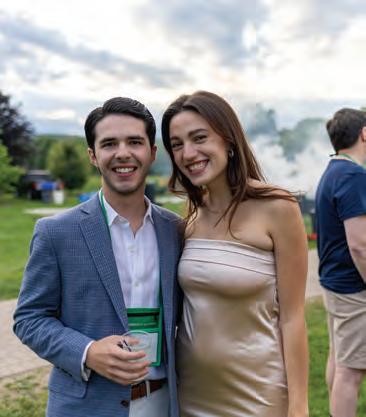

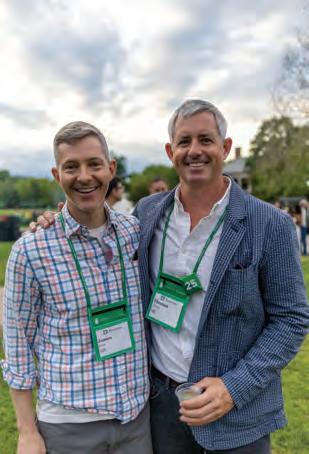
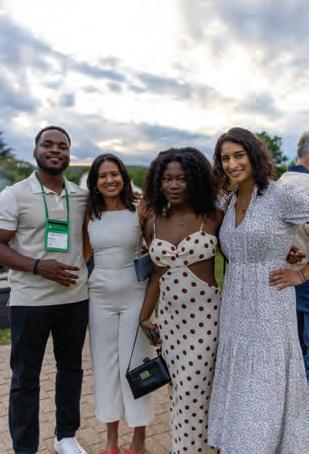



“We studied the history of zoomorphic caricature through innovators in the field, such as Daumier and Grandville. After reading the book, I asked students to pick a person and illustrate them as a farm animal. I’m working on getting these six panels exhibited at Bradley International Airport in the fall. I didn’t know how this would turn out, but I could not be prouder of my class.”—Angel

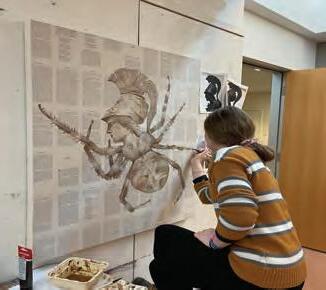 Abreu ‘92
Abreu ‘92

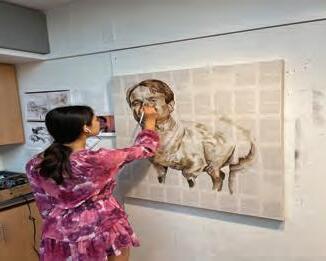
Angel Abreu ’92 likes to incorporate a collaboration that pulls from his professional practice in his Topics Tutorial class. This year he decided to use George Orwell’s Animal Farm
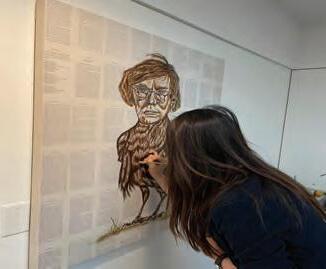

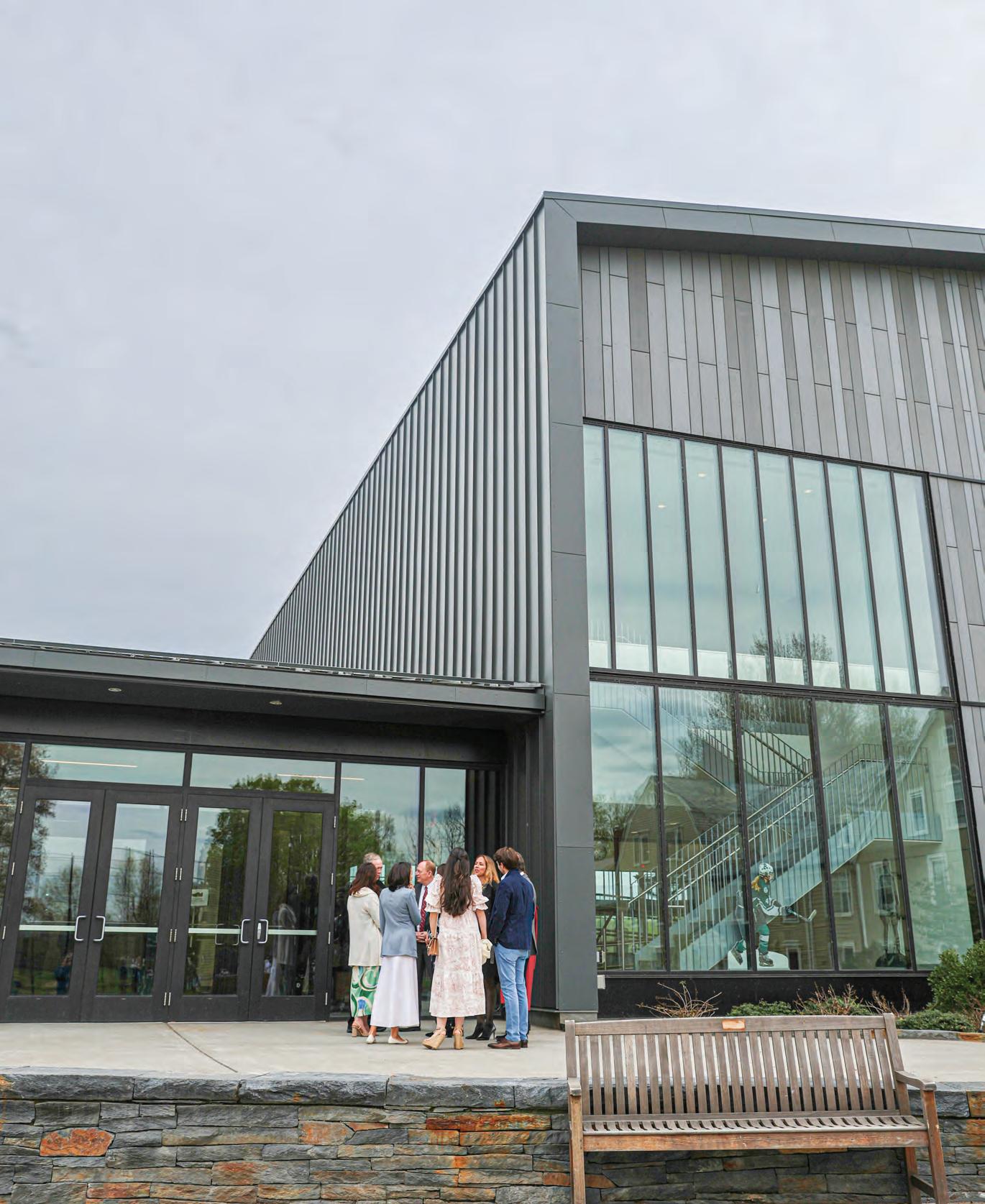
On April 28, Head of School John Austin and the Academy’s Board of Trustees dedicated the Rodolfo E. Wachsman ’53 Athletics Complex in honor of Mr. Wachsman’s transformative gift to the Academy upon his death in January 2021. Dr. Austin welcomed members of Mr. Wachsman’s family to campus, and Board President Leila Govi ’93 P’26 shared her greetings and gratitude. The dedication ceremony was followed by student performances in the Elizabeth Wachsman Concert Hall and a dinner.

The Ashley Award was presented on April 5 to classmates and twin sisters Maya C. Delaney and Dana N. “Denley” Delaney for their exceptional contributions in their respective fields, including their dedication to advancing ocean conservation and exploration. Named in honor of Tom Ashley, Class of 1911, the Ashley Award was created by the Executive Committee of the Alumni Association to recognize young Deerfield alumni/ae who demonstrate exemplary character and extraordinary devotion to a people, cause, or place.
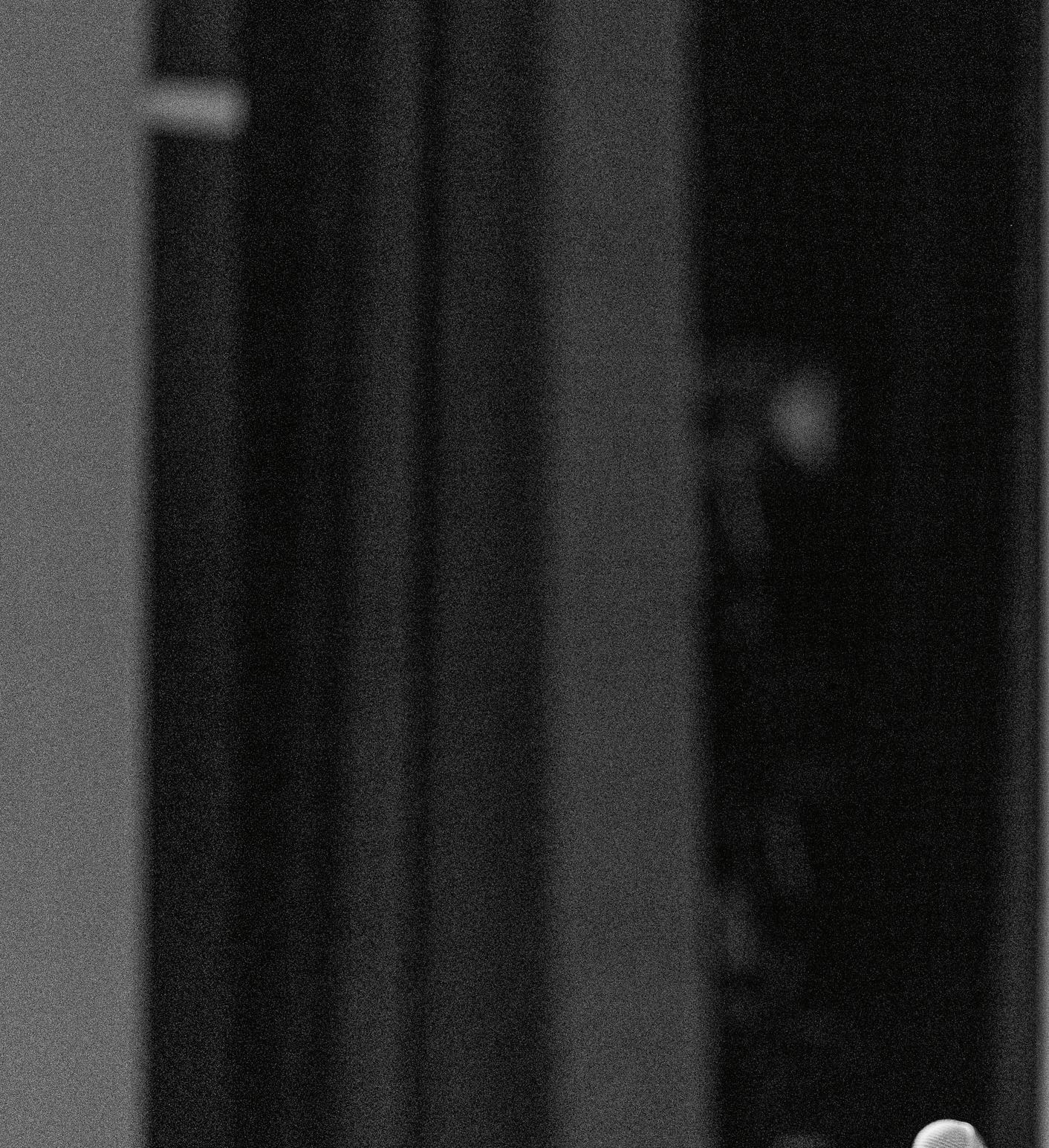
As a graduate student at MIT’s Sloan School of Management, Maya focuses her studies on the intersection of ocean conservation and finance. Her goal is to promote private finance solutions that drive sustainable development in Blue Economy industries, particularly in small island developing states such as her home country, the Bahamas.

Denley leads the National Geographic Society’s ocean-based tools and technologies portfolio for innovative ocean exploration. Serving as a senior manager on the Exploration Technology team, Denley uses cutting-edge technologies to enhance National Geographic Explorers’ projects. These technologies enable the capture of unique storytelling content, scientific data from remote marine environments, and behavioral data from charismatic marine species.
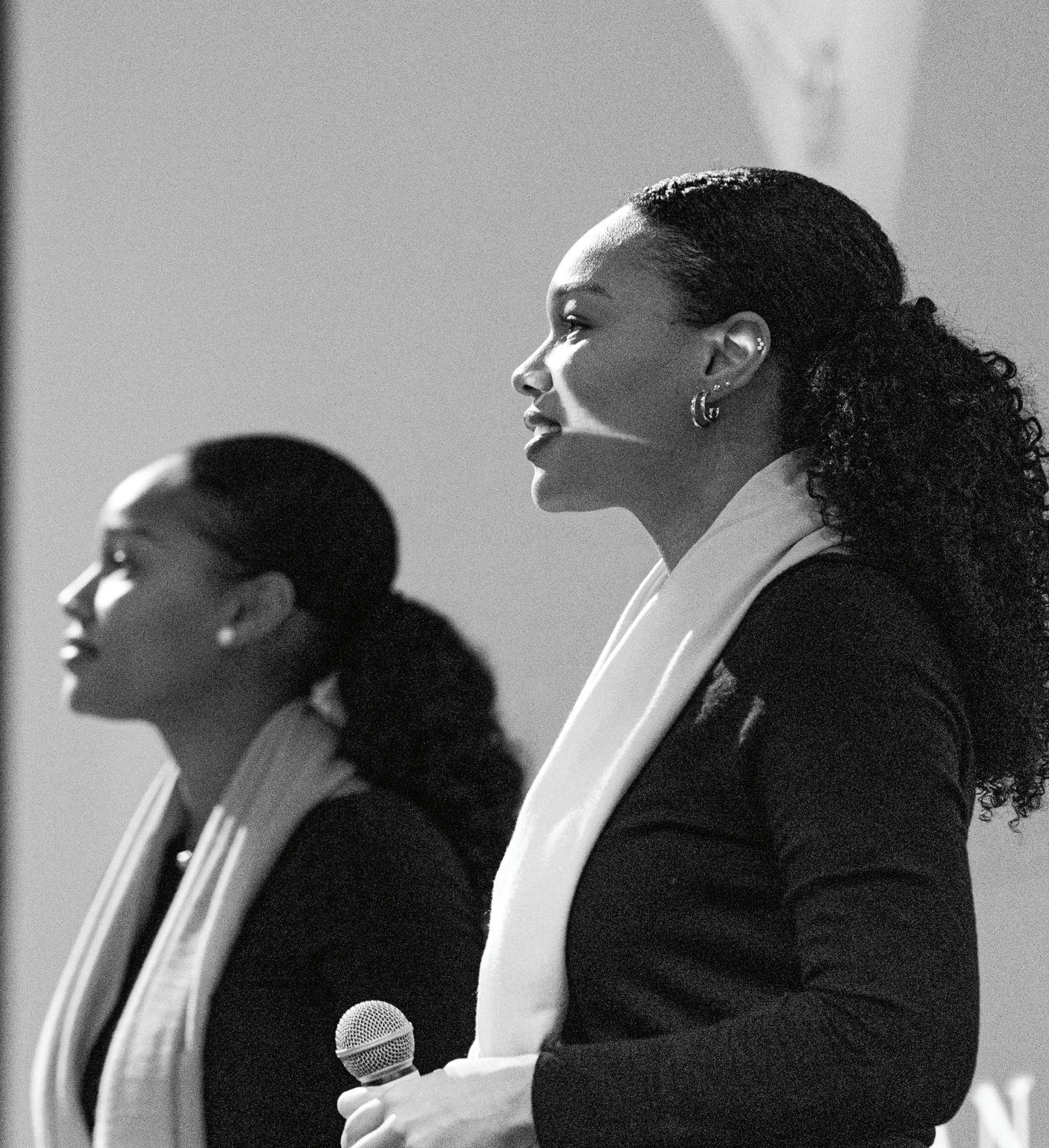
On a cool, gray April day in Deerfield, the auditorium of the Hess Center was awash in the turquoise blue of the Coral Triangle in Indonesia. On the stage, in front of a large screen displaying images of bright schools of fish and the swirling surfaces of living coral, Hussain Aga Khan ’92 and Megan Ng ’23 sat in conversation at Hussain’s first School Meeting in thirty years.

A photographer since age 25, Hussain founded Focused on Nature, an organization committed to wildlife conservation and education. A recent graduate, Megan is passionate about sustainability and marine conservation and is an advanced art student. Together, he and Megan talked about his journey to become a conservation photographer and his hopes for his work in the world.
Hussain was smitten with wildlife as a little boy, keeping fish, collecting photography books, and watching Jacques Cousteau documentaries. His mission today springs directly from that early love affair with the natural world: to help people fall in love with “the diversity, intelligence, and charisma” of wildlife so that they care enough to protect it.
“If you don’t know what the problems or the solutions are, you have no reason to change your behaviors,” Hussain noted. His images show us what we may never have the chance to see for ourselves: the teeming, beautiful life below the ocean’s surface. Hussain’s quest, which involves taking hundreds of thousands of photographs a year, is to inspire “advocacy through beauty”—to invite us into awe and wonder for animals and habitats so that we believe they are worth saving. He also includes images of plastic waste and fishing lines trailing from sharks, as well as statistics and endangered species lists, to underscore the looming threats to ocean wildlife.
In his photograph of a sea lion pup resting on its mother’s back hanging in the lobby of the Hess Center, an enormous image of a humpback whale in the Koch Center, and an exhibit that ran from May 7 to June 12 in the von Auersperg Gallery, it is easy to feel the love in Hussain’s work.
And how did he feel seeing his work hanging at his high school alma mater? “It’s awesome,” Hussain said. “I feel so lucky to be able to do what I’ve always dreamed of doing and see what I’ve always dreamed of seeing, and then to get to share that—I’m so grateful.” He was also delighted to be back on campus. “There are a few more buildings, but overall it feels very familiar and much the same,” he said. “This is where I made my strongest friendships and became inspired by my teachers. I had fantastic experiences and have fond memories.”

As their conversation wrapped up, Megan asked Hussein for his thoughts about how Deerfield students might create a more sustainable world. His advice was simple, though perhaps not easy: “Reduce your use of plastics. Recycle. Drive less and fly less. Don’t waste water and food. Plant trees. Give money if you can. Speak to your family and friends about what you know. It’s not one thing but a lot of small actions combined.”
Hussain’s visit to Deerfield followed the same principle: small points of engagement with students, a generous sharing of his avid life’s work, and an appreciation for his time at the Academy that all added up to a meaningful impact. //
“Reduce your use of plastics. Recycle. Drive less and fly less. Don’t waste water and food. Plant trees. Give money if you can. Speak to your family and friends about what you know. It’s not one thing but a lot of small actions combined.”
HOW DEERFIELD STUDENTS MIGHT CREATE A MORE SUSTAINABLE WORLD :

In March, I experienced my first international flight, and in the early days of April, I earned a world title. None of these exciting firsts would have been possible without the support and encouragement of my teachers and peers within the Deerfield community; let’s rewind to the fall.

On October 23, 2022, the Kravis Room was packed with over 100 speakers, debaters, coaches, and parents from the United States, Canada, Bermuda, South Korea, India, and beyond as Deerfield hosted the International Independent Schools Public Speaking Competition. This annual gathering brings together independent school students from around the globe. After four days of intense preliminary and final rounds of competition, we anxiously awaited the awards announcement that evening.
Dr. Daniel Houston, Deerfield’s Speech and Debate coach, also my dorm resident and the fearless linchpin of this year’s IISPSC, or “Internats,” stood at the far end of the room. I was thrilled when he read that I placed second in the Dramatic Interpretation category. Honestly, I was in disbelief that I had made it so far in the competition, as in-person Speech and Debate events were entirely new to me as a tenth-grader.
Then it was time for Dr. Houston to announce the top five highest scoring competitors from the US who had qualified to represent the country in the World Individual Debate and Public Speaking Championships, or “Worlds,” in Durban, South Africa, in the spring. My jaw dropped as my name was the final one he spoke into the microphone.
The next moments were spent hugging friends and calling family members in excitement and utter disbelief. I hadn’t anticipated placing in one of my categories, let alone qualifying for a World Championship! I remember weaving in and out of everyone in the Kravis to find Dr. Houston; without his dedication and organization, IISPSC wouldn’t have been possible, and without his kindness and support, I wouldn’t have made it nearly as far in the competition.
The next day, I saw Mrs. Catriona Hynds, director, and my faculty advisor extraordinaire at theater rehearsal. I immediately shared my news about Worlds, and without hesitation, she said, “I’ll go with you.” I will never forget that moment; it was truly indicative of Mrs. Hynds’ unwavering support. Dr. Houston coordinated with Deerfield’s Center for Service and Global Citizenship, and Mrs. Hynds was approved to join us on the trip. I was so excited.
This past school year was full of unanticipated firsts for me. In October, I competed in my first in-person Speech and Debate competition, earning my first international title.l to r: Catriona Hynds, Lily, Justin, Thomas, Dr. Dan Houston >>>
In the following months, our team grew in number and talent. In December, Speech and Debate traveled to Buckingham, Browne, and Nichols School for a tournament where Thomas Harrick ’23 placed first overall, qualifying for Worlds. Then, in February, our league held its annual meeting and selected Justin Ahn ’24 as a “wild card” due to his consistently strong scores and titles throughout the season. From then on, Dr. Houston, Mrs. Hynds, Thomas, Justin, and I formed a unique bond as we began preparing for our travel and competition in March.
Time flew by, and soon enough, everyone returned to Deerfield from Spring Break. We had about five days on campus before departing for our trip. I spent much of that time stressing over the details of our travels and the competition. Dr. Houston and Mrs. Hynds made every effort to alleviate this stress, spending hours meeting with Thomas, Justin, and me to prepare. Each of us was required to compete in four events; mine included Debate and Impromptu Speaking (both extemporaneous) as well as After Dinner Speaking and Interpretive Reading. I was particularly excited about the Interpretive Reading category. With help from Dr. Houston and Mrs. Hynds, I selected two stunning poems by Sylvia Plath: “Lady Lazarus” and “Tulips.” Drawn to their rich language, and combined with their dark subject matter, I thought both would make for engaging readings.
My friends and I hugged goodbye in front of the Main School Building, and the next 72 hours were a blur of hotel rooms, buses, airports, quick meals, and lots and lots of time spent sitting on a plane. In the airport, we met other members of Team USA from peer schools, and although I was expecting our 12 and eight-hour flights to be excruciating, the time passed quickly, and we arrived in South Africa on a Sunday evening. On the bus ride to our hotel, I marveled at the beautiful landscape. The moment felt so surreal; how did we even wind up here? Regardless, I was so excited (and exhausted, to say the least). After dinner and meeting my roommate on the South Korean team, it was lights out early since the competition began the next morning.
After a quick breakfast in the courtyard, we went to Clifton School—the independent boys’ school hosting the competition. The campus was absolutely stunning with its beautiful architecture, lush landscaping, and even a view of the Indian Ocean. Along with being overwhelmed by the beauty, people, and newness of this environment, I started to become overwhelmed by the competition itself, wondering: Am I really ready for this? Do I have my pieces memorized? Do I even deserve to be here?
Mrs. Hynds and I found a quiet space to rehearse my piece for After Dinner Speaking. Her encouragement kept me sane as we went into our first round.
“Remember who you are.”

Person by person, after-dinner speeches, which are meant to be five to seven minutes long and comedic, were presented. I shakily performed my speech, and contrary to my prior anxieties, I did, in fact, have it memorized. When we stepped outside to allow the judges to debrief and prepare feedback, everyone was so kind to one another—complementing each other’s performances and patting one another on the back. The judges were all incredibly thoughtful and thorough in their critiques.
The next three days went like this: announcements, meetings, briefings, numerous events, and feedback. Finally, Thursday evening came, and it was time to announce the finalists, who were roughly in the top 13 percent of competitors. Everyone on Team USA sat around one large table, nudging each other with anticipation and cheering when our names were called. To my surprise, I was a finalist in Impromptu Speaking and Interpretive Reading. In relief, I put my head down on the table, and Mrs. Hynds gently reminded me, “That’s how it’s done.”
Thomas made it to the Finals for Impromptu Speaking, and Justin made it to the Finals for Debate. To say we were all absolutely thrilled is an understatement.
I was able to appreciate the true beauty of this experience, rather than focusing on whether I deserved to be there or would even do well moving forward.
I tried my best to align my thoughts with Mrs. Hynds’ calm demeanor and gentle reminders as I prepared for the Finals that took place bright and early the next day, and before I knew it, they were over; it was time to relax and distract ourselves with some fun. We departed Clifton’s campus for a long bus ride to the stunning Midlands of South Africa. There, we visited a lovely shopping center where I could purchase a gift for my mother, and the Nelson Mandela Capture Site, where a museum was built where Nelson Mandela was arrested for “high treason” over 60 years ago. In those moments, I could appreciate the true beauty of this experience rather than focusing on whether I deserved to be there or would even do well moving forward.

Hours later, the Grand Finalists—roughly the top six percent of competitors—were announced. Once again, Team USA stood close together, nudging each other with anticipation. Unsurprisingly, Thomas’ name was read for the Impromptu category, to which we all cheered and jumped up and down like children. Before I knew it, it was time to announce the Grand Finalists for my favorite event, Interpretive Reading. My mind didn’t fully register the moment when he read “Lily Pierce,” but the excited screams of my supportive teammates helped me process the moment; I was in absolute awe.
I was still in shock the following day when we had some free time to spend before the Grand Finals that afternoon. As a group, we agreed it would be best to go out and do something rather than wallow in anxiety at the hotel (which is likely what I would have done!). So, we went to uShaka Marine World, a local aquarium, where we saw beautiful animals I had never seen before.
We returned to the hotel with little time to spare before taking a bus to the Grand Finals venue. I was nervous; Mrs. Hynds’ gentle reminders to drink water leading up to my performance were the sole reason my throat didn’t go dry. Interpretive Reading was the final event before the banquet dinner and awards ceremony, so I had time to watch the other extremely talented Grand Finalists. Thomas’ impromptu speech was outstanding; he was given two minutes of prep time and brilliantly connected the final for his Molecules and Energy class at Deerfield to the shaky foundation of the Millennium Tower in San Francisco. I watched Thomas—peer, friend, and teacher— give an incredibly moving speech that evening, and, to me, that was something more valuable than any title or trophy.
Eventually, it was my turn to perform “Lady Lazarus” and “Tulips” again. With hundreds of eyes watching, I quietly adjusted the microphone and my reading material. With a slightly shaky voice, I introduced myself and my piece to the audience beneath the dim auditorium lights. My eyes traveled away from them and to my paper, as I began reading Plath’s words, sharing their depth and sadness with the audience. I tried my best to quiet my nerves and focus on indulging in the rich language of the poems, as Mrs. Hynds had beautifully put it to me so many times before. And before I knew it, I was thanking the audience, stepping offstage, and returning to my seat where my advisor greeted me with open arms and a wide smile.
The evening rolled on, and I enjoyed a beautiful dinner with my teammates while awaiting the awards announcement. I felt so relieved; the competition was done, and in just a couple of days, I would be sleeping in my cozy bed in Western Massachusetts again, but I brought my focus to the present. Unsurprisingly, Thomas was named the World Champion in Impromptu Speaking. Then, moments later, I received a third-place trophy in Interpretive Reading.
That trophy sits in my room now: a beautiful, South Africanmade figurine that stands over a foot tall. I am thrilled to have brought it home. However, without a doubt, my experience goes so far beyond the trophy sitting on my desk. I will remember practicing and receiving feedback from Justin while going delirious from exhaustion on a cold, dark plane; I will recall every time Thomas pulled me aside to remind me to take some deep breaths; I will remember standing in the Starbucks line at the Dubai International Airport with Dr. Houston to get some much-needed coffee. And lastly, but certainly not least, I will think of every moment spent with Mrs. Hynds over the course of the trip— from planes to buses to hotels to schools, talking about Neil Simon’s theater, Sylvia Plath’s poetry, and sharing laughs over anything you can imagine. She kept me calm and focused with her presence and insightful words.
My unanticipated firsts this year would not have been possible without the support and encouragement of these incredible teachers and peers within the Deerfield community. They helped me to see the true beauty in an experience such as Worlds; beyond titles and trophies, they taught me the importance of believing in myself. //

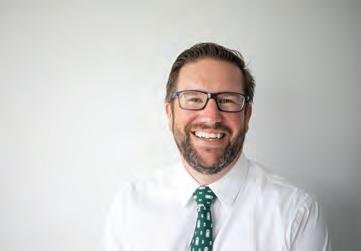
As the end of the fiscal year arrived on June 30, I approached this update first as an opportunity to provide a much-needed report to all of you on the Academy’s financial position, then as an opportunity to introduce myself as the Academy’s Chief Financial Officer, and finally, to showcase the work we are doing with respect to long-range and campus master planning, which will result in some exciting investments in Deerfield’s campus infrastructure.
As I am sure most of you agree, Deerfield is a wonderful place, and as Chief Financial Officer, I am blessed to work with a talented group of colleagues who care deeply about our mission to educate young people. I came to Deerfield in August of 2021 from Williams College, where I worked for nine years as the Associate Vice President for Finance and Administration. My wife, Cindy, is an educator who has worked exclusively in the public school system. She is currently principal of the Williamstown Elementary School in Williamstown, MA. Our daughter, Mackenzie, just completed her first year of college, and our son, Jackson, is a rising eighth-grader (fifth form) at Eaglebrook School. We are delighted to call Deerfield— and the Pioneer Valley—home.
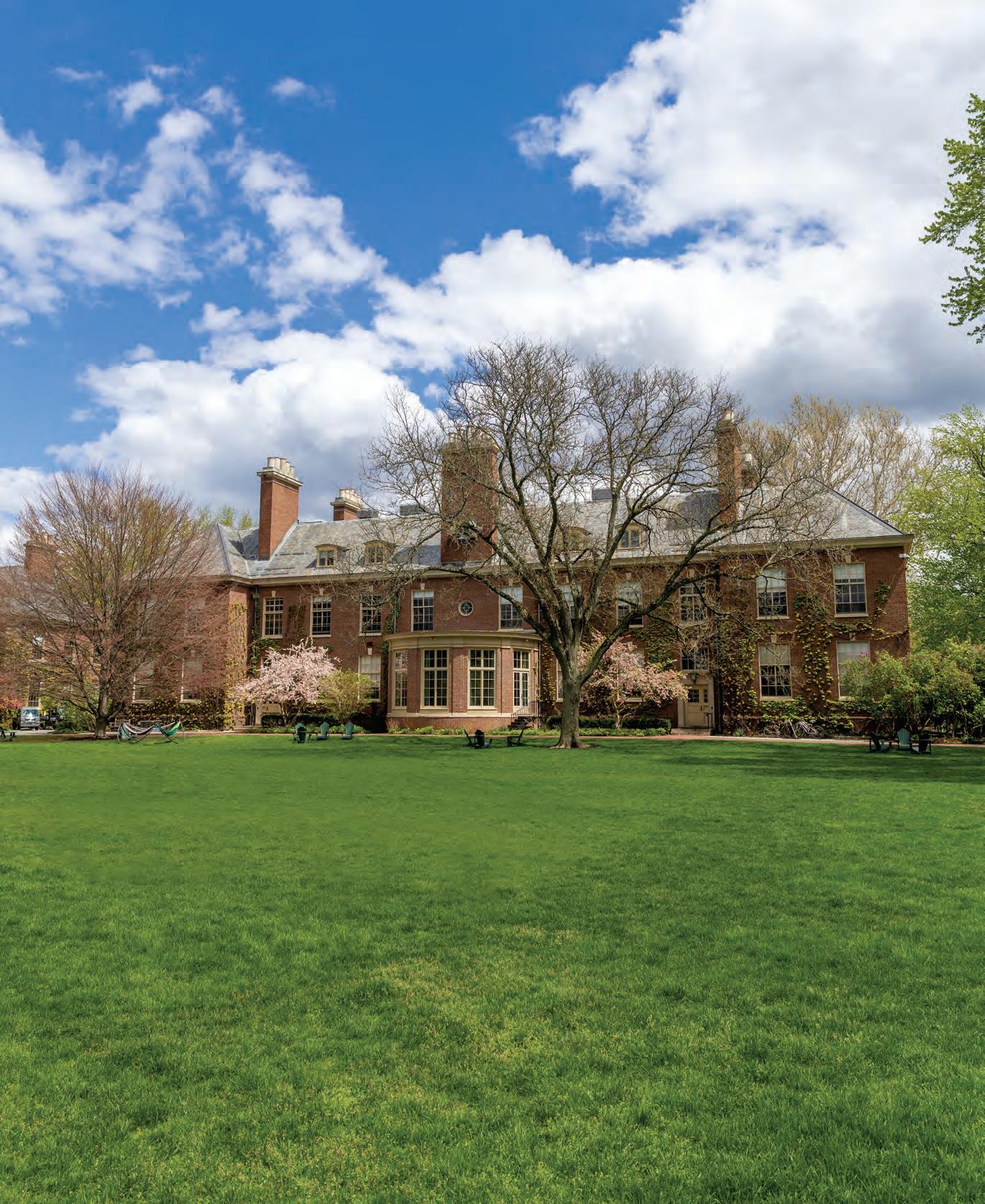
BUDGETED EXPENDITURES, 2022-2023
Dr. Austin is a transformational leader, and his recent remarks during Spring Family Weekend (see page 3) provided an overview of what lies ahead for the Academy and the many initiatives we endeavor to invest in. I recommend reviewing those remarks, as they outline several important priorities and provide an overview of the strategic direction of the Academy. The pie charts seen here are a quick snapshot of how the Academy allocates and prioritizes the resources available to support ongoing operations and the academic program.
As noted in the charts and in Dr. Austin’s remarks, the foundation for our financial operations and the cornerstone of our upcoming strategic initiatives is the Academy’s endowment; the current strength of Deerfield’s endowment is the result of the tremendous support we have received over generations from parents, alumni, family, and friends who support the Academy’s vision and values. Currently valued at more than ~$840 million, the endowment per student value is ~$1.3 million, and endowment support (endowment draw) for operations exceeds total revenue from net student tuition and fees (gross tuition less financial aid) on an annual basis.
Through expert management and strategic allocations, the size of the endowment has steadily grown approximately 7.0 percent annually in the past decade, and as a result, the calculated endowment draw has nearly doubled from $15.7 million to $30.3 million. While these values place Deerfield in a unique position, there remain opportunities to continue to invest in important areas that increase support for student access to the Academy, faculty and staff compensation and benefits, program innovation, and critical capital improvements to the physical campus.
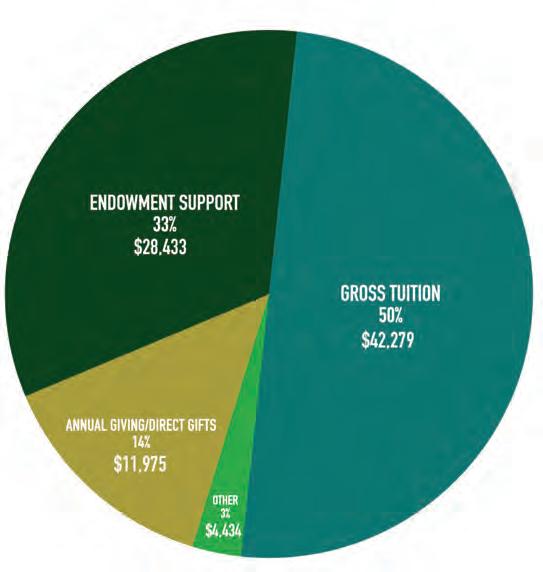
BUDGETED REVENUES, 2022-2023
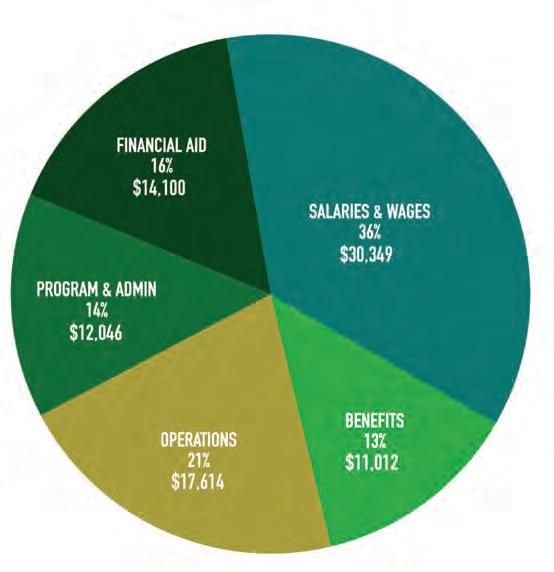

the opportunity to clearly define guiding principles for managing the beautiful campus we call home. A number of important and emerging projects have been identified through the planning process, including a renovation of the Dining Hall, the Academic Core (comprising the Main School Building, the Arms Building, and the Kendall Classroom Building), as well as student residential living spaces.
As my predecessor Keith Finan noted routinely, one of the things Deerfield has done tremendously well over time is to act as an excellent financial steward of the resources that have been accumulated over many generations of support. This prudent stewardship ensures that the overall financial plan for the Academy is resilient and flexible—allowing us to respond appropriately to unique circumstances, such as the Covid-19 pandemic. The chart above highlights the growth in the endowment and how the calculated endowment draw corresponds to that growth.
As the chart notes, the Academy has focused on conservative use of the endowment to support operations; the long-term financial plan is committed to ensuring the Academy’s annual operation relies on an endowment use rate of 4.25 percent or lower. This ensures that the endowment resources are not overly leveraged, allowing for ongoing continued growth of this important asset.
Equally valuable to the school’s continued success are the faculty and staff who make Deerfield Academy an amazing place to learn and live as a community. Recruiting and retaining the best employees continues to be a focus of our efforts, and those efforts include a robust and competitive compensation and benefits program. As the pie charts on page 21 highlight, employee compensation and benefits represent 50 percent of our annual operating
budget, and this grows to 60 percent when you exclude student financial aid. We are currently studying all aspects of our compensation program, and engaged in a strategic benefits review to help ensure our approach is nimble, competitive with our peer schools and other employers in the Pioneer Valley, and prudent, given the impact this has on financial resources and operations of the Academy. Over the last 12 months, inflation has impacted our employee base, and the Academy has sought out ways to mitigate the situation, including providing one-time payments to employees in July 2022 and December 2022 to assist with managing the rising cost of goods, services, and utilities.
As an institution, the Academy has also been impacted by inflation in many areas, but as noted above, our financial plan is resilient and because of it, we have been able to absorb some of the near-term shocks associated with rising food and utility prices. We will continue to monitor the impact of inflation on our employees and our financial plan in order to effectively manage these financial shocks.
Planning was a major theme during the past fiscal year, including being engaged in a refresh of the Academy’s Campus Master Plan. The Campus Master Plan was originally developed a decade ago—in 2013—and we are updating the document to identify current needs and strategic priorities as well as taking
In addition to these highly visible projects, we are also engaged in a review of the important mechanical systems and infrastructure that serve these buildings and provide electricity, heat, and air conditioning to effectively plan for sustainable upgrades to these important services. In the coming months, we hope to have a final draft of the Campus Master Plan to share broadly with the Academy community. Ultimately, the plan will be a living document, and as such, updated often to ensure that the physical campus and its assets continue to support the Academy’s mission.
On the following pages, I share with you the Academy’s Financial Statement of Activities from FY ’19 to FY ’22. These four years worth of data demonstrate how the Academy’s finances have changed over the time period, while highlighting some of the investments that were made in order to successfully navigate and manage through many of the challenges the Academy faced. As you review the figures, please note a couple of items:
First, the tremendous gains realized in the investment pool over this four year period. Deerfield recognized more than $150 million in realized and unrealized gains in the investment pool during this period. Second, the generous support from alumni, families, parents, students, and friends during this period, which resulted in more than $160 million in gifts and bequests over the last four years, including the Academy’s largest gift in its history—$80 million—bequeathed by Rudi Wachsman ’53 in FY ’22. Finally, I would point out the tremendous resources that were deployed to successfully manage through the Covid-19 pandemic to ensure that our students were provided the opportunity to pursue academic, athletic, and artistic excellence even in the midst of upheaval.
CAREER COACHING RECORD
211-64
12
SEASONS AS UMASS-AMHERST’S HEAD COACH FOR WOMEN’S LACROSSE 7 TIME A-10 COACH OF THE YEAR 8 ATLANTIC 10 TOURNAMENT TITLES
On a recent preseason trip to Florida over spring break, the Deerfield girls lacrosse team then enjoyed a yoga session to Disney music, held a synchronized swimming contest, and gathered to discuss a book they all read on how to be a great teammate (The Hard Hat by Jon Gordon). Between daily training, scrimmages, and exhibition matches with five other teams, the Deerfield girls lacrosse players and their new coach, Angela McMahon-Serpone, made time for this important team bonding. “Coming in as a new coach, I have different philosophies and ideas and ways that I want to do things, and [the girls] were just so open-minded and eager to learn and willing to try new things. But at the same time, we had so much fun together off the field.”
Coach McMahon-Serpone comes to Deerfield with an impressive coaching record of 211-64. She served as UMass-Amherst’s head coach for women’s lacrosse for twelve seasons and was named the A-10 Coach of the Year seven times. She led the program to eight Atlantic 10 Tournament titles, eleven regular season conference crowns, and nine berths to the NCAA Tournament. Prior to that, she served as head coach at the University of Connecticut and Bentley University. In addition to her college coaching career, Coach McMahon-Serpone was the inaugural head coach of the Italian National Team that placed 11th in the 2017 World Championship in England, and she also served as an assistant for the U.S. U19 Women’s National Team which won gold at the 2019 U19 World Championship in Canada.
/// by Daniella Vollinger /// Photographs by Meghan Hoagland ///
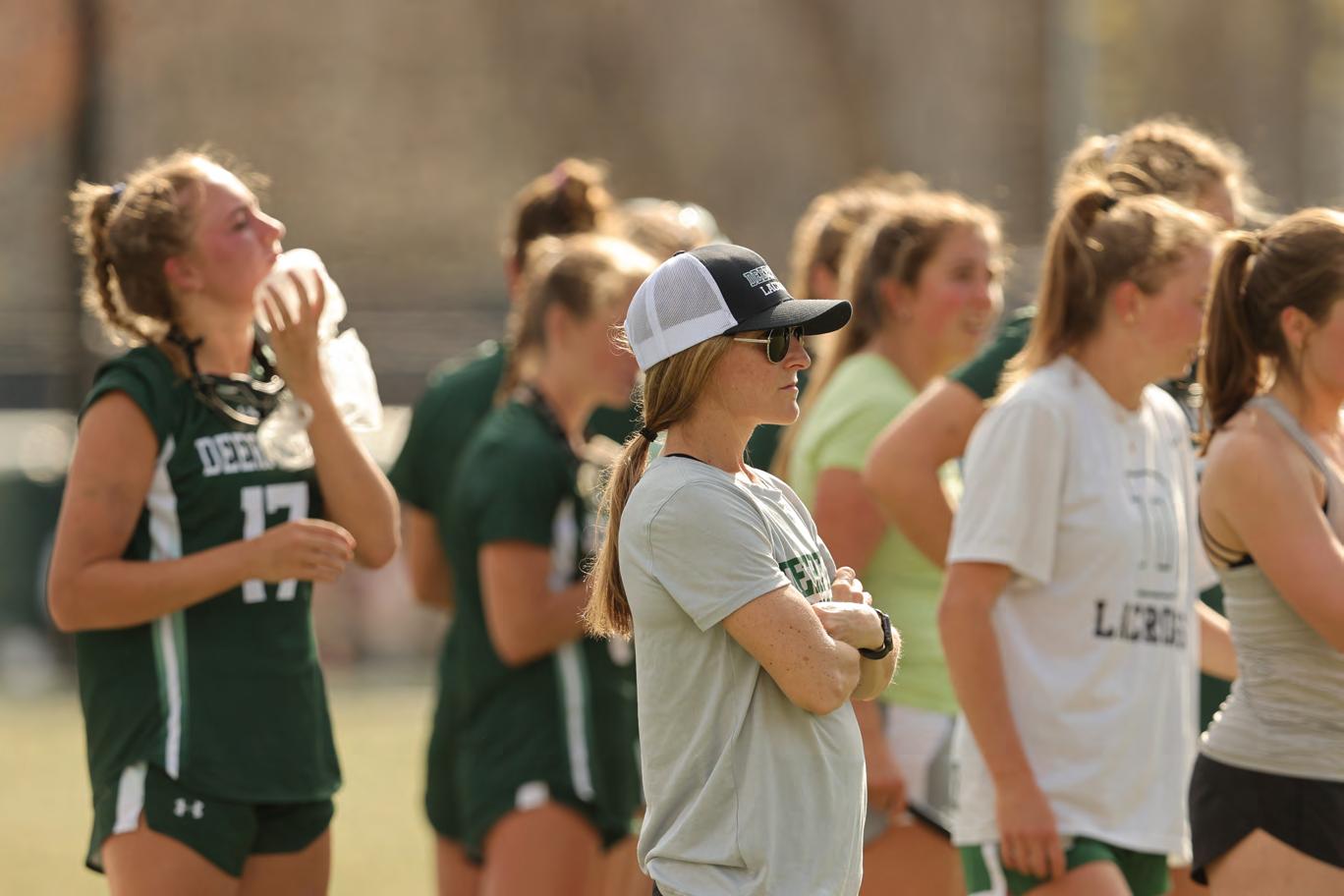
Coach McMahon-Serpone credits much of her success to the coaches she played for during high school and college. “I had great coaches who believed in me and mentored me and created great team environments,” recalls Coach McMahon-Serpone, who served as a two-time captain in lacrosse at Northwestern University (’04). As a three-sport athlete during high school—basketball, soccer, and lacrosse—she began honing her leadership skills in team captain roles. “I was the captain of those teams in high school, and I really loved getting everybody on the same page and communicating. I just liked the idea of what went on in the sport behind the scenes and how things all came together, so I knew I eventually wanted to coach.”
Leaving UMass-Amherst for Deerfield offered an opportunity for more family time. Coach McMahon-Serpone’s husband, Justin Serpone, is the head soccer coach for Amherst College, and having two parents coaching collegiate sports during different seasons—juggling travel schedules—was not ideal for a family of five. But also, the opportunity to be part of the Deerfield community and work with such extraordinary students was a huge draw. “Deerfield Academy is an amazing community and place to be. Everything we do here is with that community mindset. The students are so bright, hardworking, gifted, and talented. There is nothing more I could want for my children than to grow up in that environment surrounded by all these amazing role models. I am so grateful to have this opportunity.”
In August of 2024, Coach McMahon-Serpone will head off to Hong Kong as team manager for the U.S. U20 Women’s National Team, which will compete in the world championship. Her mentor, one of the most successful lacrosse coaches in U.S. history and a legendary figure in the lacrosse world, Kelly Amonte-Hiller, head women’s lacrosse coach at Northwestern University, for whom Coach McMahon-Serpone played during college, will be coaching alongside her. Coach McMahon-Serpone credits much of her philosophy to Coach Amonte-Hiller (who just won her eighth National Championship this spring), emphasizing a team-first mindset among her players and building a positive environment where athletes are encouraged to believe in themselves and their teammates.
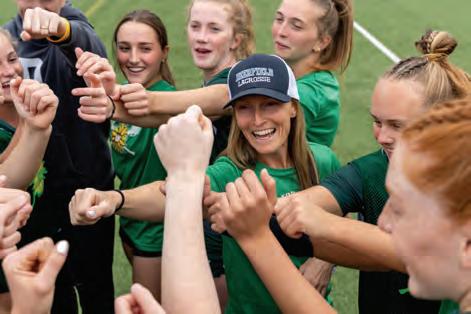
“What I am learning to really appreciate about Coach McMahonSerpone’s coaching style is that she not only teaches the game of lacrosse, but she also coaches young people to be better leaders, friends, and members of the Deerfield community,” notes Athletic Director Bob Howe, voicing a sentiment shared by many of Coach McMahonSerpone’s players. “She is a very consistent coach who focuses on the process rather than the outcome. She makes genuine connections with her players and cares not only about their success on the field, but their progress as students and human beings,” says recent graduate and senior captain Meghan Holland ’23, who wishes she had more than one year with Coach McMahon-Serpone. “She already contributes to a positive learning culture that we want for all our programs at Deerfield just by being present for her team members and for getting her players to realize their potential as athletes, leaders, and contributors to something bigger than themselves,” continues Howe.
A supportive environment ensures that her players are comfortable taking risks and being their authentic selves, propelling them to take the initiative and lead in their own ways. “Having that growth mindset is critical, especially for teenage girls when it can be challenging. I want our time together to be something that they look forward to and genuinely feel like they are getting a lot out of,” reflects Coach McMahon-Serpone, contemplating her duty to her players. “The life lessons and the things they learn through the sport are way more important to me than any outcome, than any wins and losses. We rarely ever talk about winning and losing. It’s all about the process: the types of habits that we’re trying to form that will make them successful in life. Being a great mentor and role model and having leadership on the team creating that culture will leave a legacy for years to come.” //
Deerfield Academy is an amazing community and place to be.
Everything we do here is with that community mindset. The students are so bright, hardworking, gifted, and talented. There is nothing more I could want for my children than to grow up in that environment surrounded by all these amazing role models.
As a seven-year-old, Spencer Washburn would get off the school bus and accompany his father and the Andover crew team to their practices. He remembers drifting off to sleep, the cool metal of the launch against his back, the water slapping against the sides of the boat, and the sound of his father’s voice as he coached the rowers. The Washburn family rallied around rowing. The sport was a constant topic around the dinner table among the nine Washburn siblings and their parents, as well as among their extended family; Spencer’s grandfather had also been the crew coach at St. Andrew’s School (Delaware) after whom Washburn Cove at St. Andrew’s is named.
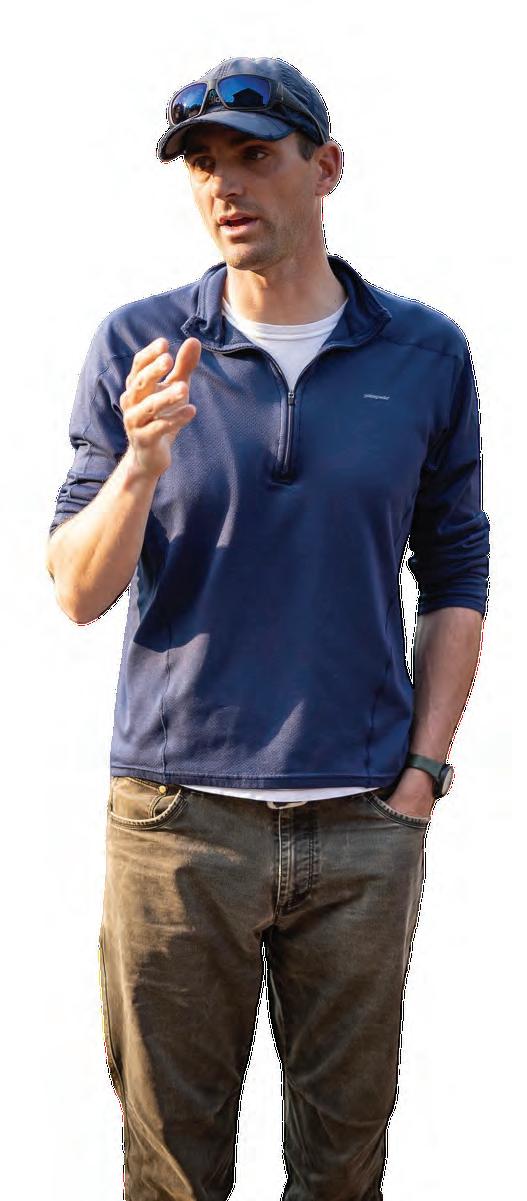
Parker Washburn, born eight years after Spencer, recalls a similar childhood with afternoons out on the water with his father. All seven Washburn boys rowed through high school and college, and during springtime, the family shuttled across the east coast to events. “I just absorbed a lot about the sport from a young age,” says Parker, who, two years out of Harvard University, took a year off to train and try out for the 2016 U.S. Olympic crew team. “There was a lot of rowing talk and a lot of rowing growing up.”
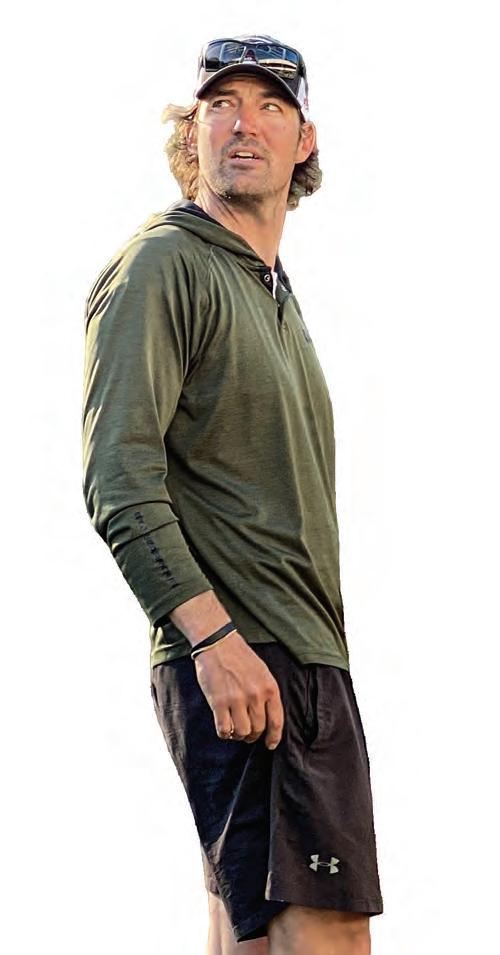
this notion of ‘one boathouse’ and the fact that we were all on the same team, all working toward the same goal,” notes Johnson, who attributes the success of the program to this change in culture.
Coaches Spencer (head boys varsity crew) and Parker (head girls varsity crew) share the same vision for a unified boathouse culture, a concept that the older Washburn began to implement when he arrived in 2014 at Deerfield from Princeton University’s rowing program, where he worked as a coach and also rowed while a student there. “The best teams [Parker and I] have ever been on, whether as athletes or coaches, were teams with full boathouse buy-in. We talk about that here as ‘one boathouse’—not two teams under one roof but one program operating together. It makes everyone better.” In application, what that looks like is a boathouse where the boys’ team and the girls’ team travel together, set up and take down equipment for practices and events together, fill in on a boat here or there during practice as needed, and encourage each other. “We’re all in this together, striving toward the same goals, pulling each other toward the same pursuit.”
Former rower Gordon Johnson ’17 remembers from ninth grade to the beginning of tenth, boys and girls teams split the boathouse, and there was no camaraderie between the teams. They operated just as two separate entities occupying the same space. “Once Coach Spencer started and began noticing this, he enforced upon us this notion of ‘one boathouse’ and the fact that we were all on the same team, all working toward the same goal,” notes Johnson, who attributes the success of the program to this change in culture. “I went from not being very close to many of the women rowers to still being best friends with many of them to this day. Building that sense of culture and unity has brought so much success to the program, and [Coach Spencer’s] athletes are much better off.”
There are over 90 students who participate in Deerfield’s rowing program. To the average person, it might be puzzling why anyone would battle the unpredictable spring weather and put that much training and effort into preparing for just a few minutes of racing. “It’s not fun in the way other sports may be fun,” says Coach Spencer. “Rowing is fun because you’re going to work really hard, and you’re going to find new limits you didn’t think you could get to. You’re going to find new spaces you can access physically and mentally that you were perhaps unaware you were capable of. The fun will come from that moment when you’re like, ‘Wow, I did something I didn’t think I could do, or I achieved

what was impossible last week, last month, last year, and I put the work in, and I did it!’”
In their first year competing as an eights program (Deerfield has traditionally raced in coxed fours), the boys program won all three events at the New England Championships, and the girls team won the top boat as well as placed in the top four in the other two events— an outstanding achievement at such a competitive championship event. “Coaching a rowing program at the secondary-school level requires inordinate planning and time spent well beyond the practice hour during the rowing season. It is a sport one truly has to love to be good at, whether as an athlete or a coach,” says Director of Athletics Bob Howe. “These two coaches have set a standard of excellence for other programs in New England to follow.”
Coaches Spencer and Parker exhibit a remarkable level of dedication to each one of their charges. Rather than an overarching coaching philosophy, they aim to put each athlete in the best position possible and coach the boat and the individuals. For it all to come together, there has to be a level of commitment, cooperation, selflessness, and chemistry. “No amount of thanks would be enough for all Coach Parker has given me and my teammates,” notes recent graduate Georgia Sackrey ’23. “He cares not just about teaching people to be better rowers but also better people. He is extremely successful both academically and athletically but remains incredibly humble, unknowingly inspiring those he teaches and coaches to act in the same manner.” While he coached the
Princeton rowing team, Spencer recruited athlete and rowing enthusiast David Mackasey ’10, who is grateful for the impact Coach Spencer has had on his life. “Making Coach Spencer proud was one of the reasons I committed so much time and energy during my college years to rowing . . .. It has been a pleasure to watch Deerfield’s rowing program excel under him. I know that he makes just as much of an impact as a mentor and role model on campus as on the water.”
The tremendous success of Deerfield’s rowing program is the cherry on top. The real magic is in the everyday moments when the rowers come together to be the best versions of themselves for each other, continuing to build forward momentum as they take on a shared challenge. When Coach Spencer is asked what he hopes the students take from their Deerfield rowing experience, he offers, “Athletes can get really wrapped up in results and focus on winning or losing, but at the end of the day, 10, 15, 20 years down the road, that will not be what you remember. The thing you remember will be the crew who were with you when you challenged yourself. That’s what matters. That’s what you’re going to carry with you.” Coach Parker agrees, “My hope is that they learn how to dedicate themselves to something, be part of something that may be bigger than themselves, and give of themselves in that team environment. Races will be won or lost, but the most important thing that lasts beyond the seasons is the friendships formed through this sport.” //
Converse with Deerfield math teacher Sam Leitermann-Long for a few minutes and you’ll quickly realize there’s a central tenet that reverberates through everything he does: a desire to connect. Whether speaking about his work, his community, his family, or his students, Leitermann-Long makes it clear that for him, connection is key.

A faculty member at St. Andrew’s Episcopal School in Potomac, MD, before coming to Deerfield in the fall of 2021, Leitermann-Long recalls his deep involvement with the school while lamenting the distance baked into the day school model. “It was hard because I didn’t live on-campus,” he explains. “I felt disconnected from both family and school life.” So, when the opportunity to join the Deerfield community arose, he and wife Peta jumped.
“We felt that Deerfield was a place where we could be involved in the community in a more intimate way,” he observes. “My mom was a public-school teacher and I believe I received a good education in public school, but I felt drawn to the well-defined sense of community that private schools offer.” The freedom to embrace an innovative approach to teaching provided further impetus. “I’m really invested in both the art and science of teaching and private schools tend to allow faculty greater latitude in employing different teaching styles,” he observes.
Leitermann-Long is happy he followed his intuition. “I love teaching and coaching, and I’ve found Deerfield students to be both motivated and inquisitive—they’re a delight. But what’s even better is the level of connection with the students and our community that we’ve found here,” he continues. During evening office hours, he says, students frequently come by to hang out and ask questions, sometimes about math but just as often not. “Students here feel known and valued, and I get the chance to become acquainted with them outside the classroom, which is terrific.” And he enthusiastically notes that the warm welcome has extended to the couple’s preschool-age daughters Riley and Quinn as well. “The level of engagement between my students and the girls is great,” he says.
by Lori Ferguson / photographs by Tom Kates

Leitermann-Long evinces a similar eagerness for connection within the walls of his classroom. As a mathematics major with a graduate degree in mathematics education, his enthusiasm for the discipline runs deep. “Math is a beautiful subject. The structure and internal symmetry are lovely in and of themselves, and then there’s the way that ideas develop and advance within the field— it’s really exciting.”
It’s also thrilling to watch students make connections between seemingly disparate subject areas as their knowledge grows, continues Leitermann-Long, who teaches higher level math courses like Math 400-Discrete Math & Precalculus and Math 705-Linear Algebra. “I believe math is a useful lens for understanding the world—especially when paired with other subjects like literature, history, and philosophy. A knowledge of math enables one to look at complex societal issues and analyze assumptions and limitations from a numerical perspective. Helping students discover its utility is fun.”
But Leitermann-Long is adamant that students make that discovery for themselves. “My classroom is centered around the idea of students making inquiries,” he asserts. “I tell my students, ‘I’m not the source of the answer. I want you to own your process and think for yourself.’ It’s important to me that they have a sense of autonomy in my classroom and take ownership for their learning.”
<MATH IS A BEAU + IFUL SUBJECT.>
In addition to the delight he takes in classroom teaching, Leitermann-Long also harbors a passion for athletics and the skills they nurture. Happily, his positions as head coach of Deerfield’s Ultimate team and assistant coach of the varsity wrestling team offer myriad opportunities to guide students in this aspect of their education as well.
“I’ve had many different paths into sports,” he observes. “I played Ultimate in high school and college. It’s a great sport— fairly unknown but lots of fun and extremely competitive. I love introducing kids to the game because I think it not only creates good athletes but also good citizens. It’s the only game I know that’s entirely refereed by the players, so it works on the philosophy that it’s everyone’s job to bring sportsmanship to the table.” Fostering students’ ability to engage in conversation in good faith, make a decision, and then continue playing
is good practice for the real-world negotiations and compromises they will encounter later in their professional lives, he observes. “Ultimate’s philosophy of community is uplifting and empowering, which I like very much.”

Leitermann-Long is similarly enthusiastic regarding the inherent philosophy of wrestling. “I fell in love with wrestling unexpectedly,” he concedes. “I wasn’t involved with the sport before I began coaching it at St. Andrew’s, but when I discovered the lessons it teaches, I was hooked.” While Ultimate is team-oriented, wrestling is very individualistic, Leitermann -Long explains. “Yes, you have teammates, but you’re in the ring alone, so you have to motivate yourself.” The training regimen is difficult as well, he notes, which forces competitors to draw strength from within. “Wrestling teaches perseverance. The nature of the sport builds character; it encourages determination and persistence, traits that serve one well in adulthood.”
And for Leitermann-Long, helping students find a path to adulthood that is both fun and fulfilling is job one. “I often say to my students, ‘My goal is for you to be happy, healthy, and sane,’” he says. “I want them to gain a sense of the world and come to understand what will keep them happy, healthy and functioning well in an increasingly complicated world.”
And whether that realization comes in his classroom or on the playing field matters little. “I want my students to think deeply and critically about their world and engage with society in ways that help them build a positive life —and that looks different for every student. There’s no one way to engage in a positive life,” he concludes. “I’m just here to provide advice and guidance that will help students find what works for them.” //
THE STRUCTURE AND INTERNAL SYMMETRY ARE LOVELY IN AND OF THEMSELVES, AND THEN THERE’S THE WAY THAT IDEAS DEVELOP AND ADVANCE WITHIN THE FIELD—IT’S REALLY EXCITING.

JV sports used to be the path to varsity. Now It’s also a destination.
READE
It’s just three weeks until graduation, but senior Carson Belaire ’23 isn’t relaxing.
Instead he’s nervously preparing to attempt something new’ difficult’ and a bit dangerous.
On a warm, blue-sky Senior Day, the last home meet for Deerfield’s varsity and JV track teams’
Belaire is preparing to compete for the first time in his life at pole vault.
His coach, Cheri Karbon, is worried about him. Because of a wet spring that canceled many of their practices, Carson only started learning to pole vault about a month ago. He’s made progress, Karbon says, getting in some good results when they were using a bungee across the standards. “But in practice Thursday when we put up the actual bar,” Karbon says, “he was afraid. He aborted several vaults. It freaked him out.” Carson is also worried. He’s only cleared the bar once in practice, and that was at a relatively low seven feet.
And why not? Of all the track-and-field events, it’s hard to think of anything more terrifying than trying to flip over a bar in mid air, ten feet above the ground, at the end of a 14-foot carbon-fiber stick. According to Coach Karbon, when a pole vaulter hits the end of the runway, they have a fraction of a second to manage about twelve different maneuvers. “They have to remember to bring the pole down properly,” she says. “Get it into the box. Lift one knee hard. Swing up the other leg. Invert as much as possible. Turn their body the right way. Toss the pole back or it’ll hit the bar.”
If Carson fails to do everything properly, he won’t clear the bar. If he fails at some things, such as not running fast enough or not properly planting the pole, he could fall backwards, where there’s no padding, or fall sideways into the metal standards. Even if he clears the bar, he must fall onto the mat correctly, or he could injure himself. In his lone month of training he says he’s survived about ten crashes, and hurt himself twice.
But Carson loves to try new things, including, he says, this chance to “fly through the air.” This is one of the reasons why he has loved JV sports at Deerfield.
Carson Belaire grew up in Saudi Arabia, where his father worked in the oil industry. He chose Deerfield over other boarding schools for its ice hockey program, a sport he’d played indoors and loved throughout his desert childhood. When he arrived at Deerfield his first year, however, he saw for the first time the high level of skill among the other hockey players and realized pretty quickly that he had to make a choice: He could work really hard to make varsity, but sacrifice other interests.
“I had to step back and ask what I value most,” Carson says, “and hockey was one of those things, but so were the arts—theater— soccer, music. I also realized that making varsity wasn’t much of a focus for me. I was happy to be on a JV team, playing hockey, getting the fun of competition and forming friendships with a great bunch of kids, but not being the best, and being okay with that.”
/// BOB HOWE, Director of athletics ///The health of a high school sports program can be seen in the strength of its JV. You can have championship varsity teams, but what you hold important is revealed by JV.
This is music to Bob Howe’s ears. Howe was Carson’s JV hockey coach for four years and has been Deerfield’s director of athletics for seven. Non-varsity sports, he says, not only provide opportunities for lots more kids to try new things, regardless of their experience or skill, but it provides more opportunities for them to learn valuable things, such as leadership. “The health of a high school sports program,” Howe says, “can be seen in the strength of its JV. You can have championship varsity teams, but what you hold important is revealed by JV.”
Howe jokes that when he retires he’d like to drive around in a van with a few likeminded friends and preach to anyone who will listen against the growing profit motive and specialization in youth sports. He feels that too many kids, as young as eight, are joining expensive travel teams with paid coaches who push their players to only work at one sport all year round, and penalize them if they don’t.
Howe, like many coaches and teachers at Deerfield, instead believes that students are better off if they try new things. He’s pushed varsity hockey players to take dance classes. He says that athletes who diversify are more athletic, and that catching a Frisbee or dribbling a soccer ball actually makes you a better hockey player. Other coaches talk about the ample scientific evidence that kids specializing in one sport increases their risks of injuries.
Howe tries to counter the national trend in youth sports, but there’s a limit to what he can control. Students and their parents have their eyes on college recruiters and scholarships, and often choose Deerfield for the strength of its varsity programs. And as a result of all those private club teams and specialization, the varsity athletes at the boarding schools Deerfield competes against are so skilled they are often at college level. Howe mentions a baseball player at another boarding school who’s throwing 88-mph fastballs, and has been scouted by the Yankees. He’s in ninth grade. Today’s boarding-school varsity, you might say, is a whole new ball game.
Which is where JV comes in—more and more. A generation ago, student athletes viewed junior varsity as a steppingstone, the place to grow until they made varsity, and if they didn’t make varsity by junior or senior year, they often quit. Today, many students like Carson deliberately choose to play JV.
“You’re not doing it for the title, and you don’t get recognized for being on a JV team. But everyone who’s there is there because they want to play, not because they want to become a professional or get into a college. It’s not about me scoring a goal. It’s about how we play as a team,” Carson explains. “I’m so glad I got to play hockey at Deerfield. Some schools only have a varsity team. Here, even if I’m not the best, I still get to enjoy the sport I love, and I really appreciate that.”
“I’m so glad I got to play hockey at Deerfield. Some schools only have a varsity team. Here, even if I’m not the best, I still get to enjoy the sport I love, and I really appreciate that.”
/// Carson Belaire ’23 ///
In addition to working in Deerfield’s Admission Office, Brooke Fernandez coaches JV girls lacrosse and varsity girls ice hockey. “The beauty of having any sub-varsity team,” she says, “is that if someone wants to play, there’s a team for them. There’s nothing worse than turning away a kid who wants to play. And there’s a genuine joy in being on a team. It lets you be part of Deerfield sports, get your mind off of schoolwork, hang out with friends, be goofy, and have fun.”
“I really love the JV community,” Ng says, “because it’s the perfect balance between competitive sports and low stakes. The idea of a team is emphasized, whereas with a lot of varsity sports, the stakes are much higher to win. I totally understand that varsity athletes want to get recruited and they work really hard, but on JV you’re working less on improving yourself and more on helping your team.”
Fernandez says that Megan “is a rock star. She did it all on campus. She was a proctor, a great student. It’s easy to check out senior year, but she didn’t do that. She brought positive energy to our JV team, was always smiling, and she was super welcoming to younger kids. She’s a great leader.”
One of her JV lacrosse players was recent graduate Megan Ng ’23 from Hong Kong. “I have friends who are tri-varsity athletes,” Ng says. “I like to call myself a tri-JV athlete.” She chuckles. For the past three years she’s played JV volleyball in the fall, JV squash in the winter, and JV lacrosse in the spring.
“My reason for being at Deerfield,” Ng says, “was not athletics. I love it, but it’s not my priority, so that’s why I’ve never chosen to play a varsity sport.” Not only do varsity sports nowadays often require all those years of specialization and professional coaching before students get to Deerfield, but they definitely require a much bigger time commitment. “I’m really passionate about sustainability,” Ng says. “I also picked up art here, and I’ve really grown to love painting. I find it very relaxing—almost therapeutic.”

Down at the track meet, Carson Belaire and his teammates are cheering on the girls, who are vaulting first; the boys JV baseball team is playing Eaglebrook on Headmaster’s Field. Deerfield is losing 4-0 in the third inning, and some of the Deerfield players are quiet.
But not junior Dylan Camp, of Whately, MA. Rather than use eye black to paint hyphens under his eyes like Tom Brady would do, Dylan has used it to draw a big handlebar mustache, down to his chin. Someone suggests he looks like Luis Tiant of the Red Sox long ago. Dylan has no idea who that is, and he doesn’t care. He’s too busy trying to liven up his team. He sits on the bench while DA is batting and yells out comedy encouragement to the Deerfield batter, number eight: “Let’s go, Ocho! I like that cut now, kid! Here you go now!”
According to Dylan’s coach, Jeff Crosby, this is another pleasure of JV: the atmosphere. “These guys are fairly hilarious on the bench,” Crosby says. “There’s an incredible amount of chatter, and it’s a lot of fun.” They yell out nicknames for their teammates: Chill Kev, Welchie, Ice Spice. Dylan Camp will make up math problems for a batter’s number: “What’s up, Square root of 121?” During one game this season, their rendition of ‘One Two Buckle My Shoe,’ a YouTube performer’s song about a pair of Nikes with buckles on them, was so hilarious it made the opposing pitcher laugh. This caused him to accidentally hit the Deerfield batter, which is one way to get on base. Says Dylan, “We definitely like to keep it light.”
Crosby, in addition to teaching biology and chemistry, coaches varsity football as well as JV baseball, so he’s seen both sides.
“I love JV,” Crosby says. “It’s great. And it fits really well with the boarding school tradition. Kids get to know each other who otherwise might not, playing together and having fun. At Deerfield, they get to know their teachers in a different way, too.”
“Varsity baseball is a massive time commitment. The practices are much longer: two-and-a-half hours versus ours, which are 90 minutes, and there’s more travel. And there’s enormous pressure to win at the varsity level. On JV we’re here to develop kids and have fun. One day we all just played Spikeball. I have a senior who was captain of the wrestling team, playing baseball for the first time since T-ball.”
They yell out nicknames for their teammates:

“Chill Kev, Welchie, Ice Spice.” ///BRENDANBUTZ’23///
I love JV . . .It’s great. And it fits really well with the boarding school tradition. Kids get to know each other who otherwise might not, playing together and having fun. At Deerfield, they get to know their teachers in a different way, too.
/// Jeff crosby, coach ///
And everybody gets to participate. “We’ll sub in kids even if it costs us the game, because we want them to get a chance,” Crosby says. “We try to win, but not at the expense of having a kid sit on the bench.” With less attention paid to the scoreboard, players can focus on improvement rather than victory—a useful skill for a happy life.
When the girls finish pole-vaulting, Josephine Louis ’23, who already held the school record in pole-vault of nine feet six inches, has broken it by another inch. She then goes on to win two other events. The vibe throughout the meet is loving and supportive. Deerfield students cheer for opponents, even those who just bumped them out of the running. More than once a vaulter is about to start, pole raised, but stops to yell encouragement to a classmate racing past on the track.
Now it’s time for the boys to vault, small and thin ninth-graders alongside burly seniors like Carson. The track-and-field team is unusual in that varsity and JV all compete together. The only thing that separates them, Coach Karbon explains, is that if a student scores a point for Deerfield by coming in fourth or better, they get a varsity letter.
“When Carson first came out he ran like a hockey player,” Karbon says. “It’s true,” Belaire agrees. “One of the track coaches had to teach me to keep my head up when I run, instead of shoulders down and ready to check somebody, like in hockey.”
To accommodate the newer and younger vaulters, officials start the bar at six feet. A Deerfield freshman, maybe five feet tall, clears the bar for the first time in competition, to loud cheers from his coaches and teammates. He beams. “That felt good,” he says, wiggling his arms. “I feel all jittery!”
The older, bigger, and more experienced boys enter the competition with the bar at seven feet six inches. If he makes it, this will be Carson’s, best vault ever. As he carries a pole towards the runway, Coach Karbon intercepts him and says to him like a mantra, “the bar is your friend. The bar is your friend.”
“Learning to pole vault as a senior is very brave,” Karbon says. “but it’s also giving to a team, rather than experiencing individual glory. There’s a lot of courage there, and a lot of selflessness. And that’s Carson.”
Carson’s teachers and coaches say that he is a genuinely kind, thoughtful person, the teammate who carries all the poles to practice on his bike just because, or who shows up early to the Dining Hall to help set tables. Consequently, he has a lot of friends in different communities at Deerfield — music, theater, sports. Some of them have heard about his attempt at pole-vaulting, and are here to cheer him on.
As he stands at the top of the runway, girls champion Josephine Louis yells to him, “You’re my hero!”
He sprints down the runway, plants the pole, and rises. He twists his body, lands on the padding, and looks up at the crossbar. It doesn’t move. He has easily cleared seven feet six inches, his personal best.
Vaulters get three chances at each height. With each raising of the bar, one or two are eliminated — but not Carson. By the time they raise the bar to nine feet six inches, it’s down to five: Carson, three other boys from Deerfield, and one from Saint Paul’s.
Karbon says, “all right, Carson, here we go. Punch that giraffe.” This is code, she explains, for “plant that pole like you mean it, high and strong.”
He runs, plants the pole, rises, spins, and drops onto the mat. The bar wobbles and falls. Three other vaulters clear.
For his next jump, Carson tries to put aside all the worries he has about the bar, and the intimidation factor of seeing others perform so well. He takes a deep breath, sprints faster, launches a bit sooner, rises, spins, and drops.
And the bar remains.
Dozens of fists punch the air. Teammates, coaches, and friends cheer and hug him. One of them yells, “that’s my proctor! That’s my proctor!” One of the other vaulters says to him, “you’re an inspiration, bro. It took me a year to make 9’6!’ ”
Someone asks Coach Karbon what happened? Carson doesn’t seem scared of the bar. “Adrenalin,” she smiles. “When it comes to the bar, it’s all mental.”
Another Deerfield vaulter fails to make his third attempt at that height, narrowing the field to four. Nobody clears ten feet except Deerfield junior Aaron Gibbons, who makes it on his third try. Gibbons, therefore wins the event. The scorekeeper looks at the other three vaulters’ previous misses and announces where they placed. Carson, at his first meet ever, is fourth.
This means that he’s scored one point for Deerfield. It also means than in the final three weeks of his four years at Deerfield, he has earned a varsity letter.
When somebody tells him, Carson says, “Wait, really? I didn’t know. That’s pretty cool! I’ve never done anything like that.” //
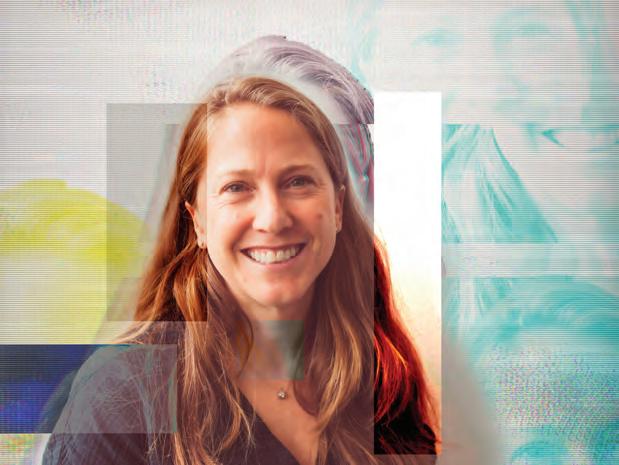
Guiding students to “see connections” is slow, iterative, and often failure-laden work. Yet these seeming barriers are the gates through which all deep learning proceeds. Yes, teachers must move at a pace that excites our students. But they must also allow ample time for the kind of productive boredom where so many creative ideas are born. In those frustrating moments when students feel stuck and in those idle hours where the commotion of their day-to-day lives slows down, students will often begin to ask their own questions, take ownership of their inquiry, and forge a new way forward.
Transformative learning must entail continual practice, adaptation, self-correction, even more practice, and finally, new creation. That is true on the athletic field, and it is true in the classroom. We get stronger when we run the extra mile, do the extra rep, or tweak our batting stance ever so slightly. Finally, and perhaps most importantly, we must make mistakes. Failures, large and small, reveal to us what we must change and what gaps in our thinking we must fill. Mistakes slow us down and force us to adapt.
I was thinking about this when I wrote the following piece in the weeks after ChatGPT exploded onto the scene in late 2022. Nationally, teachers and professors took up their pens and published essays predicting the end of the essay and the demise of education as we know it. With tremendous belief in students and in teachers’ ability to find novel solutions to daunting challenges, I sounded a more hopeful note in the January 4, 2023 issue of EducationWeek.
In one of my favorite essays about the liberal arts, William Cronon argues, “More than anything else, being an educated person means being able to see connections that allow one to make sense of the world and act within it in creative ways.” Those words have been my mantra for more than two decades of teaching.
ChatGPT has arrived at my school and is threatening to send my colleagues into early retirement. This new artificial intelligence tool has leapt from Twitter timelines and New York Times headlines into my school’s classrooms in mere weeks. As an academic dean, I have been inundated with fears about the new technology from teachers in every discipline.
But math teachers have been through this before, with the calculator long ago and the Photomath homework smartphone app more recently. History teachers weathered the storms of Wikipedia and Google, which some people promised meant that students didn’t “need to know anything.” Now, it’s time for English teachers to gather their wits and jump into the fray.
Education is the place where, if we are lucky, we can train our minds to be worthy companions for the rest of our lives. Reading and writing critically and creatively remain at the core of that project. When we harness those skills, we become more than just better thinkers. We find that the loneliness of being human is soothed.
A number of years ago, I abandoned the dominant paradigm of high school composition, the five-paragraph essay. I had grown tired of its wooden structure and skeptical of its simplistic epistemology that tells students any truth can be revealed with three bits of evidence and a tidy conclusion.
In place of the five-paragraph essay’s manufactured argument and cherry-picked evidence, I built thesis-seeking and exploratory
In just the first few days after it was released to the public, I watched my students ask this AI bot to interpret Emily Dickinson’s poems and write whole essays about those same poems in her elliptical, enigmatic style. Simultaneously astounded and disappointed (it turns out that ChatGPT’s current strength is not ventriloquizing one of our nation’s poetic geniuses), my students were quick to voice their worries with the existential doom I’ve come to expect from 17-year-olds. “What has my entire education been for?” they lamented. “Why should I bother going to college?”
While rendered with new urgency, their questions aren’t all that different from the ones students have been asking with increasing fervency in the last several decades as technology and finance have displaced the humanities’ pride of place in the firmament of liberal learning. My answer then and now has remained quite simple:
assignments that began with students’ curious observations, buzzing questions, and scraps of speculation.
The essays that students construct in my classes now might best be characterized as walks without a destination in mind. In writing these essays, they lace up their shoes, set out from home, and roam through a limitless landscape. They gaze in wonder at a murmuration of starlings whirling overhead. Like the wandering Walt Whitman, they tuck their trouser-ends into their boots and have a good time. They change directions, get lost in the brambles, find a companion to walk beside for a spell, and eventually end up in a place that they did not previously know existed. Their writing charts this journey in an unabashedly first-person voice.
These are the highly personalized assignments we must prioritize in an era of AI essay writing.
“What has my entire education been for?”they lamented. “Why should I bother going to college?”
First, I ask my students to describe the places where they sought initial answers and the substance and limitations of these first discoveries. My students might begin in dusty volumes in the library’s basement, in abstruse scholarly articles, or even in conversations with a grandmother. Describing the shortcomings of their initial discoveries prompts them to revise their questions and rethink their fledgling claims.
Soon they begin to spin a web of new and better questions. To answer these, they follow footnotes or flip back to the novel they loved a year ago. I often find them drawing maps, charting the path of their wandering. With each step into a new source, they practice critique and synthesis, asking “What does this help me understand?” and “What happens when I add it to what I already know?”
Some paths lead to unscalable brick walls. Others open to three-way forks in the road. Still others require bridges and great leaps to get to the other side of unknowing. As their teacher, I cheer from behind the hedgerow. Very occasionally, I whisper a compass reading or hand them a new pair of binoculars. My first job is to ensure that they have the tools to arrive at a place of new understanding, but almost as important is my responsibility to help them recognize the value of the walk that they took, even if their final destination remains elusive. After all, sometimes their questions should outpace their answers.
I imagine that ChatGPT will, whether I like it or not, quickly become a place on the map where my students stop for a time and look around. I won’t tell them that it is as dangerous as quicksand or as insurmountable as Everest. Instead, I’ll ask them to train their critical gaze on ChatGPT’s ready answers and decide which ones merit more investigation, as I have been doing. As always, I will ask them to forge ahead to new and different places so that the path they eventually lay down in writing will be theirs alone.
So, what will I be telling faculty now that ChatGPT arrived? Now is the time for us teachers to do some thoughtful wandering of our own. In each discipline, we must determine what it means to guide our students toward the skills that will enable lives of meaning and purpose. In the coming weeks, I’m going to be asking my colleagues to consider this prompt: “I’m a [insert your subject] teacher. Here’s how I’m dealing with ChatGPT.”
Our range of answers may only temporarily stem AI’s swiftly moving current, but in our gathering, thinking, and distilling—in our journeying—we will be less lonely together.
>>>>>My students might begin in dusty volumes in the library’s basement, in abstruse scholarly articles, or even in conversations with a grandmother. Describing the shortcomings of their initial discoveries prompts them to revise their questions and rethink their fledgling claims.<<<<<
Since prescribing a bit of pedagogical wandering in January, we’ve been doing just that along Albany Road. As we’ve watched the educational landscape rapidly shift in novel ways, we’ve used this time to learn more about AI, ChatGPT, and large language models generally. In order to advance our community-wide understanding, we brought leading AI experts to campus in April for the Deerfield Forum. We invited students to discuss and debate the ethics of AI, and we continued to remind them of our shared values of original scholarship and academic integrity.
Throughout these last few months, I’ve been struck how, amidst astonishing technological transformation, Deerfield remains well-positioned to continue to educate today’s students in the same highly supportive and firmly connected community that has served Academy students for generations. We hold fast to the foundational and transformational goals of an education rich in diverse perspectives, rigorous questioning, and unceasing persistence in the face of challenge. Honing those skills takes time and effort, both critical ingredients in transformative learning. Even as generative AI will likely automate many aspects of the future working lives of our students, we know that they must come away from Deerfield with exceptional human skills.
Those skills develop in the caring relationships our students develop gradually over time, inside the classroom, of course, but also at the sit-down table, on the long bus ride to Hotchkiss, or during a service project at the local food bank. When students and faculty share a meal or a late-night snack, they do the work of being human together, work that can never be replaced by a large language model or an instantaneous AI. Relationships at Deerfield are the bedrock for learning, and as such, we will ensure that they remain strong enough to support students as they do the messy work of making mistakes, changing course, and trying again. //
Thoughts on the future of AI in your own industry?

What are the pros and cons?
We’d love to hear from you: communications@deerfield.edu
Even as generative AI will likely automate many aspects of the future working lives of our students, we know that they must come away from Deerfield with exceptional human skills.
This past fall, the Academy’s Board of Trustees welcomed five new members, and Leila Govi assumed her new role as Board President. As outgoing President Brian Simmons P ’12, ’14 H ’22 noted upon his retirement: “We are at an exciting jumping off point, where we can pursue a whole host of program enhancements that will provide an unbelievable experience for students. This is because Deerfield has always been a great school; it’s because of the way our community came together during Covid; and it’s because we have incredible leadership in John, his team, and our new president, Leila.
The future is bright for Deerfield and I’m excited.”
SETH BRENNAN
LEILA GOVI
CHRIS HALPIN
MARC JOHNSON
CARTER BROOKS SIMONDS
DANA TANG
Deerfield’s first woman President of the Board of Trustees, Leila Govi ’93 P’26, has been a trailblazer before. She arrived at Deerfield as a freshman in 1989, the year the Academy returned to coeducation. The ratio of boys to girls was approximately four to one that year, and she was often the only girl in a class. She remembers walking to her first math class to find all the boys lined up outside the room, waiting for her to enter and choose her seat. When the teacher, Robert Hammond, asked a question, all heads turned to her. “The boys were waiting for me to answer first. I said, ‘No, no, no. That’s where it stops.’” Govi laughs at the memory. “I think all the boys had been given a stern talking-to before the girls arrived.”
As for that first group of girls, Govi says, “You had to be a bit of a daredevil to go to Deerfield that year. No one in that group was playing it safe. I look at these women now and they are some of the most incredible, brave, confident women, and that spirit has been in them since the beginning.”
Govi grew up in Saudi Arabia, the youngest of five. Her parents, both of whom were from Tunisia, cared deeply about education, and Govi fell in love with the Deerfield campus while tagging along with her three older brothers on tours of American boarding schools. As an international student, Govi initially felt out of place at Deerfield, but she found that differences between students—girls and boys, international and American—quickly fell away. “The great thing about Deerfield is everything—sports, classrooms, sit-down meals—brings you together.” Govi loved dance with Jennifer Whitcomb, learning to write from Mark Scandling, and sharing a passion for Ginger Rogers and musicals with French teacher Claudia Lyons. She played several sports, started the Middle East Club with a classmate, and studied hard.
After Deerfield, Govi studied economics at Georgetown University and then worked at JP Morgan as a research analyst for seven years. Since 2004, she has been a partner and investment analyst at Egerton Capital, work she finds thrilling: “You get to be an explorer looking for the best businesses in the world to invest in…who doesn’t want a little Marco Polo in their life?!”
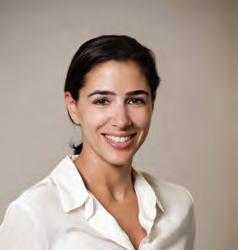
Govi’s connection to Deerfield was rekindled when she was asked to host an event for Head of School Dr. Margarita Curtis in London, where she lived for twenty-three years. She immediately bonded with Dr. Curtis, who later introduced her to then-Board President Phil Greer ’53 P’94 G’13,’16,’22,’23 “I was so moved by Phil,” recalls Govi. “I saw how deeply he loves the school and why he dedicated over 30 years of his life to Deerfield.” Greer asked Govi to join the Board in 2014. “I never thought I’d have something to contribute to Deerfield, but Phil showed me how that’s done, what service really means and the great privilege and responsibility that comes with helping to protect a school for generations to come—Phil and all my colleagues on the Board.” When the topic turns to her fellow trustees, Govi is unequivocal: “I have never seen a more impressive group of people than our board. They are wonderful, caring, thoughtful and dedicated.”
In 2022, Govi became President when Brian Simmons P’12,’14 stepped down. While she believes in the importance of diverse perspectives, Govi doesn’t dwell on being the first woman President; she thinks about the work ahead. She collaborates closely, of course, with Head of School Dr. John Austin, whom she describes as “one of most inspirational and impressive people I’ve ever met.” She particularly admires his singular focus on Deerfield’s students. “When you get that piece right, the rest falls into place.” She is also grateful to be working with Board Vice President Greg Fleming, who she says takes a great deal of time out of his busy career to ensure the success of the Academy. “He’s my wingman in more ways than I can describe and wish for!” she says.
In the coming months, Govi plans to take a temporary leave from Egerton to focus on Deerfield. Her greatest priority is the success of the Academy’s upcoming capital campaign, with the goals of supporting the student experience (including upgrading the academic and living spaces across campus), investing in faculty, and increasing access and affordability. She also hopes to bolster Deerfield’s annual fund and, in general, continue to foster a closer relationship between Deerfield’s trustees and the student body and faculty—“the faculty are the heart and soul of our school, they dedicate their lives to these kids and we in turn need to look after them – and John is their most ardent supporter of all.”
Govi and her family now live in New York City. Her son Tommy ’26 is starting his second year at Deerfield, and she hopes her younger daughter will be fortunate enough to attend the Academy as well. “When I look back,” she says, “my years at Deerfield were my most pivotal. It was the education that mattered most for my career, for my sense of being, and my confidence. I owe all of that to Deerfield. How can I not give back to a place that contributed so much to my life?
I am after all one of the lucky few to have had the privilege of a Deerfield education.”
When Seth W. Brennan ’88 P’23,’25,’27 is asked to become involved in an organization, the first question he asks himself is: Does he believe in the mission, values, and people behind the institution? In the case of Deerfield, the answer was a resounding yes. Not only does Brennan feel gratitude to Deerfield as an alumnus, his appreciation has deepened now that he has children. Annabelle ’23 graduated this past spring, Jack ’25 is in eleventh grade, and Sophie ’27 is in ninth. His youngest, Nate, has a closet full of Deerfield swag, and his wife Elizabeth is on the Deerfield Parents Network Steering Committee. “Our whole family bleeds green,” says Brennan.
For Brennan, his three years at Deerfield “were a grounding experience. I had great teachers and classmates who are among my closest friends today.” He recalls the routine but important traditions, such as sit-down meals, dress code and school meetings, and the focus on not just academics and sports, but on citizenship, connection to others, and community—all qualities his children also have experienced at Deerfield. “The school has evolved, but these fundamental traditions, values, and goals haven’t changed.”
The second question Brennan asks before joining a board is, “can I be helpful?” Brennan brings to Deerfield a background in business and finance. He spent his first three years out of college working in investment banking. He then moved to Boston as a founding member of Affiliated Managers Group, Inc., (NYSE:AMG) where he was responsible for acquisitions. In 2008, he co-founded and is currently Managing Partner of Lincoln Peak Capital, a long-term, supportive equity partner to high-quality asset management firms. He also has deep experience with non-profits and independent schools, primarily in Boston. He has served on the boards of the Isabella Stewart Gardner Museum, the Fay School, the Spruce Street Nursery School and The Park School, where, during three years as Chair, Brennan steered the school through the COVID pandemic and a head of school change.
Brennan has enjoyed his first year on Deerfield’s Board. “The trustees are smart, dedicated, experienced, and great to spend time with, and we have terrific leadership in Leila. There is a lot of foresight and energy.” His priorities include the renovation of the Dining Hall, continued investment in Deerfield’s phenomenal faculty and student experience, and preserving “the feel and setting of the campus, from the Rock to the River, while making sure it is supporting the programmatic needs of the institution.”
Brennan believes in the potential for independent schools to produce “well-equipped and grounded young adults of character who will change their fields and communities for the better.” Helping to sustain and grow Deerfield is a privilege, especially under the leadership of Head of School John Austin, whom he believes is cultivating an environment that challenges students at the same time as it supports and cares about them. “Deerfield is a uniquely powerful, impactful, compelling institution. It’s so worthwhile to be engaged and to support Deerfield—not just because I went there and my children go there, but because it’s a place that’s doing an excellent job.”
In the fall of 2020, when his daughter Charlotte ’23 was a sophomore, Christopher Halpin ’94 P’23 received an update that Deerfield had discovered a false positive Covid test. Halpin immediately reached out. As Chief Strategy and Growth Officer for the NFL, Halpin co-led Covid testing for the entire league (in addition to other priorities such as the league’s international business and data and analytics). He had previously seen false positives on PCR tests—the NFL administered over a million Covid tests during the pandemic—and he was able to serve as an informal advisor to John Austin and Director of Medical Services Dr. Bear Benson.
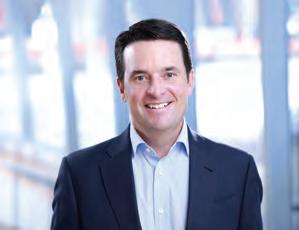
That experience led to a term on the Executive Committee of the Alumni Association, and then an invitation to join the Board of Trustees in 2022. Halpin was honored. Hailing from Worcester, MA, he was initially intimidated when he started Deerfield as a sophomore. He quickly hit his stride, gaining confidence academically, captaining

the golf team, and serving as editor of the Scroll, and as a proctor in Chapin his senior year. He credits the impact of teachers Karen McConnell, John O’Brien, and the guidance of his phenomenal advisor, Andy Harcourt. “I loved Deerfield for the emphasis on well-rounded kids who are academic, high-powered, play sports, do arts, and try new things; the busy but supportive life where your teachers are pushing you but very engaged. I benefited from being at an extraordinary place.”
Prior to the NFL, Halpin worked in private equity, first at Goldman Sachs and then for thirteen years at Providence Equity Partners, where he oversaw investments primarily in media and some in sports. That led to a connection to NFL Commissioner Roger Goodell and, in 2013, he started a nine-year run at the NFL, overseeing media strategy and business development, consumer products, and strategy and growth. In January 2022, Halpin joined Interactive Corp, a digital holding company, as chief financial officer and later added chief operating officer to is responsibilities. Throughout his career at Providence, the NFL, and IAC, Halpin says, “you are exposed to a lot of things you haven’t seen before, and you learn how to ask a lot of questions, hopefully without embarrassing yourself.”
He describes his first year on the Board as “thoroughly energizing.” He is impressed by the diversity of talent among the trustees, the thoughtful discussions, and Dr. Austin’s combination of clear vision and openness to input. “It’s been fully intellectually stimulating for me to think through the strategic challenges and how to position Deerfield for the future.” He looks forward to supporting CFO Matt Sheehy and Finance Committee Chair Greg Fleming, as well as grappling with long-term challenges, such as the balance between Deerfield’s goal to educate well-rounded students and the growing pressure felt by parents and students to specialize.
Through Charlotte’s experience, Halpin has seen Deerfield become even more warm and welcoming; but, he says, “it’s still the ethos of a commitment to community, to celebrating your classmates’ successes, to being caring and to producing young people who are connected to their society and have the tools to succeed.”
One Sunday early into his first year at Deerfield, Marc Johnson ’74 P’08,’11,’14,’17 sat down for breakfast with a few other sophomores. An older man rode through the Dining Hall on an electric scooter and parked himself at their table. He asked the boys about their classes, sports, and life so far at Deerfield. Then, he moved on to the next table. The man was Deerfield’s legendary headmaster, Frank Boyden, then 92 years old and retired but still checking in on students. When Johnson gives back to Deerfield, as he has done in many ways over the years, he thinks back to that encounter with Mr. Boyden and Deerfield’s long-standing commitment to the student experience.
At Deerfield, Johnson played football and golf, worked on the newspaper and, under the tutelage of teachers Daniel Hodermarsky and Yuji Kishimoto, developed a passion for art, architecture, and art history. Johnson attended Tufts University and then the Tuck School of Business at Dartmouth. He worked in the beverage industry, first at Pepsi USA and then as founder and president of Mad River Traders, a natural, non-alcoholic beverage company. After selling that company in 2001, Johnson followed his love of architecture and founded Stone Harbor Land Company, an investor and developer of residential and commercial properties in New England.
Throughout this time, Johnson was steadfast in his support for Deerfield. He was a class agent in the 1970s and 80s and then, in the 1990s, served on the Executive Committee of the Alumni Association. All four of his children—Annie, Campbell, Blair, and Gordon—attended Deerfield and, in 2012, Johnson, former Trustee Linda Whitton P’01,’04,’09,’12, and ten other then-current parents founded the Deerfield Parents Network. He was also the DPN’s third president. During that time, he led the project to renovate the historic Little Brown House on Albany Road, raising funds and overseeing construction. Joining Deerfield’s Board in 2022 was merely a continuation of years of volunteering.

Johnson has been amazed by “the breadth and depth” of Deerfield’s trustees. For his part, he looks forward to sharing his extensive knowledge of the school, his experience fundraising, and his background in real estate development, especially as the trustees work toward creating a new campus Master Plan. “I can hopefully help with strategic development and implementation of projects,” he says. “This includes everything from long-range planning, working with the architects, and making sure we are on budget and on time.”
Johnson’s four children all had terrific experiences at Deerfield and made lifelong friends. That, along with his own time at Deerfield, inspires his service: “I do it for the heads of school—Mr. Boyden and the five that have followed him—for their ability to carry on important traditions and reinforce values that are as meaningful today as they were in 1902. I do it for the faculty, such as Mr. Hodermarsky, who inspired me to follow my passions. And I do it for my kids, and all those students who arrive at Deerfield unsure of themselves, like I did, but leave with the knowledge, character and enthusiasm to make a difference in the world.”
It would be an understatement to say that Carter Brooks Simonds ’95 P’26 brings valuable experience to Deerfield’s Board of Trustees, particularly to her role as vice chair of the Investment Committee. She worked in investment management at Blue Ridge Capital from 2000 to 2017 and as partner starting in 2005. Prior to joining Blue Ridge, Simonds was an analyst at Tiger Management. She received her BA in Economics from Yale University and her MBA from Harvard Business School. She jokes that, since her retirement in 2017, her job title should be “professional investment committee member:” she serves on the investment committees of Yale University, Greenwich Academy, the Chan Zuckerberg Initiative, and, until recently, the Brearley School. She also is not actually retired; she manages the family offices of Four Pines Partners.

As a member of the first wave of girls at Deerfield, Simonds has always felt a huge affection for the school. She played field hockey and tennis and was an editor of the yearbook. She particularly loved Andrew Harcourt’s AP Biology class, Michael Cary’s State and the Individual course, and her advisor Claudia Lyons, who always encouraged Simonds to push herself. Most importantly, she made extraordinary friends with whom she is still close.
When she knew her eldest daughter, Sophie, would be starting Deerfield in 2022, Simonds accepted the invitation to join the Board. She has loved watching Sophie experience all of Deerfield’s traditions and positive school spirit. “It’s an incredibly happy campus,” Simonds says of Deerfield today. “The school honors achievement and celebrates its students; there’s joy and rigor, and that’s a wonderful combination.”
Simonds’ son Brooks, is starting ninth grade at the Brunswick School. She also has a fifth grader, Charlie, and a second grader, Lindsay.
As a trustee, Simonds looks forward to addressing the pressure that specialization places on the faculty. “We want to make sure that we can attract incredible faculty and still maintain the values and community that makes Deerfield so special.” Her greatest priority, of course, will be continuing to grow Deerfield’s endowment. “We are fortunate that previous stewards have allowed Deerfield to have this extraordinary resource. The draw from it grants the school so many opportunities—retaining the best faculty, providing financial aid, renovating buildings and offering exceptional programs.”
In her first year, she has been impressed by the level of sophistication of Deerfield’s board. “The trustees have a good sense of our roles and how we should help the school. It’s also an incredibly collegial board. I’ve made really good friends after only three meetings.” One of the highlights of connecting with older and younger trustees has been “seeing our common threads of experience, and also the ways that Deerfield has only become a better version of itself. The school is so much more intentional and thoughtful today, and with John Austin’s leadership, I think it is the best school in the country.”
Dana Tang P’24 started her tenure on Deerfield’s Board of Trustees at the perfect moment. Plans to renovate the Dining Hall were underway, and Head of School John Austin and Board President Leila Govi were unsure how to articulate their concerns about the designs for the new construction. As an accomplished architect, Tang was able to jump in, pinpoint the issues and help to redirect the design. The new design accomplishes the key objective of creating a space where the entire Deerfield community can gather for meals, while still maintaining the historic high ceilings, tall windows, and gracious space. “It’s been exciting to work with the team and rewarding to lend my expertise,” says Tang.
Tang graduated from Yale School of Architecture, where she currently serves on the Dean’s Council. She joined the New York architecture firm of Richard Gluckman in 1995 and became a partner of what is now Gluckman Tang in 2015. She has worked on campus master plans and designed buildings primarily for art and educational institutions, including Syracuse University’s School of Law, Drexel University’s Korman Center, Zhejiang University Museum of Art and Archaeology, The Island School on, Vassar College’s Kenyon Hall, and the University of Pennsylvania Museum of Archaeology and Anthropology. She has a strong interest in sustainable planning and design and also holds a master’s degree in Asian Studies, with an emphasis on Chinese culture and history.
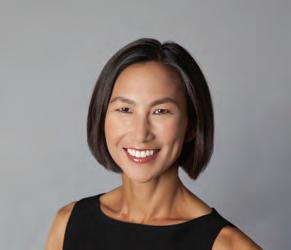
It was her son Kai Darrell’s experience as a freshman in the fall of 2020 that inspired Tang to join the Board. “Deerfield navigated the challenges of the pandemic in an amazing way,” Tang says. She saw the Academy quickly pivot to reconfigure the class schedule, curriculum, dorms, Dining Hall, and student life programming. Dr. Austin, his senior team, and the trustees showed phenomenal leadership, she says, and the faculty was “all in” during that difficult year, demonstrating a commitment to the whole student and to a sense of belonging and community.
“Everyone showed their true colors, and I thought, ‘I want to be a part of that.’” Tang has found her first year on the Board to be exhilarating and inspiring. Her fellow trustees are “smart, open-minded, and extremely engaged and committed to Deerfield.” Not surprisingly, Tang is particularly active on the Buildings and Grounds Committee. She notes that, “one of the most valuable assets Deerfield has are its campus and buildings. They require ongoing attention, care and updating to support the school’s mission.”
In addition to the Dining Hall renovation, Tang is excited about plans to enhance Deerfield’s core humanities buildings, improve pedestrian connections, increase faculty housing in proximity to students, and upgrade dorms.
Kai will graduate in 2024, but Tang is happy to continue her service on the Board of Trustees. “Deerfield students have the ability to have a broad impact as they move through the world, by fostering and encouraging the values that Deerfield stands for: a commitment to community, a desire to include everyone, and an ability communicate across differences.”
As this magazine goes to print, the Annual Fund Team is still counting final donations received during the 2022 - ‘23 school year. Thanks to your generosity, we’ll likely exceed last year’s results, both for overall number of donors and total dollars raised for the Annual Fund!

Your support is critical to providing the Deerfield Experience for our students, and reflects the special strength of our amazing community. Thank you!
We look forward to building on this momentum in the coming year. GO BIG GREEN!





Don Dwight concluded seven decades of service to the Newspapers of New England board of directors on Sunday, April 30, in a ceremony held at the Deerfield Inn. Family members Chris Dwight ’02, Helen Dwight ’04, and Art Dwight ’79 were there to celebrate, along with his wife Nancy, a past Deerfield trustee. “Congratulations, Don/Dad!” Art recently commented.
“We are blessed with good health and stay active with work and sports. I continue as a professor of pathology at Duke and devote significant time to the Executive Committee in Medical School Admissions. Anne also continues to work for Duke, and we both enjoy family, friends, and volunteering with the YMCA of the Triangle. Our son Scott is a highly regarded music attorney in Los Angeles. Grandson Dalton is a communications analyst in Charlotte, NC, and his younger brother Reece is a sophomore at the University of Colorado. Our daughter Lisa lives in Madison, CT, has a graduate degree in Early Childhood Intervention, and is married to a pharmaceutical executive. Granddaughter Keelan is a developing equestrian, and grandson Christopher is a high school ninth grader, plays select lacrosse, and, much to my delight, has an interest in Deerfield. On our recent visit to CT, we toured the Academy, and while I loved walking the grounds and fondly describing my two wonderful years there, he fell in love with the institution. I wish good health and much joy to all my classmates.” —
William BradfordJim Banner was sad to report that his class lost George “Tip” G. Atkeson on April 21, 2023. Tip’s obituary read: “He died under hospice care from the complications of a brain tumor at his home in Essex, CT. A native of New Haven and a graduate of Deerfield Academy, in college Tip majored in the distinctive subject of political and economic institutions and was a member of Fence Club. The son of an admiral, it was not surprising that after college and the completion of preparation for naval command at Officers Candidate School in Newport, RI, he spent three years as an officer on destroyer duty in the Atlantic. Subsequently, he gained an MBA degree from the Wharton School of the University of Pennsylvania. Early in his business career, Tip rose through various positions at General Foods, then became vice president of marketing of L’Oreal’s American subsidiary, vice president of both product marketing and marketing operations worldwide of Avon Products, and, from Antwerp, marketing director of the Belgian division of General Foods. Subsequently, he shifted into the world of executive search to become a partner and managing director of Ward Howell International, with which he topped off his career in charge of the Stamford, CT, office before retiring in 1997. Outside of his work life, Tip was long active in civic affairs in Greenwich, CT, on whose representative town government he served as he did on the board of directors of the Greenwich Land Trust and as co-president of the Greenwich branch of the English-Speaking Union. A singer in
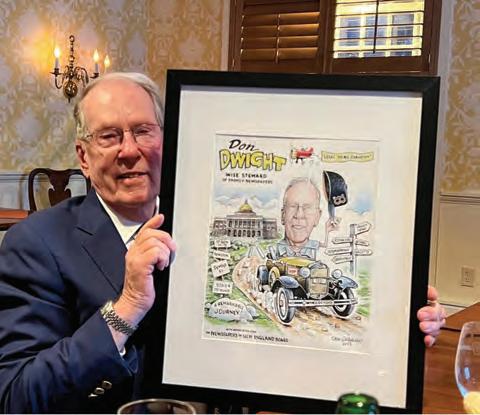
school and college, he was also a member of the men and boys choir of Christ Church Greenwich, which gave him, a strong anglophile, the opportunity to sing in English cathedrals and with his wife Janice to spend time in their Cotswolds cottage in Chipping Campden. Moving after retirement to Essex, CT, he didn’t relent. He became a member of the board of directors of the town’s local concert series and as executive director of the Southeast Connecticut Committee on Foreign Relations. He kept singing, this time in the choir of St. John’s Episcopal Church in Essex. Tip was an award-winning photographer whose works hang on many classmates’ walls, including those of Roland Machold, who recalls Tip enviously as an early adopter of a ‘claw’ first-baseman’s mitt, which he used to devastating effect on their fifth-grade team at Sidwell Friends School in Washington, DC. George (as he remained known to some) was, though a modestly spoken man, a shrewd, serious business practitioner and civic activist. Born with a sunny disposition, he went about the world with an easy, frequent, puckish smile and an infectious warmth of personality. Predeceased in 1993 by his first wife Mary, he is survived by his second wife Janice, his children Meade, Jamie, and Elizabeth Saunders, their families, and ten grandchildren.
Stani Yassukovich shared, “A belated note—after a long void—to advise that I am still extant, live in the Western Cape Province of South Africa, and write books. Several are in the alumni section of the Frank L. and Helen Childs Boyden Memorial Library.”
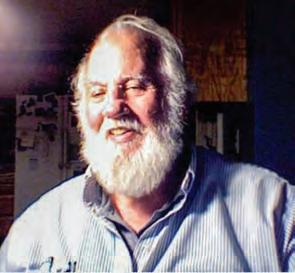
On February 9, 2023, Bill Marsh died at his home in Scottsdale, AZ, from complications related to Parkinson’s disease. At his side was his wife Irene, his companion for over forty years. After Deerfield, Bill went to Princeton and served as a lieutenant in the Marine Corps for two years. After Harvard Business School, he had a successful finance career based in Boston. His wife Irene and two sons from his first marriage survive him.
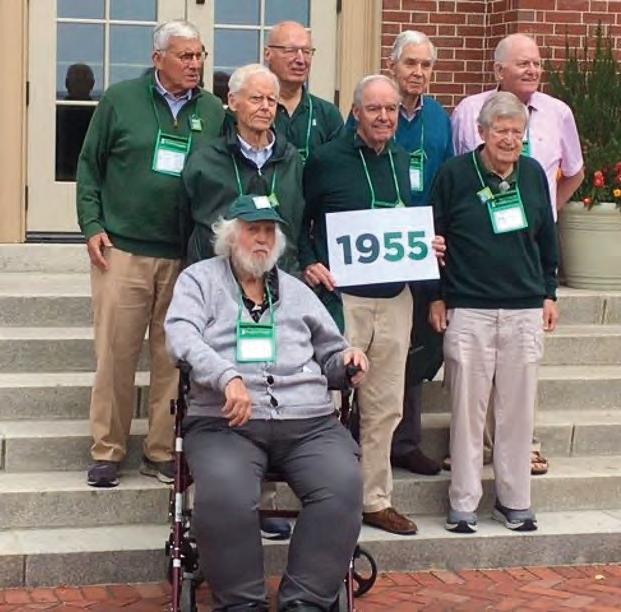
Jane Hobard wrote, “I am sorry to inform you of the death on April 19, 2023, of Alfred Loomis Hobart. Al died peacefully at home in the company of his family after a long illness, but he skied and raced his sailboat until 2021. The ski racing academy Al founded, Green Mountain Valley School, is celebrating its 50th anniversary in June. Sadly, he will miss that celebration, but at the celebration of his life on April 29, the Mad River Chorale, a community chorus of which Al was a founding member of the bass section, sang the Evensong.”
Susan Strakosch passed along the sad news that John D. Glasheen died on January 2. “John’s life was shaped by the times in which he lived, his friends and family, and some of the most critical struggles of our times, such as ending the Vietnam War and promoting civil rights and marriage equality. He was a scholarship student at Deerfield and the son of Marion (Dougherty) Glasheen, Class of 1918. Throughout his life, thinkers such as Frank Boyden, Deerfield’s legendary headmaster, and many progressive politicians influenced
John. A lifelong political activist and lover of live music, John had a rich and varied career. After graduating from Brown University, he was a high school social studies teacher and a textbook editor, and earned a master’s degree from the University of Massachusetts, and was ABD from the Harvard University School of Education. After teaching in Brown’s education department, John was a social service administrator and political campaigner, ending his career as executive director of Rhode Island’s South County Community Action Program. In retirement, he was often at the Rhode Island state house with his fellow Unitarian Universalists, promoting social justice issues. He is survived by his wife, Susan Strakosch, his children, Leah, John (Jiva) and Megan, five grandchildren and many nieces and nephews.”
Nat Emmons shared, “It’s my sad duty to report that our classmate Tim Crowley passed away on December 31, 2022 after a battle with cancer. We only had Tim for one year (1959-60). I wish we had had him for four.”
“We are still living in Canada. I came here in 1969 for two years to get an MBA. After two years, I never gave a thought to going back. Alma and I have been retired for about 15 years. When we retired, we were told that ‘at the start of the day you have nothing to do and by the end of the day, you only have it half done.’ That’s us in a nutshell. In 2019, we decided to sell our home and travel the world. We got as far as Australia when Covid struck, and we returned home. Since then, we have been making the most of local opportunities. We do our best to stay physically and mentally active (almost to a fault); it is our ‘wonder drug.’”—Tom Thayer
Don Oglivie shared an update: “I can’t believe it has been 62 years since we graduated from Deerfield. Years full of opportunity, challenges, loss, and love. I went on to graduate from Yale College and Stanford School of Business. Met and married the love of my life, Fan, and we had two wonderful children, Jennifer and Adam—both went to Andover and Yale. Jenny went to Harvard Medical School and is currently head of endocrine surgery at Yale. Adam became an artist and currently works at Rockefeller University in New York City. We have three grandchildren. My first real job was working in the Office of Systems Analysis under Defense Secretary Robert McNamara. I also served as Associate Director of the Office of Management and Budget under President Ford. I helped start the Yale School of Management, and was president of the American Bankers Association for twenty years. Now happily retired on Martha’s Vineyard. I am grateful every day for the life lessons I learned from Frank Boyden and the many Deerfield friends I have had over my lifetime. Best wishes to you all.”
Doug Gortner shared, “Our classmate Hedgman Smith passed away suddenly on July 25, 2017 at The Seasons in Cincinnati, OH. Hedgman held degrees from the University of Virginia, Charlottesville, VA, (BA in History and JD Law) and the Parsons School of Design, NY. Hedgman began his career teaching history and serving as a counselor at Sayre School in Lexington, KY. After obtaining his degree in fine arts from Parsons, Hedgman began a lifelong career in advertising, starting as an art director with McCann Erickson Advertising, later as an associate creative director with Trone Advertising, and eventually retiring after working independently in both Louisville, KY, and Philadelphia, PA. During his career, Hedgmen was influential in numerous national advertising campaigns including Camel cigarettes, American Express, and Fleet Labs, where he coined the catchy but unused slogan ‘We’re #1 at #2.’”
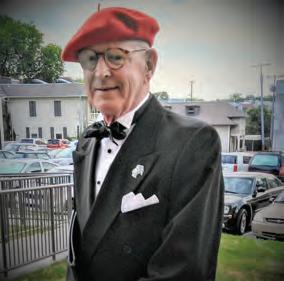
Terrence Marr died of lung cancer peacefully and at home at the age of 79 on March 29, 2023. A member of the soccer, hockey, and baseball teams at Deerfield, Terry went on to play hockey at Brown. He enlisted in the US Army and served stateside at Fort Dix, NJ, rising to the rank of drill sergeant. Following many years as a teacher and coach (the Winchendon School in Winchendon, MA, and St. Edward’s School in Vero Beach, FL), Terry was a YMCA director in Florida and New York before beginning a new career in financial planning. He retired in 2010 as president of NIA Securities. Survivors include his wife Ann (Whipple), daughters Abigail Doft (David) and Melissa (Gary Lichtenstein), grandchildren James, Lucy, Matthew, and Victoria Doft, and brother-in-law Chris Whipple ’71. His older brother, Robert ’58, predeceased Terry.
“We have luncheons every so often with ’61 classmates living/visiting in the West Palm Beach area,” says Tom Poor. “Conversations are wide-ranging, interesting, and often embarrassing. This past November’s gathering featured Steve Schwartz, Jack Suitor, John Revson, and me. No feelings were hurt too badly.”
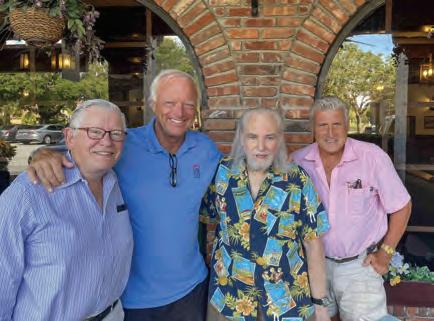
“The entertainment business (in the South) is thriving (Mike Moran ’60 and Harvey Reed),” reports Doug Gortner. “Though my one-man show for my photography is on hold due to scheduling; I hope it will soon return. Working at Deerfield converted me to the GOP. As previously, I want the same for the world, but now I understand how the world actually works. Perhaps you were not aware that the Quid was the Massachusetts Republican Kingmaker. Among his legacies in that capacity was the location of UMass HQ to the town of Amherst in an effort to bring more jobs to a poor dairy country during the Depression. I signed on to serve as a GOP Precinct Captain, making our revered Headman proud! Eight months later, I serve on a committee of five who will run GOP’s Nashville Biennial Mass Convention. Although a poli sci major at Brown, I hadn’t a clue how it works down at the nitty-gritty level (sounds like a good name for a band)! Saw a girl in a Choate t-shirt today. She said you must be Deerfield. When I told my good friend at church, he responded, ‘and she didn’t call you a Green Weenie? Shame on her.’ All DA-related folks are welcome to sleep on my couch or join me in a nice quiet restaurant where one can carry on a conversation. Beat Choate!”
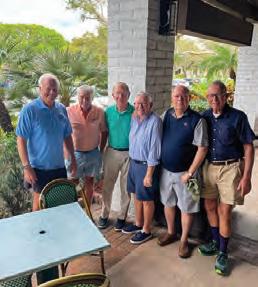
“Snowbirds (Steve Schwartz, Tod Ackerly, and Curt Mills) arrived to experience the good life. More memories of teachers, breaking the rules, outstanding classmates, and traditions that have passed away.”
you“Ifyoufindyourselfinaplacewhere believeseesomethingandyoureally init,thengoforit.Nothing soaboutitwillbeeasyandtherewillbe manyopportunitiestoquit,but learnifyoumeetthechallenges,you’ll whatyou’recapableof.”
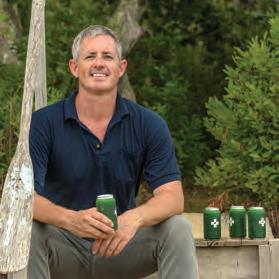

It took about two years from conception to getting the product into his hands. Tom Olcott had not planned on becoming an entrepreneur in the beverage industry. In fact, he’d realized his boyhood dream of becoming an architect, first taking architecture classes with Robert Moorhead at Deerfield, then pursuing it further at the University of Virginia. Upon graduation, Tom moved to Nantucket, where he established himself in his field, enjoying all the island had to offer while designing homes for a growing list of clients.
Then, about a decade ago, a health scare brought Tom more awareness of nutrition and what he was putting into his body. He was introduced to matcha—a superior blend of green tea ground into a fine powder—that quickly replaced his coffee habit. He found matcha to be a cleaner energy source than coffee; it came
without a crash and was chock-full of nutrients. “Matcha tea is one of the greatest things in nature for your body and as I learned more about it, I really loved having it as part of my life, but every time you want to have matcha you have to make it yourself, which is kind of a reverent process, but nonetheless a process,” says Tom when explaining where he got the idea for Motto Beverage Company, which produces a sparkling matcha drink. “The idea for Motto was to deliver a full serving of matcha in a fun and accessible way where you could just grab it and go.”
“Motto came about on a winter day. I figured it was just as good cold as hot, so we mixed it up with a few simple ingredients,” recalls Tom, referencing his business partner and longtime friend, Henry Crosby. Tom and Henry had constantly bounced business ideas off one another, as close friends sometimes do. “One day, I called Henry and said, ‘Hey what about this?’ and it really became something to consider when we found that no one in the world had made matcha easier to drink.” Motto was the first company to put matcha into a ready-to-drink format in a glass bottle, and there is still nothing like it on the market over a decade later.
“I’ve always been a little unconventional and interested in things off the beaten path,” notes Tom, who as a student, displayed entrepreneurial characteristics: a love of constant learning but a preference for unstructured environments. Life as the founder and CEO of a growing company in a very competitive space requires agility and ingenuity; no day is the same and each one brings its own unique problems that need to be solved. The product, which was in Wegmans, Whole Foods, Kroger, and numerous other stores and corporate headquarters across the country, was pulled from shelves in 2019 when the company decided to reformulate and repackage in cans, solving logistical issues, opening them up for online sales, and making them more compliant with venues, among other reasons. “I like waking up and having a fresh set of challenges every day and unexpected weeks,” replies Tom, when asked whether he misses his life as an architect. “You never know what a day is going to bring. I like that. I wouldn’t do so well in a steady job, so to speak. This is more adventurous.”
Tom looks back fondly on his time as a Deerfield student, noting how the school prepared him to meet the challenges of the world with integrity while aiming for a high standard of excellence. “Honor was a Deerfield standard,” Tom says, noting that most of the Deerfield alums with whom he has crossed paths seem to hold to those virtues as well. “The institution strives to set a high bar for integrity and a standard for the way we treat each other. Treat others the way you want to be treated. We learned a lot about that at Deerfield and it’s engrained.”
Tom, who will be moving to Brooklyn, NY, in the near future, currently runs the business from his home in Nantucket with a team that works remotely. The original Motto flavor will be joined this fall with a Rooibos tea soda, part of a line of other plant-based drinks coming out that are not based on matcha. “I like working for myself, but it’s the hardest thing,” adds Tom, who nevertheless has no regrets about leaving a stable career behind for uncharted territory. “If you find yourself in a place where you see something and you really believe in it, then go for it. Nothing about it will be easy, and there will be so many opportunities to quit, but if you meet the challenges, you’ll learn what you’re capable of.” //
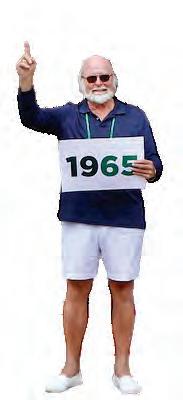
Ralph Everett Penny, 77, of Greenwich, CT, passed away peacefully on March 10, at Columbia Presbyterian Hospital in NY with loved ones by his side. Ralph was born in White Plains, NY, the son of the late Everett Joshua Penny and Helen Margaret Penny. He is survived by his loving wife, Ann, his devoted stepdaughters Kristen Bozza and her husband, Larry Gellman and Kerry and her husband, Kurt Funkhouser; his older brother John (Janet) and his twin sister, Bonnie Verses. Additionally, he is survived by nieces and nephews. Ralph was preceded in death by his brother and sister-in-law William and Vivian. After his years at Deerfield, Ralph earned his BA from Denison University. He later earned his MBA from Columbia Business School. Ralph enlisted in the US Navy and was on active duty from 1967-1970. During that time, he went on two deployments to Vietnam. He was in the Naval Reserve Active Duty, serving on the USS Valdez and as Commanding Officer of the USS Boulder. Ralph honorably served in the Naval Reserve for 30 years, retiring as a captain. Over the years, Ralph’s volunteer commitments were varied and meaningful. To list just a few: he was president of the White Plains Rotary; chair of the YMCA of Central and North Westchester; board member of the Westchester College Foundation; president of Hitchcock Presbyterian Church, Scarsdale; board member of the Visiting Nurse Service of Westchester; led services as a deacon at North Greenwich Congregational Church; and was District 11 representative for the Greenwich Representative Town Meeting. Life doesn’t offer many guarantees, except maybe for these: If music were playing, Ralph would be dancing, if people were gathering, Ralph would be mixing and mingling, if you needed a hug, he’d be hugging, if you needed an ice cream, he’d be buying, and if you needed a friend, he’d always be there!
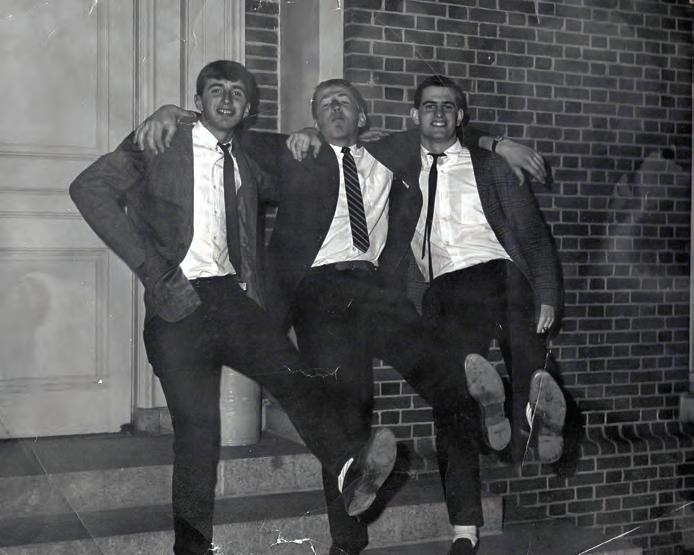
1966
David Van Etten shared a life update, “Now, with work behind us, Janet and I continue to live in the SF Bay area. Two of our three sons and all four of our grandkids live in Washington, DC, so we travel there frequently and have enjoyed many excursions to the local museums. One of our sons works for the US State Department with a focus on East Africa, and we visited that region several times while he was based in Nairobi. We keep busy with travel, book groups, and lots of walking. I occasionally get together with Brewster Ely in SF or New Hampshire, where we both spend time in the summer, and also with Dave Thomas in DC.”
1967
Bill Walker passed along this story: “Reading John McPhee’s collection of notes at the back of the recent Deerfield Magazine reminded me of a time Mr. Boyden took a moment out of his very busy daily schedule to meet with me to address a personal family matter. In 1965, I was asked to report to Mr. Boyden’s office. I was worried, as I was not sure why I would be singled out as it was no routine matter to be asked to meet one-on-one with the headmaster. Mr. Boyden asked me to sit down and said, ‘I have been speaking with your mother in New York City. My understanding is your father, who is divorced from your mother and has caused a lot of headaches in her life, is threatening to come here to Deerfield and take you away. I want you to be rest assured that will not happen. I want you to just concentrate on your studies. If your father shows up, I have instructed Mr. Sullivan to remove him from the campus by whatever means necessary. You are excused.’ And out I went. I was amazed Mr. Boyden even knew who I was, no less took the time to meet with me individually and not delegate the message through someone else. My father never showed up, but I knew Red Sullivan would have handled it if he had, as Red’s reputation preceded him!”
Jim Burns exhibits Modification paintings (right) at Matta Space in Santiago, Chile

Jeff Marshall has published his third novel, Squeeze Plays, a modern morality tale about wealth and corruption in New York and London that draws on his experience as a financial writer and editor. The book has received five-star reviews from several professional reviewers and was named a notable indie book of 2022 by ShelfUnbound. Jeff has lived in Scottsdale since 2008 and has recently been part of a class group that holds regular Zoom calls; the group, spearheaded by Paul Bendheim, includes Rick Barton, Ted Higgins, Bill Post, Bill Porter, Rob Walbridge, Greg Fell, Dave Doubleday, and John Bass.

Painting the World Trade Center 2001-2021
BY TODD STONEAs an artist-in-residence at the World Trade Center for over a decade, Todd Stone brings a deeply personal and intimate connection to his paintings. The full-color book presents a carefully curated selection of his work, immersing readers in the vivid imagery. An insightful commentary by Jan Ramirez, the Chief Curator of the 9/11 Memorial Museum, provides valuable context and further enriches the reader’s understanding of Todd’s art and the historical significance of the World Trade Center reconstruction.
With meticulous research, Andrew Meier has written an extraordinary biography spanning four generations of the Morgenthau family, which of course includes Henry Morgenthau III ’35, who died in 2018 at the age of 101. Meier exposes the virulent antisemitism they faced while his captivating narrative weaves personal anecdotes, historical events, and societal changes. This book offers an engrossing and comprehensive account of the family’s legacy in almost a thousand pages. Morgenthau is a remarkable multigenerational saga, showcasing Meier’s affection for the family and their significant contributions to society over 150 years of world history and Jewish American life.

1968
Lennie Jernigan shared that Cranford Stoudemire died on March 21, 2023. “The photo is Cranford and me at his home in New York City in October 2022. The last time I saw him.”
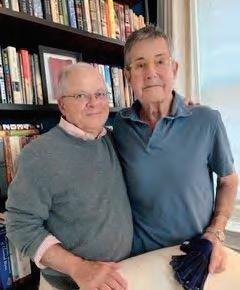
1969
Marjorie and Joe Moriarty were married on Saint Patrick’s Day 2023 in a lovely ceremony at Graceland, with family and friends in attendance. The happy couple resides in Baldwin, GA. (pictured p.61, bottom left)
John Fisher writes, “Sadly, Tim Gardner passed away after a two-year battle with lymphoma on February 13, 2023. Tim was a four-year student at Deerfield, but he spent his senior year on an approved independent study at Dinamy in Worcester, MA. Tim attended the University of Colorado and received an MBA at Kellogg School of Management. He was a longtime resident of Denver, CO, and he retired in 2019 as the CFO of the University of Colorado-Gates Institute of Regenerative Medicine Technologies. Besides his family, he was an avid sailor and lover of the mountains and the outdoors. He had hoped to be at our 50th Reunion; he will be remembered fondly by his classmates.”
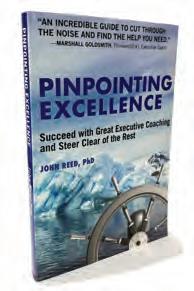
This guidebook provides a comprehensive picture of today’s executive coaching world, enabling readers to understand the field better and make educated choices in choosing prospective coaches. Reed, a leading advocate for more substantial professional standards and competencies, has been tracking trends and assessing coaches through a thorough analysis of track records and credentials, providing insight between the sub-par, the qualified, and the truly great coach.
Married on May 6, 2022, Megan Henry and Hank Stuart. (p. 61 bottom right) The couple live in Rochester, NY. Both are active sailors on Lake Ontario and travel extensively.
Hal Findlay and his Serendipity sailed (p. 61 top left) around the world together with the fleet of the Oyster World Rally. His wife June and son Nick joined him. They started January of 2022, and finished April of 2023. 27,000 miles at 6.5 knots! “An amazing adventure. Beautiful places, yes. But the magic is the people!” Hal said.


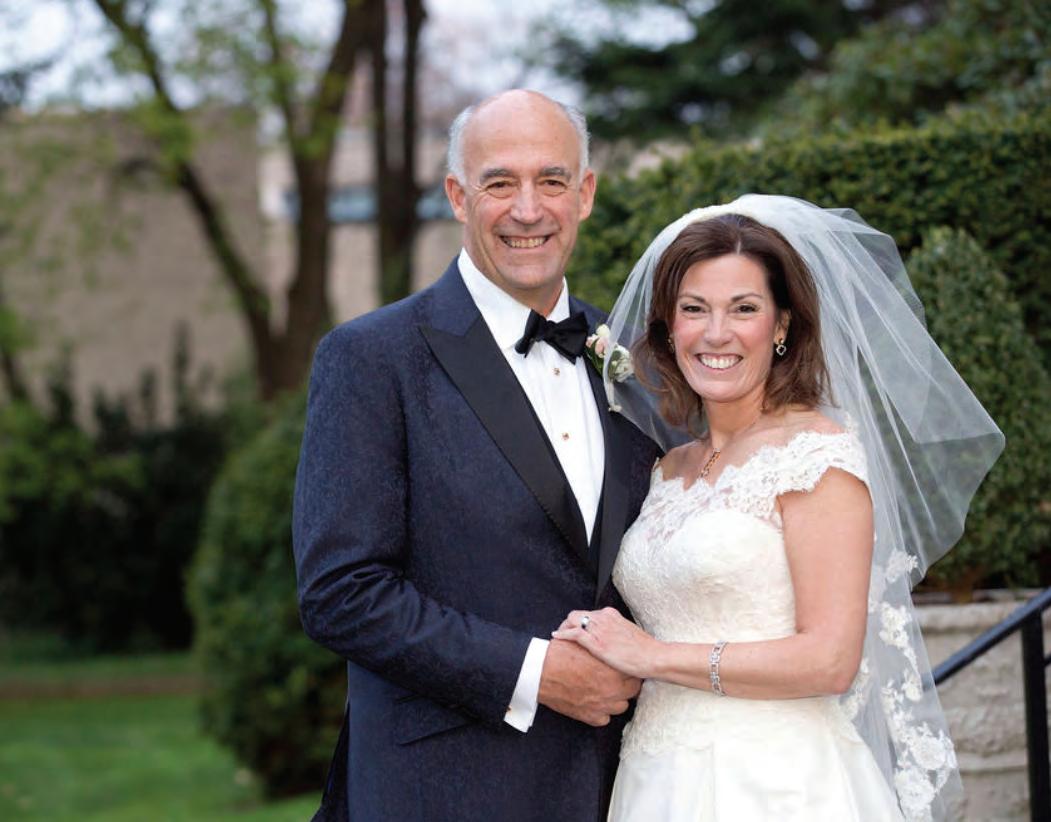

“Essential gear for early April fly-fishing on the Eagle River (Colorado)—your lucky DA fleece hat!” Dwight Hilson
Jennifer (Dodwell) Cappadona has hotel management in her blood. Born and bred in Bermuda, she is part-owner of the Reefs, one of two family owned and operated resort hotels on the island. Her father, David Dodwell Sr., just celebrated his 50th anniversary with the Reefs, having started as general manager in 1972 before acquiring the resort in the 1980s.


When Jennifer left Bermuda for Deerfield, she planned in the back of her mind to return one day to help in the family business. She says, “Everybody knows about Bermuda shorts, pink sand, and the ‘dark ’n’ stormy.’ But beyond those, Bermuda is such a special place. There’s British-derived culture but also a lot of Caribbean, American, and Canadian influences. It’s just a melting pot. And that has created this wonderful, unique culture.”
Living away from Bermuda for the first time, Jennifer enjoyed her four years at Deerfield, recognizing how easy it was to learn and mature at the Academy. “It’s such a formidable time in your life, and you’re doing it away from home, but it was an amazing experience. What I learned from my teachers, coaches, and classmates was invaluable, and I carry with me still.” Jennifer also appreciates the strong friendships forged at Deerfield and has remained particularly close with a group of seven friends.
After Deerfield, Jennifer followed in her father’s footsteps, heading to the Cornell University School of Hotel Administration, where she earned a Bachelor of Science in Hospitality Management. Her first professional experience was the management development program at the Four Seasons Hotel in Washington, DC. She spent five years at that property, serving in several roles, before transferring to the Four Seasons in Boston to serve as the Front Desk Manager. She then worked for about a year and a half as the Front Office Manager at the Ritz Carlton in Chicago before returning to the Four Seasons in Boston as the Reservations Manager.
Jennifer valued her experiences at the Four Seasons hotels, noting, “It was just such a wonderful company to learn and develop with.” In addition to her work in domestic properties, she had opportunities to explore other regions of the world; she spent three months at a property in Bora Bora and two months at another in Whistler, British Columbia.
Despite her positive experiences with the Four Seasons company, Jennifer felt the tug of Bermuda and her family. “Eventually, it comes time to ask yourself, ‘Do you want to move home?’” Her answer was yes. By this time, she was married to Jim Cappadona, who thankfully could continue his career in Bermuda. Her brother, David Dodwell Jr., is the General Manager at the Reefs. Together with David and their father, Jennifer now runs the hotel.

Jennifer finds that being part of a family business “is a great thing.” She oversees marketing and is involved in major capital expenditure projects for the property’s 60 hotel rooms and 19 residences. The role provides her with flexibility, which is helpful since her children are ages four and two. She says that her family is both supportive and brutally honest with one another, which helps with problem-solving and idea generation.
The Dodwells work hard to create memorable experiences for guests. Jennifer oversees signature programs, including Monday Rum Swizzle Nights and Repeaters Parties on Thursdays to honor those visitors who have reached milestones in their number of stays at the Reefs.
All the fun and traditions stopped in the spring of 2020 when Covid hit. Bermuda enacted extremely strict preventive regulations, with no commercial flights for several months. Jennifer recalls, “The hospitality industry came to a screeching halt. It was very eerie not to have a single person on our beach during the height of summer.”
Locals picked up some of the slack. Bermudians had always patronized the Reefs’ restaurants. Stuck on the island, several planned “staycations” at the property. Still, business was down, making it a very stressful time. Jennifer says, “Worrying over our staff’s welfare kept us up late at night more than anything else.” The Reefs employs 120-140 people who depend on the property for their livelihoods. The family also remained committed to providing health insurance to their employees, even when their staff weren’t getting the normally required number of hours. Cash flow was tight. “It was a constant jigsaw puzzle, being a puppet master to buy a bit of this to save for that, and make it to another day” says Jennifer. “There were some dark days in Covid, but we did creative things to be frugal and to get by until it was over.”
Now, tourists have returned, bringing with them a sense of normalcy and optimism, and a 2020-planned renovation project is finally underway. It’s safe to say that the Dodwells weathered the pandemic and can return to running the business they’ve built. As Jennifer says, “It doesn’t feel precarious anymore and we are excited for all of the great things that we know are in The Reefs’ future.” //
1 oz. White Rum
1 oz. Black Seal Rum
1 oz. Gold Rum
1 tsp. Orange Juice
1 tsp. Pineapple Juice
1/4 oz. Apricot Brandy
1/2 tsp. Grenadine
1 dash Angostura Bitter
Pour ingredients into glass pitcher; add plenty of cracked ice and churn with a Swizzle Stick. (A cocktail shaker may be used instead.) Strain into a six oz. glass and enjoy!
“So, on our way down from hiking to the Rock during our 45th Reunion, Jim Wade told me, ‘Boy, these are really a bunch of fun guys. Why do we wait five years to get together?’ I replied, ‘Jim, I’ve been saying that every Reunion.’ I mentioned that the one thing we all have in common is skiing. Jim readily grabbed the horns and said, ‘I’ve got this . . .’ And, sure enough, he did. Jim got two houses within a few yards of each other, and we flew from both coasts to meet in Park City, where we experienced EPIC powder every day for a week. I think we did one groomed run the entire time. Thank God I trained for it because these guys can ski! Skiing Park City and Deer Valley, we pooled our collective buddy passes, and everyone was able to enjoy, complete with home cooking and wine I brought from Sonoma wine country. It was non-stop laughing, joking, and telling stories of Deerfield days. True camaraderie and our mutual love and appreciation to Be Worthy of Your Heritage. And John Curtis flew in from London! Our mischievous cohorts included Stewart Day, Jim Wade, Jamie MacPherson, yours truly, Tom Mallory, Townley Paton, Wayne Wall, Jim Gilmore, John Curtis, Dave Martin, Hamilton Davison, Bob Dewey, and Tucker Smith.”
 —Andy Ling
—Andy Ling
The Class of 1979 held a mini-reunion (above) in February 2023 at Dave Lucas’ place on Elbow Kay, Bahamas. In addition to Dave, this erudite group included John Dinneen, Dan Pryor, Colin Cooper, Brad Bush, Marcus Dowd, James McWhorter, and Reed Webster.
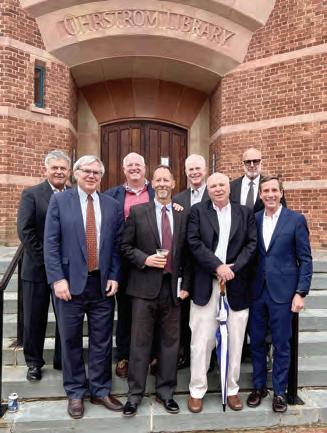
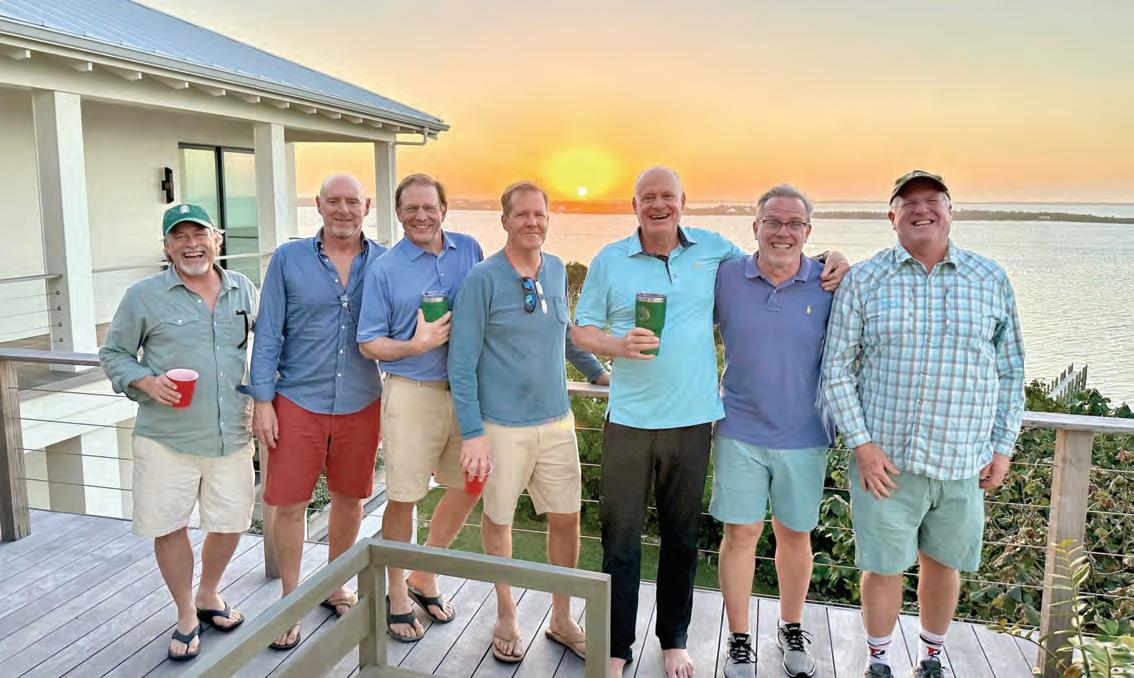
Art Dwight shared that it was “Great to see Marc Dancer at the Deerfield Inn!” (right)
“Classmates Stacy Aliapoulios, Jeff Knisley, Reed ‘Pin’ Webster, Eric Sachsse, John Christel, Geordie Lunt, Jon Wakely, and Art Dwight gathered at St. Paul’s School in Concord, NH, to remember and celebrate the life of William Tobias “Toby” Brewster.”—Art Dwight
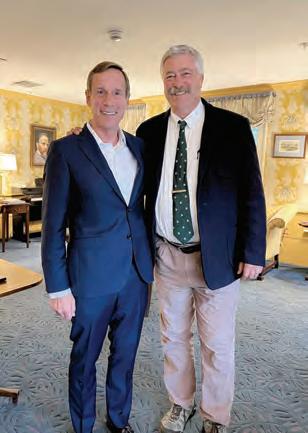

Heesun Lho, director of programs for the Tory Burch Foundation, gets to live her dream by helping others live theirs. Started in 2009 by the famed designer of women’s clothing and fashion accessories, the foundation empowers female entrepreneurs.
“I get to dream and design and collaborate with my team, putting together programs, resources, and digital tools that support women in their entrepreneurial journeys, and those journeys have come in so many different forms in nearly four years of being here,” she says. “I’ve grown our portfolio of offerings and expanded the flagship 50-women program, now in its eighth year of inviting 50 women to a year-long engagement with a $5,000 education grant for each grantee. I wanted to curate it as much as possible to their business’s needs.”
A strength, she says, is that the foundation’s help is industry agnostic. “It could be that we’re helping an Alaskan fishing company, an AI company, a gluten-free bakery, a beauty brand. It all makes sense because everyone is there to be in a community, help one another, and be there for their growth—whatever that growth may look like.”
The success stories from the programs Heesun has been a part of abound; collectively, the fellows have surpassed natural averages in business success rates and raising venture capital. Many have reached the $1 million mark in annual revenue. “We help them focus on what might be their next goal for business growth and prioritizing how they’re using resources,” she says. “We tap into our network and our connections specifically for the next milestone, whether helping to get them into a big retailer like Nordstrom or Target or helping to get them in front of strong VCs for possible funding or at least get them the feedback that will help them move forward faster.”
Heesun’s own experiences and challenges in entrepreneurship helped grow her knowledge and the desire to help others; from 2013 to 2015, as co-founder and CEO of Vengine, a mobile discovery platform, she admittedly found it rough going. “So many businesses fail,” she says. “You put your hopes and dreams into it, and it may end up not working for all sorts of reasons you don’t see coming. You have scars that heal, you learn your lessons, and I learned things to help other people succeed.”
Heesun found Deerfield to be a place where she was encouraged to embrace learning for the sake of it, and not have to set her future in stone. “They wanted you to expand your mind and realize the answers might come over time,” she says. “Community, which is in what I do today, was such an important part of Deerfield, just learning from different students and getting a chance to grow as a person. I had a chance to do community service, for example, going to the local elementary school to read to the kids. Deerfield offered good opportunities for me to be in different leadership positions, whether as a proctor, head tour guide, or tutor. The opportunities were what you made them.”
It set her up for Stanford University, where, while pursuing a master’s in education after receiving her bachelor’s degree in human biology, she had a chance to be co-president of BASES (Business Association of Stanford Entrepreneurial Students), a 5000+ student-strong community at the time, putting on events, bringing in business leaders, and setting up partnerships.
“It was student-run, and it spanned the entire university, not just undergrad, and it was a great chance in higher education to test yourself, take risks, and learn,” she says. “The school was a part of the entrepreneurial movement. It was a win-win situation for those who might want to be entrepreneurs in the future or had an idea they wanted to pursue while at school. It allowed me to work with professors and partner across other universities. We divided and conquered: I did the outward-facing work, and another co-president did the internal work. We sought sponsorships from different organizations outside school, getting people to advise and mentor students—companies actually created different programs for students—and organized campus-wide events. We brought Steve Ballmer, the former CEO of Microsoft, to speak. We even created a course through one department that could be taken for academic credit. I learned so much in so many ways!”
Heesun was VP of Projects from 2009 to 2013 at YouNoodle, a startup evaluation platform. While executing a pilot program for entrepreneurs and serving as project lead for entrepreneurship campaigns, such as Intel and Imagine H2O, she discovered her university experience a plus. “We were selling this platform to different universities and had amassed innovation hubs around the world,” she says. “When a large corporation would come and ask what innovation looks like in India or Eastern Europe, we could tap into our vast university network to say we do have these pockets of entrepreneurs globally, giving us a leg up to work with these larger corporations. One of the aspects I found interesting was having a chance to work on social entrepreneurship. A co-founder (Rebeca Hwang) of YouNoodle told me I would love it, and I was excited to learn you could have an impact this way.”
Heesun is excited to help the Tory Burch Foundation further improve in helping entrpreneurs better understand cash flow principles, tell the story of their business, better understand who the customer is, and create long-lasting habits for a healthier business.
“The pandemic has become partly a silver lining to be responsive and flexible to the needs of the community,” she says. “I’m grateful to work on and continue to expand our Women of Color grant program and business plans. The base is widening of what capital does for a business at different points in time. We want to insert our foundation’s superpowers in education and community—you see, for example, artisans, creatives, and those in the hard sciences who have great talent and can use that help in entrepreneurial knowledge.”
Heesun is even back in the entrepreneurial mix, dipping her toes in the water on the side as a venture partner with Republic (republic.com), and also finds time to be on the Board of Governors for the Center for Creative Leadership.
“The headlines on shows like Shark Tank may make people think everyone needs a venture capitalist or investor onboard, and it’s not how it always has to be,” she says.
“I love helping others reach their dreams just as I’ve had dreams of my own—this present role has been a huge one that has come true. We can take that word ‘entrepreneurship’ and make it less scary, more hopeful, and even powerful. People are creative; sometimes, like so many of us, they need a little direction.” //
Heesun Lho ’04 uses her own entrepreneurship-related experience to help others navigate theirs.
Eric Sachsse shared sad news, “On March 16, surrounded by his wonderful wife Becca, his beloved sons Will, Eli, Peter, and Seth, and his dear brother Seth ’78, we lost one of the truly good ones—one of the very best, in fact— we lost Toby Brewster At Deerfield, many of us will remember Toby as the swimmer who not only vanquished the competition (he took ‘our foes shall vanquished be’ very seriously) but also regularly schooled Jenkins, Guppy, Harding, Karb et al, leaving them coughing water in his wake. Many will remember Toby as the cross-country stud who similarly dominated the competition and regularly left classmates Hunt, Rowe, and the other Deerfield also-rans (who I believe, like their swimming brethren, won multiple championships!) eating his dust. Many will remember Toby as the true editorial and intellectual force behind the award-winning Deerfield Scroll, even though Knisley held the fancy title. But most of us will remember Toby as one of the kindest, most self-effacing, sincere, caring, and generous of heart people we’ve ever known . . . not a mean or disingenuous bone in his body. And we’ll never forget his impish, mischievous smile and his endearing and infectious signature laugh. After Deerfield and following Toby’s four years at Dartmouth (with about 20 of us from Deerfield)—a humorous sidenote about that: Dartmouth accepted 26 ’79s and, in the ignominious tradition of ‘rather be rowdy than cum laude,’ we misbehaved so noticeably during our freshman year that Dartmouth Admissions accepted only five ’80s the following year! Anyway, after Dartmouth, Toby embarked on a life dedicated to educating and serving
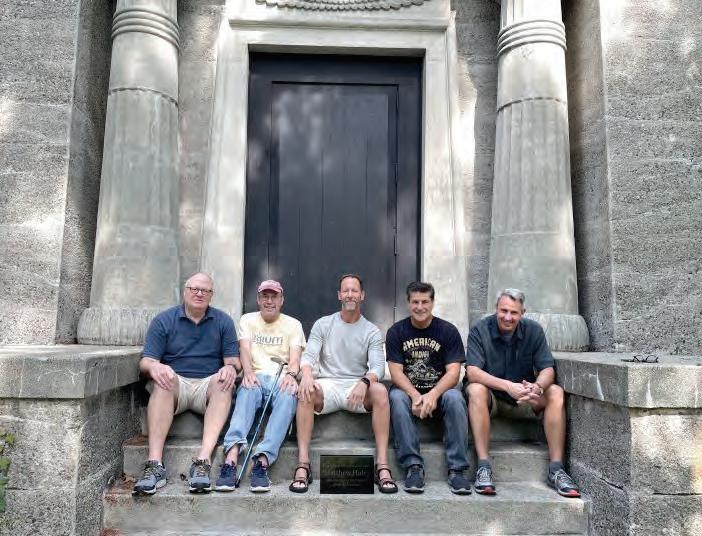

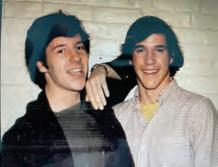

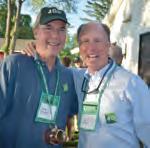
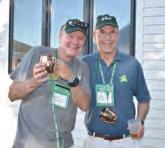

others. He taught English at Deerfield before moving on to St. Paul’s School where he and Becca were beloved teachers and administrators for decades, raising their boys right there on campus where the entire Brewster family became an institution within an institution. Toby also coached cross-country running and nordic skiing at St. Paul’s, leading his teams to championships in both, if memory serves. But for all of Toby’s many accomplishments, what was most important to him were his deep friendships and, above all else, the love of his life, Becca, his pride and joy four sons, and his brother Seth, whom he idolized. Toby, we take heart and comfort knowing that you are no doubt smiling that impish grin at us right now, and we’re smiling right back at you my friend, just as we will every time we think of you. We are all honored to be able to call you our friend.
On-shore breeze quiets
As shadows lengthen, light fades
Eve’s calming embrace
Rest in peace, William Tobias Brewster. We love you brother.
1980
David Pardus shared, “I’m excited to be running in the 2023 Boston Marathon to honor my mom, who passed away on the morning of the 2022 Boston Marathon.
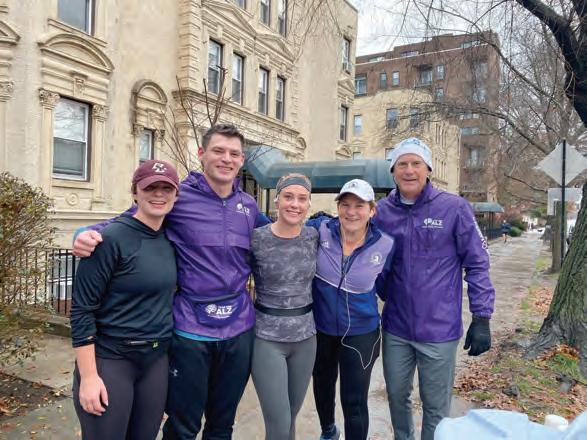
(above)
1981
“Had a great trip to Nashville in March to celebrate the 60th birthday of the infamous Chris Knisley. Had a bunch of Class of ’79s, ’81s and ’82s in attendance to rock out to Yacht Rock Revue. Good time was had by all. Thanks to Knise for throwing an absolute ragger!”—Sam Bayne
“The US Grand Jury Prize: Documentary went to Going to Mars: The Nikki Giovanni Project, a powerful documentary diving deep into the life and legacy of the celebrated poet Nikki Giovanni, and fusing archival footage and interviews with live readings of her poems and visual treatments. Regi Allen, two-time Emmy Award-winner, contributed in his role of post-production designer and featured editor.” —Regi Allen
1983
“Sharing some news about a new venture called The Commons, a food hall that has recently opened in my hometown of Steamboat Springs, CO. If any alums are visiting, please look me up.” —Adam
Feiges80 82
I will be running with my oldest daughter Elysse, my younger sister Sue and her two children. Will be fun to hand off the baton to the next generation as it will be my 15th marathon, Sue’s fifth, and it will be the first marathon for each of the kids. In the process we hope to raise $100,000 for the Alzheimer’s Association in honor of my mom, who battled this disease for twelve years.”
’81s and ’82s celebrate Chris Knisley’s 60th l to r: Jeff Knisley ’79, Hank Smith ’79, Chris Delorey ’81, Chris Knisley ’81, Leigh Madden ’81, Eric Targgart ’82, Mark Falcone ’81, Sam Bayne ’82, Somers Cooper ’81, Mark McInerney ’81 and Ian Murray ’82.

university.
hail



students
nations,
undergraduates spend their four years living and learning in seven cities around the world rather than on a US college campus.

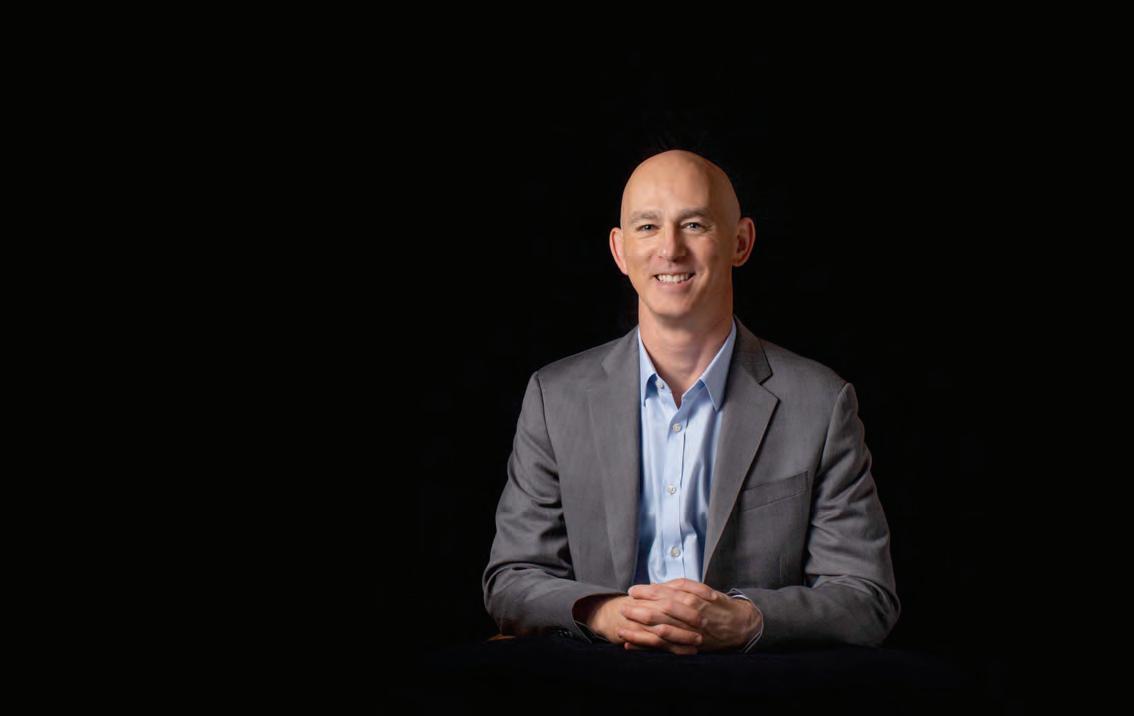
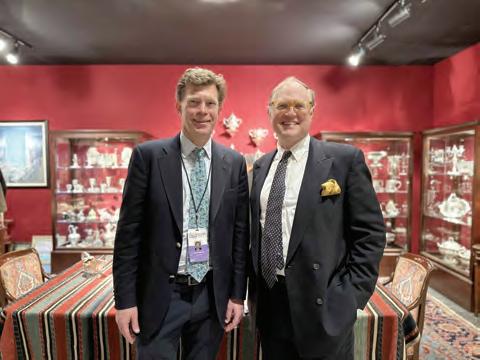
“It was fantastic to meet Claire Chauvel ’13 on a site visit in Kenya to my wind farm Kipeto Energy. Deerfield alumnae, 20 years apart! Claire works for the World Bank in Nairobi; based in Cape Town, I cover the Middle East and Africa for my firm. Loved finding the Deerfield connection so far from Main Street.” —Lisa Pinsley

I hope we’ll soon have Deerfield alums joining us!”
John Knight ’83 recently shared that the Shorenstein Center on Media, Politics and Public Policy awarded Shawn Donnan the 2022 Nyhan Prize for Political Journalism.
A native of Northampton, MA, Paul Johnson Calderon (left) was an East Coast person for many years. After Deerfield, he attended Trinity College, Hartford, and as a young professional, he worked in New York City at various publications in fashion journalism. In 2016, Paul’s concerns about the direction of the country compelled him to switch gears. He moved to San Francisco and became active in local politics, working for the board of Supervisors in City Hall. It was there that one of the local lobbyists who also served as the president of the board of directors of the Mental Health Association of San Francisco (MHASF) approached Paul about joining her at the MHASF. She knew from his LinkedIn profile that he had helped design the Deconstructing Stigma campaign for McLean Hospital in Belmont, MA. That campaign features billboards with photographs and profiles of individuals who face mental health challenges and is displayed prominently in Logan International Airport, among other venues. Paul had faced his own mental health challenges and had become involved with the Deconstructing Stigma campaign after he was treated at McLean. He says, “When I left treatment there, I’ve never felt better. I wanted to make sure that treatment, advocacy, and awareness are available to everybody.” He joined the MHASF Board and has helped develop new programs and expand outreach, with a particular focus on people of color, as well as underserved and vulnerable communities.
left: On March 11, 2023, Jack Chen married Tianyun “Swan” Zhang in Sanya, China.

l to r: Michael Hauge ’08, Tianyun “Swan” Zhang (Jack’s wife), Jack Chen ’08, Yetong “Mandy” Xiang ’23 (Jack’s niece), Leo Deng ’08
2023 Cambridge celebration of 2013’ers
l to r: Justin Schlacks, Maggie Morse, Thomas Cowan, and Nicky Rault—and their families—celebrated the completion of their Masters degrees in Cambridge, MA. They all agreed that they were who they were, only more so!

During his tenure, the organization started a virtual support group called RealTalk targeted to the Black, Indigenous, People of Color (BIPOC) community. With Paul’s involvement, the MHASF has expanded its WarmLine, a peer-run and peer-staffed support service that is available 24/7 to provide counseling and support to anyone who needs it. As Paul notes, people with mental health issues are more amenable to hearing about their options and more open to treatment when they are connecting with someone who has faced their own issues. The goal now is to raise money to expand the WarmLine service beyond the Bay Area (into all of California) and perhaps beyond. Stay tuned!
“Baby Win bleeds green! (see left) 2022 was a big year for the Barkers! In August, we moved from Greenwich Village (our home for the last eight years) to Carnegie Hill, and on December 15, we welcomed our son, Edwin “Win” Chatterton Barker, into the world. Big sister Nell (who was two in April) adores her baby brother, and both can’t wait to show their DA pride at mom’s 20th Reunion next year!” —Barkley Hickox

Equine veterinarian Stephanie (Olchowski) Vassar began her undergraduate studies at Boston College as an economics major with an eye to running her own business in the marketing and sales sector. But she quickly realized that office life didn’t suit her and switched to a pre-vet/pre-med track. “I grew up in Western Massachusetts with a love for animals and life in a rural community,” Stephanie explains. “I knew that as a vet, I’d have the chance to work outside around animals and experience something different every day, and that appealed.”
In the intervening years, Stephanie’s career has progressed at a gallop. Today she runs her own practice—Great Falls Equine and Veterinary Services in Shelburne Falls, MA —and she couldn’t be happier. “I majored in economics and minored in chemistry, earned my veterinary degree at the University of Pennsylvania, and I’m now running my own business as I always wanted,” she says with a smile in her voice. “Everything worked out.” Stephanie admits the path forward hasn’t always been clear, or easy. “When I graduated from vet school in 2013, I wanted to focus on horses, but at the time there weren’t a lot of equine jobs available—the demand for specialists just wasn’t there,” she recalls. “I was also eager to return to Western Massachusetts to be near family, but there were no jobs in the area, so I took a position at a small animal and equine practice in Glastonbury, CT.” Vassar quickly realized the job wasn’t a good fit. “I really wanted to work in a dedicated equine practice, so nine months later, I moved back to Massachusetts and launched my own.”
Starting a solo practice so early in her career was a bit unconventional, Stephanie concedes, but once again following her instincts proved to be the right decision. “Solo practices fell in popularity for a while, but they’re on the rise again now, and this practice model offers me the work/life balance I desire,” she explains. Furthermore, Stephanie notes, current demand for equine vets outstrips supply, ensuring that she need not worry about finding patients. “I have between 700 and 800 horses in my practice, 400 of which I see pretty consistently,” she notes. “I have clients in Hampshire and Franklin counties in Massachusetts as well as in southern New Hampshire and southern Vermont. I’m busy.”
Indeed, Stephanie never finds herself sitting in an office or repeating the same task day in and day out. Most days she’s on the road, shuttling between backyard barns at private homes and larger boarding and riding facilities. “On a busy day, I’ll see eleven horses

at six different barns and in an average year, I’ll put about 40,000 miles on my vehicle,” she notes. Her services encompass everything from wellness care—exams, vaccinations, dentistry, supporting sick horses—to sports medicine. And Stephanie is setting her sights even wider. In 2021, she and her husband purchased a farm in Shelburne, MA, and are now in the process of renovating the property’s historic mid-nineteenth-century barn into a clinic space for the practice.
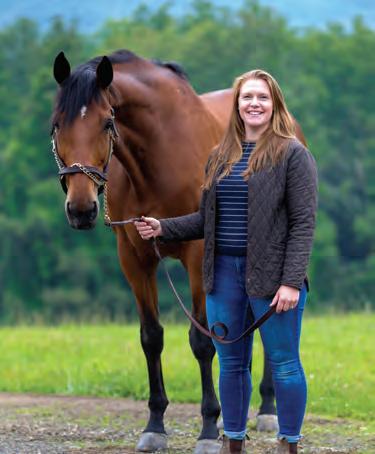
Stephanie is confident the need for her specialized services justifies the growth. “We have a diverse riding community in our area, so my patient population varies widely. I see everything from dressage and eventing horses to western performance horses that engage in activities such as barrel racing, roping, and reining. I also see horses that have a job, for example, lesson horses or those that pull wagons.”
The health concerns that Stephanie addresses run the gamut, too, from soft tissue injuries like tendon and ligament issues to joint-related problems such as arthritis. She also provides strength and conditioning treatments to keep these equine athletes in their best shape so they don’t suffer injuries in the first place. “I played Division 1 ice hockey at Boston College and experienced firsthand the importance of the support we received as student athletes,” she explains. “Horses are athletes as well, so I want to give them the support they need.”
This enhanced support extends to complementary medical treatments including motion palpation, spinal manipulation, and equine acupuncture. “Acupuncture and chiropractic care are becoming more common in equine practices and they’re particularly popular in Western Massachusetts where these types of holistic modalities are quite common for humans,” observes Stephanie. Such treatments are all part of helping horses stay fit and do their jobs, she says. “Horses are highly intelligent and athletic creatures that develop strong bonds with their owners and riders. My goal is to support that bond.”
Stephanie’s enthusiasm for sustaining the symbiotic relationship between her clients and their horses reflects a commitment to community like that she experienced at her alma mater. “Deerfield’s sense of community is unmatched,” she asserts. “The dedication of the teachers and the coaches is remarkable; as a student, it was clear that they were there to support my success.”
Today, Stephanie is paying that sense of support forward in her own unique way. And she credits her time at the Academy for helping her realize success. “My days at Deerfield equipped me with a strong work ethic and time management skills that have worked to my advantage,” she concludes. “Attending Deerfield is a family tradition—my siblings, my dad, and several of my uncles are alums, too. I’ll always be grateful for my time there.” //
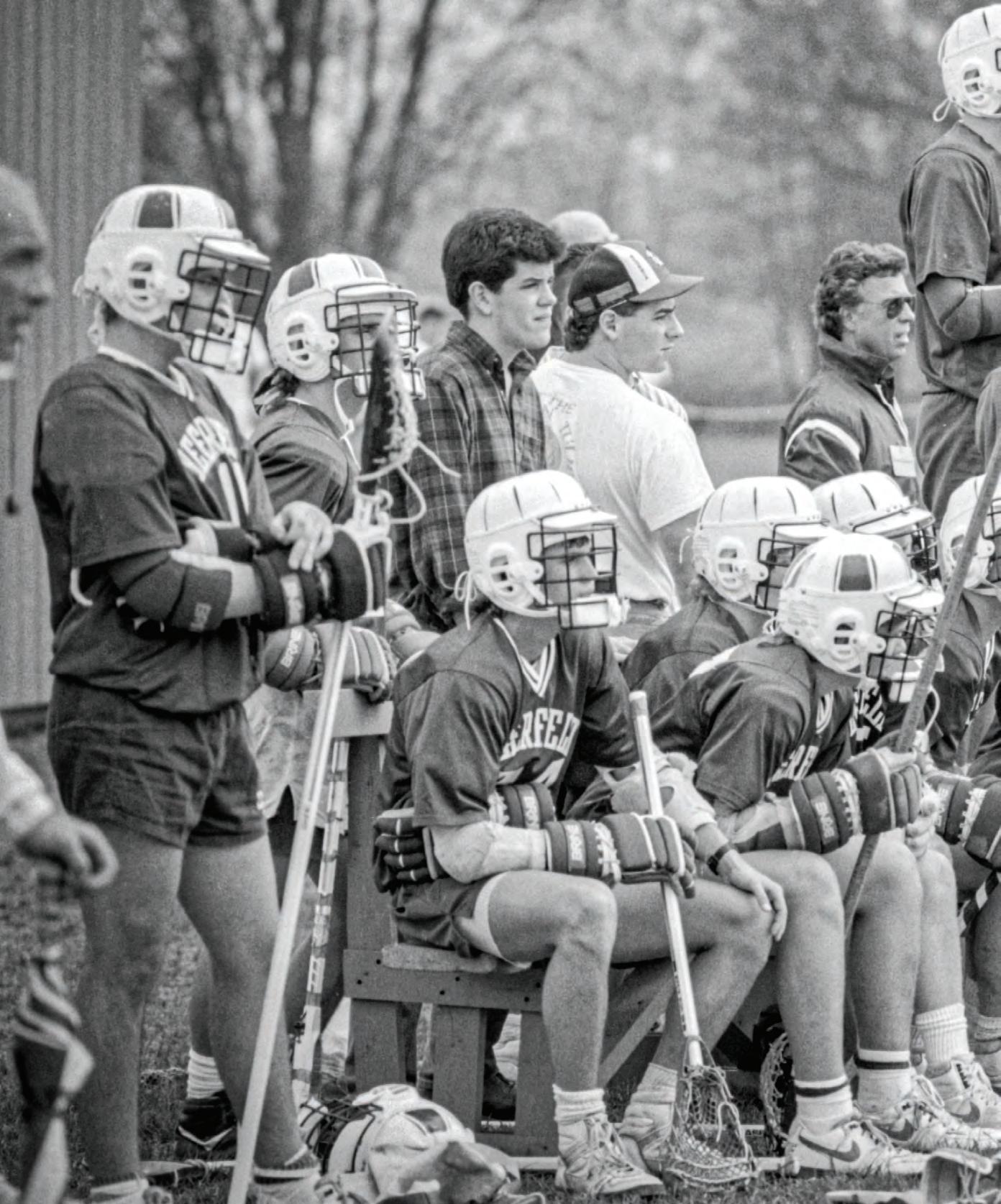


When you’re on the road at least thirty weeks out of the year playing on the PGA Tour, getting a text from your old Deerfield buddy the night before a tournament means a lot. Brandon Wu spent much of his adolescence in the Pioneer Valley between Eaglebrook School and Deerfield Academy. The bonds he formed during his time at Deerfield are his closest, eclipsing his college friendships—something you often hear from Deerfield graduates. “It’s a special time in our lives where we’re still kind of young and growing up together,” says Brandon, reflecting on what makes Deerfield friendships so extraordinary. “I thought it was quite interesting that I’m not a unique case, because I have many other friends who are very close with their Deerfield friends. Some are still roommates after all these years.”
The “Wu-Tang Clan” or the “Wooligans,” a few of the names by which Brandon’s growing global fanbase calls themselves, include his Deerfield classmates who set up group chats to follow “B Wu” while he’s playing tournaments. “Every Sunday he’s in contention, we’re always on nervous group Facetimes. It’s exciting, but golf can be stressful!” says Matt Hrabchak ’15. Any golf fan knows the nail-biting stress the sport can inflict, but the anxiety and the excitement multiply exponentially when it’s your good friend making the cut—and for every success, there are instances of missed cuts and lonely plane rides back home. “Watching him progress through the pipeline leading to the PGA has been surreal and stressful at times,” notes Jamie Kjorlien ’15, who always texts Brandon after—never during—his rounds, especially when he’s making a good run. “In the early stages of his career, traveling alone to tournaments where there weren’t many fans surrounding him, I imagine Brandon could feel isolated at times. Just letting him know people are rooting for him can go a long way.”
Brandon’s path to the PGA Tour began in his hometown, a suburb east of San Francisco, at almost seven years old, when he and his father took golf lessons at nearby courses. During his three years at Deerfield, Brandon played on the golf and swim teams and earned a spot on the men’s golf team while attending Stanford University. “Growing up as a kid, I always thought it would be kind of cool,” says Brandon as he considers the point at which he made the decision to pursue golf as a career. But it wasn’t until halfway through his senior year at Stanford that he decided to go pro. As someone with an engineering background, Brandon logically considered his options. “I’ve seen a lot of college athletes end up turning pro because they feel it’s the only step next for them or, even worse, because they don’t know what to do after graduation. I needed to make sure I chose for the right reasons: I had the talent and the ambition.” It took a lot of work to get to where he is today. “It definitely feels like Brandon had more pressure as a college graduate with aspirations to play on the PGA Tour than the athletes living that dream,” says Kjorlien. “I’ve struggled plenty and I’ve only been a pro for three or four years. There were plenty of struggles and difficult times,” says Wu, thinking back on what it took to propel him to where he is now, one of the world’s 125 elite PGA card holders. When most of his friends moved to San Francisco and New York City after college to start their careers, Brandon spent much of each year traveling for tournaments and training. “I thought that sounded kind of cool, right? Go to the office, have coworkers you really like working with. I felt a little like I was missing out on that.”
The life of a golf pro comes with a grueling travel schedule and a certain level of unpredictability. “I think we spend more days on the road than any other professional athlete,” says Wu. “It’s weeks at a time.” During a tournament week, on Mondays through Wednesdays the players practice rounds to gain a sense of the course. Thursdays through Sundays are the tournament days, with cuts taking place on Thursdays and Fridays; only half the golfers playing that week continue to Saturday and Sunday. “It’s very important to make the cut because you don’t make any money if you don’t make the cut.”

Now, four years out of college, Brandon Wu is living his dream. “We’re all so proud and will be behind him his entire career,” says Hrabchak. “I think anyone of his caliber is exciting to watch, but it makes it even better knowing we’re rooting for a friend who’s genuine, caring, and an all-around fantastic person.” Brandon’s best advice for anyone who wants to turn a passion into a career: an unwavering belief in your ability to accomplish what you’ve set out to do. “You’ve got to believe in yourself because it’s so easy—and I’ve gone through so many phases of my career—to doubt. You start to wonder, ‘Am I doing the right things; am I working hard enough; is this exactly what I want to be doing?’
It’s important not to waver on your self-belief because that’s your main driving force and what’s going to propel you to be able to pursue your passions.” That, and good friends. //
“Every Sunday he’s in contention, we’re always on nervous group Facetimes. It’s exciting, but golf can be stressful!” says Matt Hrabchak ’15. Any golf fan knows the nail-biting stress the sport can inflict, but the anxiety and the excitement multiply exponentially when it’s your good friend making the cut.

1951 George Walker Rodormer * April 17, 2023
1953 George G. Atkeson April 21, 2023
Tyler Halsted
July 11, 2022
1954 Philip Telesphor Starck
May 25, 2023
1955
Alfred L. Hobart
April 19, 2023
John William Spurdle Jr. April 24, 2023
1956
Robert August Benson March 17, 2023
1957
John N. Ott III April 5, 2023
1958
Norman S. Atwood Jr. * May 26, 2023
Gerald J. Stout II
March 24, 2022
Edward Urquhart
April 15, 2023
Stephen D. Wolanske
January 18, 2022
1959
Edward G. Hixson Jr. February 19, 2023
1960 Sidney W. Glover January 19, 2012
Robert R. Wolanske
April 25, 2023
1961 Michael H. Annison
March 30, 2023
Terrence D. Marr March 29, 2023
Charles Henry Schaffner III May 2, 2023
1962 James A. Walker March 18, 2023
1963 Ralph E. Penny * March 10, 2023
1965
Stephen T. McKallagat May 6, 2023
1966 Philip S. Doughty * April 9, 2023
1968 Jay L. Sicre No Date Found
1969 James G. Duguid November 10, 2020
1970 Richard B. Roberts July 8, 2022
1972 David A. Zewinski May 23, 2023
1974 Stacey DeCamp Jr. March 13, 2019
1985

Peter T. Esty Jr. April 8, 2023
* Member of Boyden Society
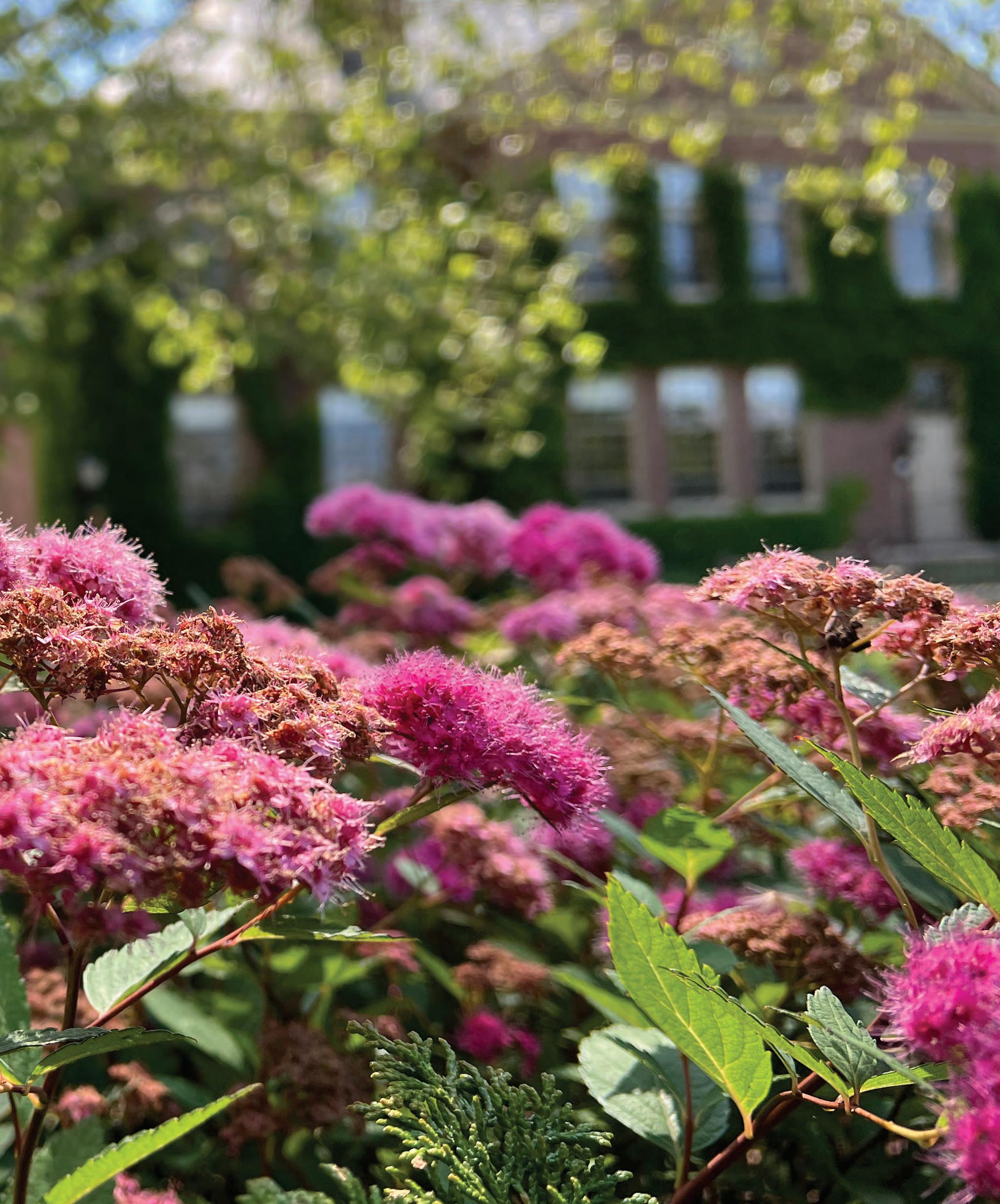
We are in the process of digitizing the film collection housed in the Deerfield Academy Archives. There are approximately 750 reels of moving image film from the 1920s through the 1980s Subject matter includes athletics, Commencement, arts, the Boydens and other faculty, various student life activities, traditions, town scenes and landmarks, and general campus scenes. This collection not only captures various Academy moments in time, it is a cultural art form in itself, unique and irreplacable. Digitization will not only save the artifacts, it will make them accessible for the first time in many decades. //

https://deerfield.edu/about/archives/film-collection


